






2020 MASTER:SirChristopherGreenwood,GBE,CMG,KC,MA,LLB (1978: Fellow)
2017 PRESIDENT:NCarroll,MA,MB,BChir, Joint Director of Studies in Clinical Medicine and Consultant Radiologist in the Department of Gastroenterology
1984 JRPatterson,MA,PhD, Praelector, Director of Studies in Classics and Associate Professor in Ancient History
1987 MEJHughes,MA,PhD, Pepys Librarian, Director of Studies and University Affiliated Lecturer in English
1990 BJBurchell,MAandPhD(Warwick), Professor of the Social Sciences
1990 SMartin,MA,PhD, Senior Tutor, Admissions Tutor (Undergraduates), Joint Director of Studies in Mathematics and Professor of Pure Mathematics
1993 TNHarper,MA,PhD, College Lecturer in History and Professor of Southeast Asian History (1990: Research Fellow)
1994 NGJones,MA,LLM,PhD, Joint Director of Studies in Law and Professor of English Legal History
1995 HBabinsky,MAandPhD(Cranfield),FREng, Tutorial Adviser (Undergraduates) and Professor of Aerodynamics
1996 PDupree,MA,PhD, Professor of Biochemistry
1998 SKFStoddart,MA,PhD, Director of Studies in Archaeology and Professor of Prehistory (1986: Research Fellow)
2000 TACoombs,MA,PhD, Joint Director of Studies in Engineering & Manufacturing Engineering and Professor in Electrical Engineering
2001 HAzérad,MA,PhD, Joint Director of Studies in MML and Professor in French
2003 ALHadida,MA,PhD, Director of Studies in Management Studies and Associate Professor in Management Strategy
2004 CSWatkins,MA,MPhil,PhD, Tutor, College Lecturer and Professor of British History (1998: Research Fellow)
2004 ALDuBois-Pedain,MJur(Oxon),DrJur(Humboldt,Berlin), Assistant Dean, Joint Director of Studies in Law and Professor of Criminal Law and Philosophy
2005 SCMentchen,MA, Tutor, Joint Director of Studies in MML and Professor in German
2007 SJMorris,BA(Newcastle), Senior Bursar and Steward
2007 RMBurnstein,MB,BS(Sydney),PhD, Assistant Tutor for Postgraduate Students, Joint Director of Studies in Clinical Medicine and Head of School of Anaesthasia, Addenbrooke’s Hospital
2008 GPPearce,BVSc(Bristol),MA,PhD(Leeds), Director of Studies in Veterinary Medicine and Associate Professor in Farm Animal Health and Production
2009 CBrassett,MA,MChir, Deputy Senior Tutor, Joint Director of Studies in Medical Sciences, Teaching Professor of Human Anatomy and University Clinical Anatomist
2010 MJWaithe,MA(Leeds),PhD(London), College Librarian, College Lecturer and Professor in English
2010 CDLloyd,MA(Kent), Development Director
2010 RLRoebuck,BA,MEng,PhD, Joint Director of Studies in Engineering and University Senior Design Engineer (Teaching)
2010 AKBennison,BA,MA(Harvard)andPhD(London), Director of Studies in Asian and Middle Eastern Studies and Professor of the History and Culture of the Maghrib
2011 L C Skinner, BSc (Queen’s, Canada), MPhil, PhD, Tutorial Adviser (Postgraduates), Joint Director of Studies in Natural Sciences (Earth Sciences) and Professor of Earth Sciences
2012 E K M So, MA, PhD, Director of Studies in Architecture and Design and Professor of Architectural Engineering
2014 W Khaled, MSc (London), PhD, Joint Director of Studies in Natural Sciences (Biological) and Professor in Pharmacology
2014 A Ercole, MA, PhD, MB, BChir, Joint Director of Studies in Medical Sciences
2015 T Euser, MSc, PhD (Twente), Joint Director of Studies in Natural Sciences (Physics) and Associate Professor in Applied Physics
2015 J M Munns, MA, MPhil, PhD, FSA, Tutor, Director of Studies in History of Art and Associated Professor of History and Art History
2016 S A Bacallado, BSc (MIT), PhD (Stanford), Admissions Tutor (Access), Joint Director of Studies in Mathematics, College Lecturer in Pure Mathematics and Assistant Professor in Pure Mathematics and Mathematical Statistics
2017 SDubow,DPhil, Smuts Professor of Commonwealth History
2017 SJEglen,BSc(Nottingham),DPhil(Sussex), Joint Director of Studies in Mathematics and Professor of Computational Neuroscience
2018 JOrr,MEng,PhD, Joint Director of Studies in Engineering & Manufacturing Engineering and Professor in Concrete Structures
2018 SAtkins,MA, Dean of Chapel
2018 PLane,MA,PhD, Professor of African Archaeology
2021 SRavenscroft,PhD, Admissions Tutor (Undergraduates), Director of Studies in Theology, Religion & Philosophy of Religion and College Lecturer in Theology (2019: Fellow-Commoner)
2021 AEJMills,MA,BCL(Oxon), Dean, Dias College Assistant Professor and Joint Director of Studies in Law
2021 GalloE,AB(Harvard),MPhil,DPhil(Oxon), Director of Studies in Economics
2022 KOkkenhaug,BSc(Victoria,BC),PhD(Toronto), Tutor for Postgraduates Students and Professor of Immunology
2022 LFisher,MA(StAndrews),MBA(Leicester),PhD, Director of Studies in Education and Professor of Languages Education
2023 ABryan,BAandMA(York), PhD (King’s College London), Director of Studies in Philosophy and Isaac Newton Trust Career Development Fellow
1960 PJGrubb,ScD, Emeritus Professor of Investigative Plant Ecology
1962 RHyam,LittD, Emeritus Professor of British Imperial History; Archivist Emeritus
1964 PEReynolds,ScD
1968 HisHonourCFKolbert,MA,PhD
1968 NBoyle,LittD,FBA, Emeritus Schröder Professor of German
1971 RJSSpence,MA,PhD, Emeritus Professor of Architectural Engineering
1979 EDuffy,KSG,DD,FBA,FSA, Emeritus Professor of the History of Christianity
1984 NRushton,MD, Emeritus Professor of Orthopaedics
1984 HAChase,ScD,FREng, Emeritus Professor of Biochemical Engineering
1981 MACarpenter,ScD, Emeritus Professor of Mineralogy and Mineral Physics
1989 TSpencer,MA,PhD, Emeritus Professor of Coastal Dynamics
1992 KPatel,MA,MScandPhD(Essex)
1990 JRRaven,LittD,FBA,FSA,FLS, University Affiliated Lecturer in History
1996 THClutton-Brock,ScD,FRS, Emeritus Prince Philip Professor of Ecology and Evolutionary Biology
2001 ARThompson,MBE,MA,MPhil
2001 SHalper,BA(Stanford),PhD
2004 EHCooper,LittD,FBA, Emeritus Professor of Medieval and Renaissance English
2010 ERothschild,CMG,MA, Honorary Professor of History
2019 MCSkott,PhD
Professor Tony Cockerill died on12 June 2023. There will be an obituary in the next CollegeMagazine.
2010 PMSteele,MPhil,PhD, Senior Research Fellow in Classics and Principal Research Associate at the Faculty of Classics
2017 ANeumann,MA,PhD(London), Senior Research Fellow in German
2019 SCaputo,MsC(Edinburgh),PhD, Senior Research Fellow in History
2020 ABaez-Ortega,MSc(LaLaguna),PhD, Senior Research Fellow in Biological Science
2020 FIAigbirhio,MA,DPhil(Sussex), Senior Research Fellow in Biomedical Imaging and Professor of Molecular Imaging Chemistry
2021 DLDunkelmann,MSc(Zurich),PhD, Nevile Research Fellow in Biology
2021 PAsimov,AB(Brown),MSt(Oxon),PhD, Lumley Research Fellow in Music
2022 TLicence,MA,MPhil,PhD, Senior Research Fellow in Medieval History (1999: Research Fellow)
2022 HJMarshall,MA(Brown), PhD, Director of Studies in Sociology and Lumley Research Fellow in Criminology
2022 BPeng,BSc,MSc(Fudan), Nevile Research Fellow in Physics
2022 ALefauve,MSc(UniversitédeTechnologiedeCompiègne),MSc(Ecole Polytechnique)PhD, Senior Research Fellow in Mathematics
2022 AFialkov,MScandPhD(TelAviv), Senior Research Fellow in Cosmology and Astrophysics, and Professor in Astronomy
2023 MKelleher,BA(UniversityCollegeCork),PhD(BostonCollege), MRIA, Parnell Visiting Fellow in Irish Studies
2023 GGiovannetti-Singh,MPhil,PhD, Lumley Research Fellow in History
2023 M-RIvan,MMath,PhD, Nevile Research Fellow in Mathematics
2023 GNeff,AB(Columbia),MPhil(CityUniversityofNewYork),PhD (Columbia) Senior Research Fellow in Sociology
2022 CMacKenzie,MA(Oxon),MEd(Sydney),PhD(ANU), Director of Studies and Teaching Bye-Fellow in Land Economy
2022 ZBond,MEng,PhD, Director of Studies and Teaching Bye-Fellow in Chemical Engineering
2022 JHauge,BSc(Trondheim),MSc(SOAS),PhD, Teaching Bye-Fellow and Assistant Professor in Political Economy
2023 NBridsonHubbard,BA,MPhil, Bye-Fellow in Sociology
2023 FRigby,MPhys(Dunelm), Bye-Fellow in Astronomy
2023 AIPesci,MSPhysics,PhD(LaPlata,Argentina), Teaching Bye-Fellow in Mathematics
1990 RLSkelton,MA
1997 AIJValluy-Fitzsimons,Diplôméedel'ISIT(Paris)
2002 JJHellyerJones,MA,FRCO, Honorary Assistant Organist
2011 CNSpottiswoode,BSc,PhD, Senior Research Fellow in Biological Sciences
2011 MRWRands,BSc,DPhil(Oxon), Master of Darwin College
2012 PJMarsh,MPhil
2014 CHFoord, Assistant Bursar
2014 RVChartener,AB(Princeton),MPhil,MBA(Harvard), Chairman of the Magdalene Foundation
2015 ARitchie,KC,MA, College Advocate
2015 CVSBrasted-Pike,MSc,PhD, Joint Director of Studies in Natural Sciences (Biological)
2017 HCritchlow,PhD, Outreach Fellow
2020 LMasuda-Nakagawa,PhD(Tokyo), Joint Director of Studies in Natural Sciences (Biological) and Teaching Fellow in Neurobiology (2018: Bye-Fellow)
2020 FSchuery,MA(Clermont-Ferrand), Teaching Fellow in Portuguese (2018: Bye-Fellow)
2022 JMPotter,MA(Oxon), Director of Music and Precentor
2023 DASFergusson,OBE,DD,FRSE,FBA, Regius Professor of Divinity (2022: Senior Research Fellow)
2023 VVitaliev,DiplomaofTranslator,Philologist,andTeacherofEnglish (Kharkov),DiplomaofPatentologist(Moscow) (2021: Royal Literary Fund Teaching Bye-Fellow)
2023 MThompson,MA,PhD
1984 HRHtheDukeofGloucester,KG,GCVO,MA
1984 ProfessorSirJohnBoardman,OBE,MA,FBA,HonRA
1992 ProfessorSirDavidHopwood,MA,PhD,andDSc(Glasgow),FRS
1997 ProfessorHHVendler,AB,PhD(Harvard),HonLittD
1999 JCF-Simpson,CBE,MA,FRGS
2001 SirColinCorness,MA
2001 ProfessorSirRichardJolly,KCMG,MA,andPhD(Yale)
2002 ProfessorSirJohnGurdon,PhD,HonScD,HonDSc(Oxon),FRS
2005 DJHMurphy,MA, Bursar Emeritus
2005 ProfessorSirDavidCClary,ScD,FRS, Joint Director of Studies in Natural Sciences (Chemistry)
2005 TheRtHonLordMalloch-Brown,KCMG,PC,MA
2005 RWHCripps,AM
2008 TheRtHonLord(Igor)Judge,PC,MA,HonLLD
2009 TheRtHonSirAndrewMorritt,PC,CVO,MA
2009 RHVignoles,BA,BMus,ARCM
2009 TheHonWongYan-lung,SC,MA,JP
2012 KhoonHongKuok,BA(Singapore), Pepys Benefactor Fellow
2015 ProfessorDameSMSpringman,DBE,PhD,FREng
2015 CIvonChristierson,BCom(Rhodes),MA
2015 HRH,SultanDrNazrinShah,BA(Oxon),PhD(Harvard)
2015 LLCardozoKindersley,MBE,HonLittD
2015 DameCarolADuffy,DBE,BA(Liverpool)
2018 ATennent,BA,MIB
2018 TCripps,BA,MBA
2020 TheRtRevd&RtHontheLordWilliamsofOystermouth,PC,DD, HonDCL(Oxon),FBA
2020 ProfessortheLadyWilliamsofOystermouth,MA
2020 TheRtHontheBaronessHaleofRichmond,DBE,LLB,HonFBA
2020 MCNewell,BA
2020 TheVeryRevdDrDMHoyle,MBE,MA,PhD,FSA
2020 CBMDerham,MA
2021 M D Moorman, BA (Bucknell), MA (St John’s College, Annapolis), MA (Georgetown),MPhil, Pepys Benefactor Fellow
2021 APSchultz,MA,MSci, Pepys Benefactor Fellow
1999 AnthonyBloom 2007 DatoIsaBinIbrahim
1999 SirAnthony O’Reilly 2009 ColinDay
1999 Lady O’Reilly 2010 MargaretHiggs
2000 ThomasMonaghan 2011 LadyBraybrooke
2000 ChristopherSmart 2015 AllenZimbler
2003 ClaireTomalin,HonLittD 2019 DavidFyfe
2003 DrHelenLee 2022 YenHowTai
2003 JackVettriano

SaraCaputo, Foreign Jack Tars: The British Navy and Transnational Seafarers during the Revolutionary and Napoleonic Wars (2022) byJR Raven 146
HannahCritchlow: Joined-Up Thinking: The Science of Collective Intelligence and its Power to Change Our Lives (2022) byJames Woodall 148
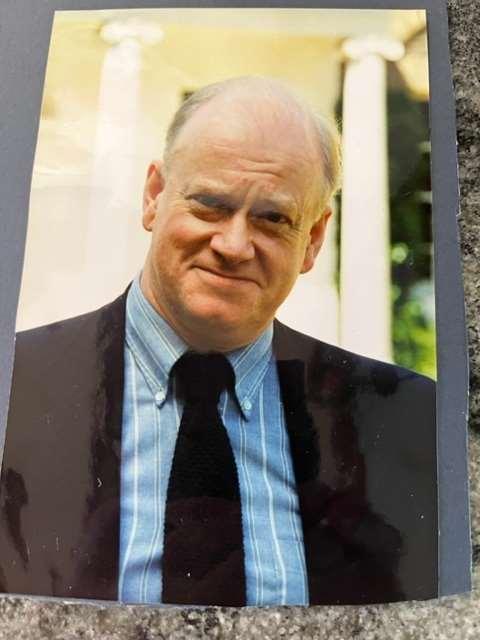
This issue is edited by Professor Raven, assisted by Mrs Fitzsimons, Jo Hornsby, and Ishbel Bruce.
Looking back on 2022–23, one can only feel mixed emotions. The year got off to a very good start, with welcome dinners for our new undergraduateandpostgraduatestudentsunimpeded – forthefirsttime in two years – by the need to observe COVID restrictions. That was followedbythenewsthattheNewLibraryhadwontheStirlingPrizefor Architecture. The Stirling Prize is the Royal Institute of British Architect’s most prestigious award and the New Library is the first building in a Cambridge college to have won this coveted accolade – a triumph both for Niall McLaughlin and his team of architects and for all those in the College who played such an important part in bringing the projecttofruition.
It is therefore a source of great sadness to the whole College that Duncan Robinson, who as Master played such an important part in the library project, died only a short time afterwards, without having seen the finished library. More detailed tributes appear later in the Magazine but I cannot write this introduction without adding a personal note of gratitude to Duncan for all that he did for the College, and of sympathy toLisaandtheirfamily. ItisamarkofthehighesteeminwhichDuncan was held that his memorial service was attended by over three hundred people, with His Majesty the King and Her Royal Highness Princess Alexandrabothbeingrepresented. Anothersadandmorerecentlossthis year is our Life Fellow, Professor Tony Cockerill,1 who played such an important part in the teaching of Economics in College right up until his deathinJune2023.
It has been a great delight to see several Fellows of the College honoured in different ways which all reflect the very high academic standing of the College. Our Honorary Fellow, the distinguished lettercutterLidaCardozo Kindersley,wasawardedanHonoraryDoctorateof LettersbytheUniversity,swellingtheranksofthoseentitledtowearfull scarlet on high days and holy days. Five Fellows were promoted to Professor and a sixth to Principal Research Associate (details in the FellowshipNews). ProfessorPaulDupree,whostandsdownafteralong and very successful term as Postgraduate Tutor, has been elected to the
1 ProfessorCockerill’sobituaryisinprogressandwillbepublishedinnextyear’s Magazine.
European Molecular Biology Organization. Many congratulations to all ofthem.
I would normally follow with a comment on the academic achievements of our students. The national examination marking boycott, however, means that we have fewer than half the total examinationresultsatthetimeofwriting. Whatwehavelooksgoodbut we must await a fuller picture before any comment would be appropriate. A particularly unfortunate result is that many final year students have so far been unable to graduate. Since the dispute is a national one and examinations and the grant of degrees a matter for the University, the College has been powerless to affect a situation we all recognise as most unsatisfactory. We were, however, able to go ahead withtheendofyearcelebrationsthankstoaninnovativeapproachbythe University and our Praelector, which created a ceremony to mark the completion of studies for all final year students and their families, together with thecustomary dinnerand celebrations inCollege.
The generation of students affected by the boycott is of course the one which has been hardest hit by the pandemic. It is a matter for real pride that this ‘plague generation’ has been so mutually supportive and determined to make the most of Cambridge. Since they are also the group who started their time at Magdalene at the same time as I became Master, I confess to having had a large lump in the throat as I saw them leave. Mywifeand I wishthemallsuccessfor thefuture.
Thestudentsinallyearshavecontinuedtoexcelinsomanyways. Wehavehadabumpercropofblues,half-bluesandcoloursinUniversity sports as diverse as rugby, rowing, basketball, cycling and athletics. It was a particular delight that four members of the College were in the lightweightcrewswhichachievedagrandslamagainstOxfordthisyear. The College’s musical tradition has been wonderfully maintained with some excellent performances by the Choir both in College and during their Italian tour, as well as a number of individual successes in various music competitions in Cambridge. For the second year running, members of the College are taking a show to the Edinburgh Fringe. It was also good to see the return of the Magdalene May Ball which was enjoyedbyall present.
In conclusion, I would like to thank Professor Brendan Burchell, who is standing down as President and taking a much deserved sabbatical. I am most grateful for the invaluable assistance and wise
counsel which he has given me during the last two years and look forwardto working withhissuccessor,DrNickCarroll.
SirChristopher Greenwood

DUNCAN ROBINSON, CBE
HonoraryFellow, Master 2002–12
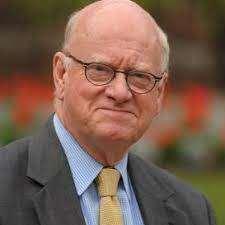
David Duncan Robinson, CBE, DL, FSA, MA and MA (Yale). Born 27 June 1943. Educated at The King’s School, Macclesfield, Clare College, Cambridge, and Yale University (Mellon Scholarship); Assistant Keeper, Fitzwilliam Museum, 1970–76; Chair of the Exhibitions Committee, Kettle’s Yard, Cambridge, 1970–81; Fellow of Clare College, Cambridge, 1975 (Professorial Fellow, 1995–2002, Fellow Emeritus, 2002)). Director of the Yale Center for British Art and Chief Executive of the Paul Mellon Centre, London, 1981–95; Director and Marlay Curator of the Fitzwilliam Museum, 2002–12; Master of Magdalene College, 2002–12 (Honorary Fellow, 2012); Trustee of the Henry Moore Foundation (2006–14, Chair 2008–14) and the Royal Collection (2006–12); Chairman of the Trustees of the Prince’s Drawing School (2006–13); Deputy Vice-Chancellor (2005–12) and Deputy Lieutenant of Cambridgeshire (2004–15). Married Elizabeth Anne (Lisa) Sutton, 1967; two daughters, one son. Died 2 December 2022, aged 79.
Reading through the tributes and obituaries that have appeared since Duncan Robinson’s death on 2 December last year, a number of words reappear.1 ‘Charismatic’isoneclearfavourite;anotheris‘indefatigable’. Mention of his ‘legendary hospitality’ is de rigueur. Anyone who knew Duncan will recognise the adjectival accuracy of ‘encouraging’, ‘passionate’, ‘genial’, ‘generous’, ‘warm-hearted’, ‘trusted’ or ‘unflappable’ as readily as reference to his gift for friendship, his clarity of vision, or his winning – even ‘relentless’ – charm (one obituarist also credits him as ‘an expert composer of obituaries’). All of these observationsaretrue. Weshouldprobablyaddmodestytothem. Forall his gregariousness, confidence and infectious joie de vivre, Duncan’s estimation of his own achievements was more limited. He would occasionally question his place in the magisterial genealogy between a Nobellaureateandaformerarchbishop;althoughhewastheonlyperson to whom the question could have occurred. Where he had ambition, it wasprimarilyforthepeopleandinstitutionsthatheloved,andhisreply to a student reporter’s question about his greatest professional achievement –‘becomingMasterofMagdalene’– wassincerelymeant(if alsoevidenceofhisoft-noteddiplomaticskills:itwashisjobatthetime).2 But Duncan was so much more than the ‘amiable figurehead’ of his own estimation. He was a curator and teacher of rare talent, a distinguished scholar and public servant, and a visionary, transformative leader of threeworld-classinstitutions. It’struethathealsomixedalethalmartini. David Duncan Robinson was born on 27 June 1943 in Kidsgrove near Stoke-on-Trent. His father, Tom, was killed in a London air raid whenDuncanwastwoyearsold. Thereafter,hiswidowedmother,Ann, raised him with the support of an aunt and uncle on their Staffordshire farm. At the age of eight, he was sent to board at the King’s School in Macclesfield,andfromtherehewonaplaceatClareCollege,Cambridge,
1 This obituary draws on material from The Times (21 Feb 2023), The Telegraph (14 Dec 2022), and The Burlington Magazine (165/1442, May 2023, pp 578-80), the Yale Center for British Art (https://britishart.yale.edu/news-and-press/memoriam-duncan-robinson-cbe-1943-2022), Kettle’s Yard (www.kettlesyard.co.uk/collection/recollection/interviewee/duncan-robinson), the Paul Mellon Centre (https://www.paul-mellon-centre.ac.uk/about/news/duncan-robinson19432022/ page/1), the personal website of Charles Saumarez Smith (www.charlessaumarezsmith.com/2022/12/06/duncan-robinson), and the addresses delivered by Margaret Greeves, Frank Salmon and the Master at Duncan’s memorial service in Great St Mary’s on 22 April 2023.
2 The Cambridge Student (25 Nov 2005) cited in Coll Mag, 56, 2021, p 11.
to read English. It was a move that shaped much of the rest of his personalandprofessional life.
It was at Clare that Duncan discovered that he ‘liked running things’, which was fortunate because he was very good at it. It was also atClarethathemadeconnections –onedirectly,theothernotyetdirectly – with two remarkable collectors of British art. The first was Jim Ede, who,withhiswifeHelen,hadrecentlyboughtfourcottagesjustnorthof Northampton Street and reformed them into Kettle’s Yard. Ede established an open house each afternoon, to which visitors were welcomed on a personal tour of his remarkable collection, with a select numberinvitedtoremainbehindfor theritualofafternoontea. Duncan wassoonaregularand,beforelong,oneofthefewpeopletrustedtolook after the house and collection when the Edes were away. By his own admission,JimEdebecamesomethingofafather-figure,andelementsof hisvisionofKettle’sYardasaplacewhereartcouldbecontemplatedand enjoyed in relaxed domesticity surely lived on in Duncan’s own later curatorialphilosophy. InEde’sencouragementofundergraduatestosee art as part of everyday life – albeit with a critical familiarity designed to cultivate deep enquiry – can be seen something of the approach of Duncantheteacher.
His place at Clare also gave Duncan the opportunity to take up a two-year Fellowship to study the history of art at Yale after graduation. Paul Mellon, the great American collector of British art, had done things theotherway around:readingEnglishat Clareafterhis initial studies in NewHaven. TheFellowship,which thrivestothisday,wasMellon’sgift to his almae matres in the hope that others might similarly benefit from these two institutions. Few could have satisfied the founder’s hopes as readilyasDuncan. PaulMellonwastobecomeafriend,andCambridge and Yale the alternating focus for the rest of Duncan’s career. Most importantly of all, it was as at Yale that he met Lisa Sutton. They married in 1967 and returned to Cambridge shortly afterwards. Duncan’s appointment as an Assistant Keeper at the Fitzwilliam Museum in 1970 coincided with the establishment of an independent History of Art Department in the University under Michael Jaffé, who three years later succeeded David Piper as Director of the Fitzwilliam. Jaffé’s vision for the teaching of art history at Cambridge was firmly centred on first-hand engagement with the Museum’s collections, and curatorialstaffwere activelyencouraged tocontribute toundergraduate
teaching. In 1975, Duncan added a Fellowship and College Lectureship at Clare to his portfolio. He was promoted to Keeper of Paintings and Drawings in1976.
During this initial decade at the Fitz, Duncan was able to develop his teaching and curatorial interests in tandem. The Italian trecento provided an initial academic focus, leading to early publications, and an undergraduate course on ‘Painting in Central Italy, 1300-1350’ that introduced the subject to a generation of influential art historians. Sir Charles Saumarez Smith credits it with initiating him into ‘the pleasures of intensive research’, and recalls the young teacher-curator as ‘one of those people who did a ton of work without ever showing off about it’. SaumarezSmithrepresentedHMtheKingatDuncan’smemorialservice in April. Duncan’s interest in medieval Italy never entirely left him. He wouldgoontopublishanessayontheciviciconographyofSienain1986, and as late as 2012, when he was on the verge of retirement and the Department found itself suddenly short of a medievalist, an unsolicited email arrived in the inbox of the then Head of Department: ‘Let me help outifIcan. Icouldtakeadeepbreathandorganiseacoursetosubstitute. ...Ihaven’tmentionedthistoanyonebecauseyoumaythinkIwouldlack credibility in a field in which I have not published for thirty years. On the other hand, I do think I could put together a perfectly respectable undergraduate course’. Ofcoursehecouldandhe did.

But it was with the field of British art from the eighteenth century to the present day that Duncan would become most associated, his 1975 Apollo article on ‘Burne-Jones, Fairfax Murray and Siena’ providing something of a transition in print. In 1976 he organised a hugely successful touring exhibition on Stanley Spencer. A monograph, Stanley Spencer: Visions from a Berkshire Village, followed in 1979 and established Duncan as a leading expert on Spencer’s art. It was republished in an expanded edition
in1990. Yearslater,thesuccessfulacquisitionofoneofSpencer’sstudies for The Centurion’s Servant (1914) would provide a moment of particular satisfaction during his directorship of the Museum. Other important exhibitionsorganisedduringhisearlierFitzwilliamincarnationincluded Morris and Company in Cambridge and William Nicholson for the Arts Council, both in 1980, and Town, Country, Shore and Sea: British Drawings and Watercolours from Anthony Van Dyck to Paul Nash in 1982, which touredtoAustralia. Throughoutthisperiod,hechairedtheKettle’sYard exhibitions committee, and several years of service on various of its panelsculminatedinhisappointmenttotheArtsCouncilofGreatBritain in1981.
In fact, by the time Town, Country, Shore and Sea set sail for Queensland,YalehadcomecallingonceagainandDuncanandLisahad departed Cambridge in the opposite direction. Duncan was Paul Mellon’s choice as the third Director of the Yale Center for British Art. Opened in 1977, the YCBA had come to be celebrated as much for its landmarkbuildingasforthebuilding’scontents. Mellon’scollectionwas remarkable but unfashionable, and its presentation still a work in progress. Byhisownaccount,thefirstthingthenewDirectordidwasto ‘throw out allthe pot plants’. Longer-term,hisstrategywastwo-fold:to broaden appreciation of the collection, and to encourage the donor to expand further its range, most notably in the direction of the twentieth century. Thebondoftrustandfriendship thatDuncanforged with Paul Mellon also paid personal dividends: for decades afterwards, Duncan signalled his especial approval of an evening’s discourse by the appearance of a bottle from his stock of pre-prohibition Old Overholt, distilled by Mellon’s father at the turn of the twentieth century. The directorship of the Yale Center was combined with an ex officio role as chief executive of the Paul Mellon Centre in London, where his relationship long outlasted his time in post. He also held an adjunct professorship of art history at Yale University, where Eric M Lee, now a distinguished museum director himself, recalls that Duncan’s eloquence ‘and the fact that he was an actor at heart’ made for ‘extraordinarily dynamic’ lectureson British art.
AfterfourteenyearsinNewHaven,theSyndicsoftheFitzwilliam MuseumsucceededintheireffortstolureDuncanbacktoCambridgeas their new Director and Marlay Curator. His then deputy has described Duncan’s stewardship of the Fitz as ‘a golden era’, during which he
patiently changed the museum’s culture. She recalls him drawing a previously disparate team together, ‘like a magnet exerting influence upon iron fillings’. Duncan’s own description of his directorial style as that of an ‘unashamed populist’ was really an acknowledgement of a qualitythatempoweredhimthroughouthiscareer – incollegeaswellas in museum – namely, a genuine interest in people. For Duncan, art mattered in so far as it mattered to people. If a curatorial risk stood the chanceofforginganewencounter betweenpeopleandart, thenitwasa risk worth taking: ‘In the end, I am just an old-fashioned Victorian evangelist when it comes to the arts. I believe these things can change people's lives.’

Words, of course, change their connotations over time. Just as there was no intellectual compromise in Duncan’s understanding of ‘populist’, there was no room for anything staid in his embrace of the Victorian: the evocation was of industrious innovation, cultural evolution and expansive tradition. As his obituarist in The Times
observed, Duncan managed to combine ‘the highly articulate modern museumofficialand the chuckling academic’ to extraordinary effect. At the same time as new publics were welcomed into the Fitzwilliam, diverse and impressive acquisitions continued (an area in which, as the samewriternoted,‘Robinsonensuredthemuseumunfailinglymanaged todofarbetterthanitmighthaveseemedtohaveanyrightto’)andJohn Golding and Anthony Caro were brought in to transform the twentiethcentury gallery. John Miller’s fine Courtyard Extension, in Duncan’s words, ‘put lungs and light into the southern end of the building’, with first-class visitor facilities, teaching and conservation studios, and modern spaces for temporary exhibitions. Perhaps most importantly of all, the museum became a place where visitors felt welcomed (Duncan recalled his particular pleasure on first hearing people laughing in the galleries), and the Director, who walked the halls each morning, knew eachmemberof staff byname.
These were skills that Duncan was to bring to Magdalene in abundancewhen – tohisconsiderablesurprise – hewasappointedasthe College’s 34th Master in 2002. No memorialist can avoid mention of the natural generosity – and capacity – that made him a host of rare and extraordinarytalent,butitistooeasytoglossthisasmerelyanenjoyable boon. In fact, it was a manifestation of the same qualities that underlay his broader successes which were, in turn, the characteristics that underpinned his conception of collegiate life: an energetic embrace of humane curiosity, the forging of friendships, expansive welcome and robust encouragement. As he had at the Fitzwilliam, the new Master routinely ‘walk the halls’ of the College site. He not only knew everybody’s name, but in many cases understood their situation in life, their families, achievements, worries and concerns. Somehow, he managedtocombineapatricianbearingwithwarmapproachabilityand acompletelackofpomposity. Itwasprobablythetwinkle. Notaskwas considered sub-magisterial (he edited this Magazine for five years from 2009–10 to 2013–14 and was almost unique amongst Heads of House in directing studies in his subject). He conversed with nervous Freshers withthesameeaseashedidthepatronoftheRoyalDrawingSchool. The Telegraph’s observation that ‘he was able to bring off the almost impossible feat of being equally beloved by Fellows and students’ was almost spot on; it is just short of reference to the College staff who, for Duncan,weretheheartofthewholeoperation.
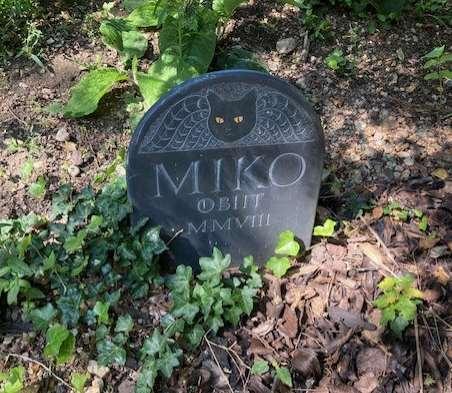
Again, however, alongside the bonhomie came a clear-eyed and determined vision for the College’s development. In her memorial address, Margaret Greeves observed that Duncan’s description of his Fitzwilliampredecessor DavidPiper – ‘one of the most utterly charming men I ever met …. careful to respect his colleagues and at the same time to get his own way’ – could be applied just as well to Duncan himself. Working with the College officers, he ensured that a Long Range Plan wasproducedandadoptedbytheGoverningBody:academicstandards weretorise,theDevelopmentoperationexpandedandprofessionalised, and major new capital projects set in train. True, he did not always get his way over certain building and refurbishment plans and the Governing Body curtailed certain enthusiasms (to his great but passing annoyance) but the impact of the Robinson Mastership on the College’s built environment was more positive than any since Willink or Benson. Cripps Court was completed during his time, and the New Library project begun. An occasional Bensonian flourish was even added at his own expense: witness Lisa’s monogram (ESR) on the side gate to the Master’s Garden(seep7)orthefunerary commission of Eric Marland in honour of Miko the cat and intended to revitalise the Victorian pets’ cemetery. He designed the new street gates for the Master’s Lodge himself, incorporatingsubtle references toMagdaleneiconography.
Of course, any hint of compliment or credit for Magdalene’s successes was immediately met with an insistence that his was but one part of a large team effort and that the major laurels should be directed towards others. In the first part he was undoubtedly right, but the leadership and a good deal of the energy came from the top. Whether the library project would have got off the ground but for his personal partnership with Robert Cripps (another distinguished collector of British art) is difficult to know. Duncan could also lead a team: finding therightpeopleforthejobandgivingthemthespacetodo it; providing
injections of challenge or encouragement as required; and maintaining gazeonthedirection set.
Some of this work took place in the committee room; much of it was enacted over the dinner table or in Combination. Few Cambridge lodges can have been as vibrant and fun-filled as the Master’s Lodge at MagdaleneduringtheRobinson years. Duncanwas rarelyhappierthan when acting as host, whether in the Lodge or Combination Room. His enjoyment of company was infectious, and his and Lisa’s generosity seemed limitless. The benefits extended well beyond Magdalene – on discovering that the History of Art Department had no budgetary provision for staff and graduate students to socialise, Duncan and Lisa provided it: regularly, expansively, and in unforgettable style. Social occasionswithDuncanweregreatfun,butthesewereoftenalsothetimes that would allow him to draw out a Fellow’s rankle or an undergraduate’s worry.
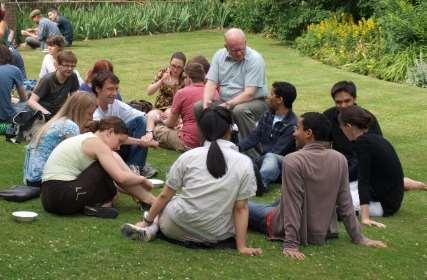
Many people might consider either a college Mastership or a museum directorship to be sufficient occupation in itself. For nearly five years Duncan managed both before stepping down from the Fitzwilliam in 2007. He also continued with the departmental teaching to which he had long since returned, carrying a load only slightly less than that of a full time teaching officer. He supervised a succession of distinguished graduate students and directed undergraduate studies for both his
colleges. At the same time, he served on the board of The Burlington Magazine, the management committees of Kettle’s Yard and the William BlakeTrust,asatrusteeofYaleUniversityPressinLondon, asPresident of the Friends of the Stanley Spencer Gallery and as a vice-president of NADFAS. In 2005 he was appointed a deputy vice-chancellor of the University. Atoneofhisseveralretirementpartiessevenyearslater,the thenVice-chancellorwoulddescribeDuncanashisgo-todeputy,because he rarely refused a request and executed the office with an aplomb that few others could match. As his work at the Museum drew to a close, Duncan imagined that he might have time on his hands, so in 2006 he joinedtheboardoftheHenryMooreFoundation(becomingchairmanin 2008) and became a trustee of the Royal Collection. The following year hetookoverasChairmanoftheTrusteesofthePrince’sDrawingSchool.
A glance at Who’s Who shows that he served on at least thirty-nine external boards, councils and committees over the years, more than a dozenaspresident,chairman,secretaryortreasurer,andwithanaverage service of nearly eight years on each. He was appointed as a Deputy Lieutenant of Cambridgeshire in 2004, allegedly on the grounds that the numberofroyalsvisitingthemuseumhadbecomesuchthatitwaseasier to commission Duncan to receive them himself than for the Lord Lieutenant to find the time. If he came to understand that not everyone was endowed with his capacity for hard work and good cheer, Duncan remained perplexed by those in whom he perceived a deficient commitment to the common good. His energies were recognised with a CBE in the Queen’s Birthday Honours List of 2008.
On retirement from the Master’s Lodge in 2012, Duncan and Lisa movedfirsttoElyandcontinuedtoplayafullpartinCollegelife. Elected to an Honorary Fellowship, the former Master remained a popular fixture at alumni and Development events, and began the long-overdue process of producing a proper catalogue for the College art collection, donatingafewadditionalitemsofhisownforgoodmeasure. Twoyears later, he and Lisa decided to move back to the United States, but with a commitmenttosubstantialannualvisitstotheirMagdalenehome,where theyslottedbackintoCollegelife asiftheyhadneverleft. Despitebeing inrecoveryfromhisfirstboutofillness,Duncanwasdeterminedtomake what was to be the last of these visits as the world was masking up in 2020. Hegotouton thefinalLondon-Miami flight beforelockdown. By thetimetheworldre-openedhewastoounwelltotravel,buthekeptup
withprogressontheNewLibraryprojectandhelpedtocuratetheCripps Gallery’sfirstexhibitionsfromafar. ThedonationthatsecuredDuncan’s name for the room that houses his gifted art history collection touched him deeply. That he was unable to attend the opening was a great sadness, but he was ably represented by his children and grandchildren (including baby Rory) of whom he was so proud. The news in his last weeks that the building had won the Stirling Prize left him moved and overjoyed.

Duncan had continued to write throughout his time as museum director and Master, although perhaps not as much as either he or his publicwouldhave liked. He was an assiduouscontributor to exhibition
catalogues that supported the work of contemporary artists he admired, suchasTomWood,TonyFosterandEileenHogan. His2009PaulMellon Lectures at the National Gallery, ‘Pen and Pencil: Writing and Painting in England, 1750–1850’, paid tribute to the background in English literature that he and Mellon had shared. Retirement afforded further opportunities for new research and he returned to Yale for a time as a visiting scholar. His most recent article to appear in print was ‘Gainsborough in London’ (The Burlington Magazine, May 2022), but he wasdictatingadditionstoapieceonReynoldsinthedaysbeforehedied.
Writing in this Magazine at the time of Duncan’s retirement, Professor Hyam described him as anima naturaliter Magdalena, and went ontoobservethat:
It is his delight in simply being here which has made this such a happy, successful and memorable mastership for us all. ... Duncan’sespecialgeniushasbeentodiscernandappreciatewhat each member of the community has to offer, and by encouragement to enable everyone from the Freshers to the most seniorFellowstofeel valued fortheirpresenceinMagdalene.3
Happy, successful, memorable, with a love of community and a genius for encouragement: all this rings very true. On his arrival as DirectorattheFitzwilliamin1995,Duncansaid:‘Iwantthistobealovely palace of art, but it should also be a place of enjoyment in the best sense of the word’.4 Perhaps it is this principle of enjoyment, in its best and fullest sense, that most encapsulates Duncan’s approach: to art, scholarship, debate, responsibility, family and community. Nobody can accusehimofnothavinglivedouthisphilosophy. Thathedidsoinour company was our great good fortune. Generations of the College’s members and friends will remember him with profound respect and the deepestaffection.
JMMunns
3 Coll Mag, 56, 2021, p 11.
4 The initial reference was to his predecessor Sydney Cockerell (1867–1962), who infamously reckoned that he ‘found [the museum] a pigsty [and] turned it into a palace’; the second probably an allusion to Paul Mellon who hoped his Center would attract visitors ‘not only for scholastic purposes but for pure enjoyment’.
Great St Mary's, 22 April 2023
A genial and generous host, a careful and conscientious administrator, a great scholar and a leader with a vision for the College. From the first day of his Mastership he threw himself wholeheartedly into every aspect of Magdalene life. Nobody has ever sported a Magdalene tie with more enthusiasm or more panache than Duncan.
That is all the more remarkable, because he came to Magdalene as Master in 2002 without having had any substantial connection with the College. The 34th Master of Magdalene, Duncan was the last one to be appointed by the Visitor of the College, Lord Braybrooke, under provisions dating back to the re-foundation of the College in 1542. By his own account – lodged in the College Archives – the appointment came as something of a surprise – to him, if not to others. Not long after he was appointed, but before taking office, he visited the Porters’ Lodge to buy a postcard of his new college. On being questioned by the duty porter, Duncan said that he was to be the new Master. The porter replied ‘you look far too cheerful to be a Master!’
It is a tribute to Duncan – and to Lisa, who was by his side throughout – that the cheerfulness survived throughout his ten years at the helm of the College. Indeed, his good cheer and kind, gregarious manner were among the most noticeable features of his Mastership.
Duncan was fascinated by the traditions of his new College and was always keen to revive – or even invent – a tradition. Discovering that the silver vault contained a snuff box – which even in the memory of the oldest Fellow had not been brought out for use – Duncan had it cleaned, filled with a particularly strong snuff and offered to those combining after dinner one evening. This turned out to be one of his less successful experiments. By contrast, a wonderfully successful Duncan tradition was his appearance every year at the Choir’s dinner following the Advent Carol Service, when he would sing the part of Good King Wenceslas in a booming baritone with Bishop Simon Barrington-Ward – fearlessly putting on a falsetto – as the page.
Duncan’s hospitality was legendary, as was the delight which he took in making everyone feel welcome at any event and he knew how to give a good party. When the Fellow who was for many years joint wine
steward with Duncan was asked how the arrangement worked, he replied‘Ilookafterthepurchasing,Duncanlooksaftertheconsumption’.
For Duncan, College life was something to be enjoyed: whether you were there for three years as an undergraduate, three decades as a Fellow or three hours as a dinner guest. Countless students, colleagues and guests over the years felt the benefit of that benign view. On his retirement the students presented him with a book of tributes and reminiscences full of statements about how much they had enjoyed the warm welcome which he and Lisa had given them: the al fresco lunches while watching the bumps, the parties at the Lodge and the invaluable sense of the College being a home fromhome.
There was, though, much more to Duncan as Master than being –to use his own words – ‘an amiable figurehead’. A popular teacher, he was Director of Studies for both Magdalene and his old college, Clare, throughout his time as Master. In this way a generation of students benefittedfromhisscholarship. Others–farbetterqualifiedthanI–will speak of his contributions to the world of scholarship but his teaching was no small part of those contributions. Another part was his public service in the world of art – as Chairman of the Royal Drawing School and the Henry Moore Foundation and a trustee of the Royal Collection, all benefitted from his learned good sense. The College plans to honour his work by endowing a curatorial studentship in History of Art in his memory.
Duncan had great ambitions for Magdalene as an academic institution, with a clear and inspiring vision of how to realise those ambitions. Under his leadership the College steadily mounted the academicleaguetables. ItwasDuncanwhohadthevisiontoseethatthe College would benefit from a new library. It was Duncan who laid the groundwork for that project and it was Duncan who raised the funds necessary to kick-start the project. While many others played critical rolesinbringingaboutthemagnificentlibrarywhichisnowsuchanasset to Magdalene, it is no exaggeration to say that without Duncan it would never have happened.
It is a great sadness that the pandemic and his illness meant that he never saw the finished library. My last exchange with Duncan, a few weeksbeforehedied,wastotellhimthatthelibraryhadwontheStirling prize and to thank him for all he had done to make it possible.
Characteristically, he replied by paying tribute to the contributions of others and saying that this award was for him the ‘nunc dimittis’.
An important part of that magnificent New Library building is a gallery, currently displaying an exhibition of pictures connected with Duncan. Among the paintings on display is the College’s portrait of Duncan from which he smiles out at us all. It was Magdalene’s great good fortune that that smile was bestowed on us – to such delight and such good effect.

President: DR NICK CARROLL
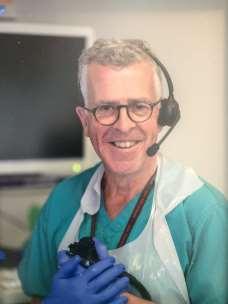
It is with great pleasure and with an enormoussenseofpridethatIamwriting as President elect of the College. I am deeply indebted to my colleagues in the Fellowship for electing me to the role of President commencing in the new academicyear.
First, I would like to pay tribute to Professor Brendan Burchell who has undertaken the Presidency with great passion and skill. He took on the role from Dr Jane Hughes with COVID still dominating daily life and has skilfully steered the Fellowship through the difficult circumstances and pressures that the pandemic imposed on all aspects of college activity. We are indebted to him for his selfless contribution towards puttingtheCollege backonaneven keel.
Originally admitted to the Fellowship in September 2017, I have served as joint Director of Studies for Clinical Medicine and as an undergraduate tutor. Now retired from full-time clinical practice, I am still working part-time as a consultant radiologist and endoscopist at Addenbrooke’s Hospital and continue to enjoy both undergraduate and graduate medical teaching. I continue to take part in research, particularlyinvolvingthetechniqueofendoscopicultrasoundwhoseuse Ipioneered incancer diagnosisand therapyinthiscountry.
As one of the College’s clinical medical Fellows, I was also involvedwiththeCollege’sresponsetothepandemicasamemberofthe ‘Gold Committee’ established to steer the College through this most difficult of times. I am therefore especially glad to be given the opportunity to be President at a time when COVID, we hope, is behind us and no longer stifling College activity and so many aspects of our lives.
IamkeentoseeareturntothemoresociableaspectsofCollegelife and to facilitate the involvement and engagement of the Fellowship at every level. Given the effect of the pandemic on incomes and with the current cost of living crisis, we must be aware of the limitations that financial constraint may impose. I am confident, however, that the Fellowship, working closely with staff, students and alumni, will find waystoenhancetheCollegeandputusinastrongpositionfortheyears to come. I greatly look forward to meeting members of the College at futureeventsandreunions.
NickCarroll

CECILYWHITELEY joinedusasanOfficial Fellow, Director of Studies in Philosophy, and Isaac Newton Trust Academic Career Development Research Fellow in the Faculty of Philosophy. She completed her PhD at theLSEandwasavisitingscholaratthe Centre for Mind, Brain and Consciousness at New York University. Herdoctoralresearchexploredscientific and philosophical puzzles about consciousness, such as how we might study an essentially subjective phenomenon like consciousness adopting third person, empirical methods used in neuroscience. Her current project probes the explanatory significance of what philosophers and neuroscientists term ‘globalstatesofconsciousness’,afamilyofmentalphenomenaincluding dreaming, wakefulness and psychedelic states. When not philosophising, Cecily and her partner Saadhana (a hedge fund associate) spend most of their spare time travelling, cooking, and searching for new wines to enjoy with friends. Originally from Yorkshire, Cecily also loves to go hiking in the Yorkshire Dales with her parentsandbeloved dogErnie.

ALEXANDER BRYAN has been elected a Career Development Fellow in Philosophy. After a BA and MA in Philosophy and Politics from the University of York, he received a PhD from King’s College London, before taking up post-doctoral fellowships at Tel Aviv and Harvard Universities and a Lectureship at Cardiff University. Alex is a political philosopher whose research and publications engage withconceptsoffreedom, questionsofeconomicjustice,anddemocratic theory. Outside of work, he enjoys running and cooking, and has recentlystarteddabbling infilmphotography.
Parnell Fellow

MARGARET KELLEHER is Professor and Chair of Anglo-Irish Literature and Drama at University College Dublin. She has published widely on Irish women’s writings, nineteenth-century Irish literature, famine studies, modern and contemporary Irish culture, and digital humanities. Her mostrecentmonographis the prize-winning The Maamtrasna Murders: Language, Life and Death in NineteenthCentury Ireland (UCDPress,2018)andiscoeditor, with Dr James O'Sullivan, of Technology in Irish Literature and Culture (CUP, 2022). Other books include The Feminization of Famine (1997), The Cambridge History of Irish Literature (2006) and Ireland and Quebec: Interdisciplinary Essays on History, Culture and Society (2016). She is a Board Member of the Museum of Literature Ireland, a collaboration with the National Library of Ireland and situated in Newman House on St Stephen’s Green in Dublin, and formerly home to James Joyce, Kate O’Brien,FlannO’BrienandmanyotherIrishwriters. ApastChairofthe Board of the Irish Film Institute and a member of the Royal Irish Academy, she has held numerous visiting posts including as Fulbright Visiting Scholar at Glucksman House, New York University, and
Cullman Centre Fellow at the New York Public Library. Margaret looks forwardtojoiningtheCollegecommunityandwillworkonabiography ofIrish writers,MaryandPadraicColum.
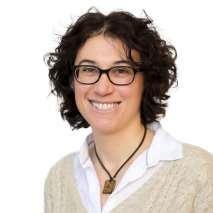
ANASTASIA FIALKOV has been elected a Senior Research Fellow in Astrophysics. Herresearchis focusedon understanding the structure and evolution of the universe across cosmic time. Anastasia graduated from the Technion in Haifa, Israel, in 2006 with a BSc in Physics and a BA in Electrical Engineering. She then continued her studies in astrophysics and cosmology, taking a PhD in Physics from Tel Aviv University in 2013. She held the prestigious Junior Research Chair Fellowship at the International Center for fundamental physics at theEcoleNormaleSuperieureinParis,2013–15,theITCFellowshipatthe Harvard Center for Astrophysics, 2015–18, and the Royal Society University Research Fellowship at the Institute of Astronomy (IoA) in Cambridge, 2019–23, before herappointment there in 2019 as University Lecturer and in 2023 asProfessor ofAstrophysicsand Cosmology.

GIANAMAR GIOVANNETI-SINGH has been elected a Lumley Junior Research Fellow in History. Born in Cambridge, he grew up between there and Cape Town, South Africa. He has a BA in Natural Sciences from Trinity Hall (2018), for which he won the Jacob Bronowski Prize, and an MPhil and PhD in History and Philosophy of Science from Wolfson College (2019) and St Edmund’s College (2023), respectively. Gianamar is a global historian of science, fascinated by the way different cultures interact to create new knowledge. His doctoral dissertation argued that the collapse of the Ming Dynasty transformed several scientific practices across Eurasia. His postdoctoral project
explores how European travellers made sense of unfamiliar natural and indigenous knowledge in early modern Southern Africa. He has held visitingfellowshipsattheMaxPlanckInstitutefortheHistoryofScience in Berlin, the Descartes Centre in Utrecht, and the Royal Society in London, and was a Freer Prize Fellow of the Royal Institution, 2022–23. In his free time, he enjoys cooking, running, learning languages, and travelling.

MARIA-ROMINA IVAN has been elected a Nevile Junior Research Fellow in Mathematics. She arrived in Cambridge eight years ago from a small town in Romania, and took a BA, MMath and PhD at St John's College. Maria specialises in extremal combinatorics, with interests in extremalsettheoryandpursuitandevasion,but her research concentrates on poset saturation, a field growing rapidly since its introduction in 2017, and Ramsey theory which at its core asks the question 'Can we find order in enough disorder?'. Maria writes that ‘mathematics to me is much more than a subject, it is my lifestyle. I grew up competing in olympiads simply because I could not stop thinking about maths questions, and that has never changed’. She continues involvement with olympiads as an international examiner, but is also an avid salsa dancer and enjoys reading medieval history. She is delighted to converse with colleagues inRomanian,Spanish,French,Portuguese,Russian orEnglish.
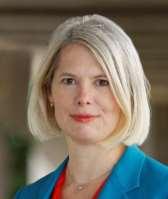
GINA NEFF has been elected a Senior Research FellowinSociology. SheisExecutive Director of the University’s Minderoo Centre for Technology & Democracy which examines the impact of digital technologies at work, in societies and on the planet. Her books include Venture Labor, Self-Tracking, and Human-Centered Data Science (all MIT Press). Gina helps lead UKRI’s £30 million Responsible AI UK programme and the ESRC Digital Good Network. She advises international organisations including UNESCO, the OECD and the US Social Science Research Council, and led the team that won the 2021
Webby for the best educational site, the A to Z of AI, which has reached over 1 million people in 17 different languages and is part of Google’s free online job training platform. She lives with her husband Philip Howard and their teenage sons. In addition to winter wild swimming, she posts a flower picture every day on social media as a ‘long-running experiment innetworked joy’.
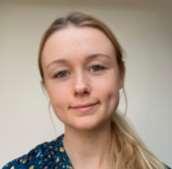
NIAMH BRIDSON HUBBARD has been elected a Bye-Fellow in Sociology. Niamh studied at Magdalene for her BA in Geography (2016–19) and remained at the College for her MPhil in Sociology (2019–20). Her MPhil dissertation focusedonchangestotheBritish labour market since the 1980s and their impact on worker health and wellbeing, and won the Polity Prize forthebestdissertationintheDepartmentofSociology. Followingayear working in the public sector, Niamh returned to Magdalene to begin an ESRC-funded PhD which considers how novel working arrangements suchasjobretentionschemes,hybridwork,andthefour-dayweekaffect employees’ experiences of work. Outside of her research, Niamh is a keenrunner,cyclistandpubquizzer.

FRANCES RIGBY has been elected a Bye-Fellow in Astronomy. Frances completed her MPhys in Physics and Astronomy at Durham University before joining Magdalene for her PhD at the Institute of Astronomy. Her work concerns exoplanet interiors, atmospheres, and habitability, with research focusing on a new class of potentially habitable planets known as Hyceanworldsandcharacterisedbydeepoceans and hydrogen atmospheres. Frances is a co-investigator on an accepted proposal for observing time with the James Webb Space Telescope and study the atmospheres of candidate Hycean worlds. In her department, Frances supervises for Part II courses in Astrophysics and is part of
several committees for postgraduate students. She enjoys coxing for Magdalene Boat Club, as wellas tap dancing and hiking.

ADRIANA IRMA PESCI has been elected a Teaching Bye-Fellow in Mathematics. Originally from Argentina, with a PhD (1986) from the National University of La Plata, she was a postdoctoral researcherattheUniversityofChicagobeforejoining the University of Arizona as Lecturer in Physics in 1999, advancing to Senior Lecturer in 2003. Adriana moved to Cambridge in 2007 as Senior Research Associate in the DepartmentofApplied Mathematics andTheoreticalPhysics. Her main research involves topological transitions in Fluid Dynamics beginning with the study of drop pinching in the late 1990's, and now focusing on thereconnectionofPlateaubordersandthecollapseofboundedminimal surfaces in the context of soap films. Her further research links Fluid Mechanics with Biophysics and the study of flows produced by swimming organisms and the development of equations of motion to describe the self-sustained oscillations of long thin filaments. Adriana’s other interests include painting, and Impressionism in particular. ‘Whenever there is any opportunity’, she writes, ‘I prepare my oils and canvas,and while certainly noVanGogh, Ikeep trying’.
Fellow-Commoner

MARTIN THOMPSON. Martinhasbeenelecteda Fellow-Commoner. HefirstjoinedMagdalene as an undergraduate in 2004 after studying at one of Magdalene’s link schools in Liverpool. After graduation, he spent a year selling wine before returning to academia studying butterfliesattheNaturalHistoryMuseumand completing a PhD in Zoology at Cambridge.
Martin is the Director of Undergraduate Admissions, working across all colleges in Cambridge. He lives just outside Cambridge with his wife Katie (they met at Magdalene) and three children. In his spare time, he isabeekeeperandcanbecalled upon tohouseerrantswarms.
During2022-23, we werepleasedtohave with us:
Professor Darlene Chisholm, American Yip Fellow, who is Professor of Economics at Suffolk University, Boston. She specializes in empirical studies of cultural industries with a focus on competition analysisofthe motion pictureindustry.
ProfessorGiovannaBadnasco,DunbarneyFellowinArchaeology, and a leading scholar of Etruria. With many publications on Tarquinia, its cultural contact and literacy, her research has focused on Etruscan civilisation in the ancient Mediterranean, and its impact on modern cultures.
Professor Colm T Whelan (Fellow 1992–2001) is a Professor of Physics andan EminentScholar at Old Dominion University inNorfolk, Virginia. Hisresearchinterestsareatomiccollision,coincidencestudies, andconfinedandcompressedatoms.
Professor Ariel Orellana, Director of the Center for Plant Biotechnology at the Faculty of the Life Sciences, Andrés Bello University, Chile. His research focuses on the biosynthesis of plant cell wall polysaccharides, and the genomics and proteomics of fruits and plants living under extremeconditions.
TheMasterhasbeenelectedHonoraryPresidentoftheAmericanSociety of International Law at whose annual meeting he gave the Brower Lecture on arbitration. He has attended College functions in Singapore, London,Washington,NewYork,Seattle,SanFranciscoandParis,aswell (ofcourse)inCambridge.
The President’s research into working time reduction attracted much media attention, peaking with the release in the House of Commons of his report on the UK trial of four-day working in January 2023. Since then he hasbeeninvited topresenttheresults of thetrials to numerouslargeaudiencesintheUK,therestofEuropeandtheUS. The coverage was accompanied by the highest ever impact of a Cambridge University research report on social media, with hundreds of thousands
ofvisitstothe Universitywebsite. Ashort videodescribinghis workwas released in May and went viral.
Professor Spence celebrated the 50th anniversary of his election as a Fellow and was given a special lunch in Hall on 20th October by the Master and Fellows.
Professor Raven undertook an extensive speaking tour as Evelyn Wrench Lecturer to the United States; his Oxford History of the Book was published by OUP in April (with TV and radio interviews in 18 countries), a 'simplified' edition of his What is the History of the Book? was translated into Chinese with 600,000 copies printed for use by colleges; and during the year he founded The Lindemann Fellowship Administrative Trust as a registered charity to support and raise outreach funds for The Lindemann Trust (awarding postdoctoral fellowships in the sciences and which he also chairs).
Dr Martin has been promoted to a Professorship in Pure Mathematics. In December 2022, he gave a plenary address at the conference ‘Representation theory, combinatorics and geometry’ at the Institute for the Mathematical Sciences, National University of Singapore.
Professor Dupree was elected a member of EMBO (European Molecular Biology Organization) in recognition of his contribution to life sciences through years of research in plant cell wall biosynthesis and assembly.
Professor Stoddart (co-editor) has published Temple People: Bioarchaeology, Resilience and Culture in Prehistoric Malta: Vol 3 (McDonald Institute for Archaeological Research, 2023)
Dr Hadida won the 2022 Annual Cambridge Judge Business School Excellence in Teaching Award for the third time since the creation of the prize in 2011. In 2022, she became a Mallen Fellow as winner of the Mallen Award for Published Scholarly Contributions to Motion Picture Industry Studies. In 2023, she became a Fellow of the Royal Society of Arts; was invited Faculty speaker and panelist on Virtual Reality teaching and research and on diversity and inclusion in higher education at the Learning and Teaching Spaces Manager Group Annual Conference, Loughborough University; she also became the incoming International Association for Arts and Cultural Management Doctoral Symposium Chair, after ten years as Strategic Management Track Chair (2011–22).
Dr Azerad has been promoted to a Professorship.
Ms Mentchen has been promoted to a Professorship.
Dr Waithe has been promoted to a Professorship. He has published with Lida Cardozo Kindersley (Honorary Fellow) Words Made Stone: The Craft and Philosophy of Letter Cutting (Cambridge: Cardozo Kindersley, 2023) and The Work of Words: Literature, Craft, and the Labour of Mind in Britain 1830-1940 (Edinburgh University Press, 2023), reviewed below (p 143).
Professor Bennison has become a Syndic of the University Press and the chair of the Academic Publishing Committee of CUP and Assessment.
Dr Munns has been promoted to an Associate Professorship in History and Art History.
Professor Orr was awarded the 2022 Philip Leverhulme Prize in Engineeringforhisexceptionalearly-careerresearchincivilengineering.
Dr Khaled has been promoted to a Professorship.
Dr Mills’s paper ‘”Not Like That”: The Interpretation of Policies, Legislation, and Contracts’ was shortlisted for the Best Paper Prize at the Society of Legal Scholars 2022 annual conference.
Dr Jessica Patterson has won the 2022 Constance Blackwell Prize for Religion, Enlightenment and Empire: British Interpretations of Hinduism in the Eighteenth Century (Cambridge University Press, 2021). She has resigned her official Fellowship to take up an appointment at Trinity College, Cambridge.
Dr Whiteley has resigned her Official Fellowship to take up an appointment at the University of St Andrews.
Dr Fialkov has been promoted to a Professorship.
Dr Steele has become a Principal Research Associate.
Dr Caputo has published Foreign Jack Tars: The British Navy and Transnational Seafarers during the Revolutionary and Napoleonic Wars (CUP, 2022), reviewed below (p 146).
Dr Baez-Ortega, Nevile Research Fellow, has been elected to a Senior Research Fellowship.
Professor Fergusson, Senior Research Fellow, has been elected a Fellow-Commoner.
Dr Asimov has been awarded a 2021 Leverhulme Trust Early Career Fellowship.
Mr Mulhall, Parnell Visiting Fellow, has published Ulysses: A Reader’s Odyssey (New Island Books, 2022).
Dr Lefauve started in April 2023 a five-year Independent Research Fellowship funded by the Natural Environment Research Council (NERC).
Dr Vitaliev, Royal Literary Fund Fellow, has been elected a FellowCommoner. He has published Atlas of Geographical Curiosities (Jonglez Publishing) and Borders Up! (Simon & Schuster and Scribner), and contributed articles and columns to Prospect Magazine, The Times, E & T Magazine, Geographical Magazine, and AllWays Traveller. He gave lectures on Europe and the war in Ukraine to the Fellowship, the Royal Geographical Society, and the Letchworth Adult Educational Settlement, and was shortlisted for the British Society of Magazine Editors (BSME) Columnist of the Year Award.
Professor Brasted-Pike has been awarded a National Teaching Fellowship by Advance HE. On 29 June, she gave her inaugural lecture, ‘Doing Exciting Things Well: Quality, Creative Opportunity and Navigation Regulatory Policy in Higher Education’, as Professor of Education and Leadership at Anglia Ruskin University.
Dr Critchlow has published Joined up Thinking (Hodder & Stoughton, 2022), reviewed below (p 148). She took part in the GCSE Science Live Tour engaging with over 10.000 students across the country; participated in ‘Great Minds’ for EBS Broadcast in Korea, ‘Start the Week’ for BBC Radio 4, and various Cambridge Festival events including a panel discussion on climate change, and a Spotlight conversation on Joined up Thinking; she also preached a sermon at Great St Mary’s and took part in the Hay Literary Festival in May.
Dr Schuery has published Mar de Plástico (Cria Editora, 2023). He has been awarded a 2023 Pilkington Prize for excellence in teaching.
Dame Sarah Springman received her insignia and star at Windsor Castle from the Princess Royal; received with her co-authors the George Stephenson medal for analysing the field experiment at Ruedlingen with an advanced constitutive model embedded into a finite element programme replicating the resulting landslide; received Honorary Doctorates from the University of Ghent and the University of Strathclyde; and continues as Chair of the international committee of the Royal Academy of Engineering and is a member of a grant awarding panel for the 1851 Exhibition, in addition to her role as Principal of St Hilda’s College, Oxford. The new College punt was named after her (see p 42)
Lida Cardozo Kindersley received the Honorary Degree of LittD from the Chancellor at the Senate House on 21 June 2023. She designed the stall plate for Bishop Barrington-Ward installed in Chapel in May (see p 55).
Dr Williams published A Century of Poetry: 100 Poems for Searching the Heart (SPCK Publishing, 2022).
Baroness Hale attended several literary festivals, including Hayon-Wye, after publication of the paperback edition of her book, Spider Woman: A Life; delivered several invited lectures, including the Underhill lecture, University of California Berkeley; and was awarded the Ruth Bader Ginsburg Medal of Honour by the World Jurist Association in Madrid before attending the World Congress of the International Association of Women Judges in Marrakech; she continues as a member of the Woolf Institute’s Commission on the Integration of Refugees and of the advisory group for the Institute for Government/Bennett Institute Review of the Constitution.
Dr Hoyle officiated at the State Funeral of Her Late Majesty and at the Coronation of Their Majesties The King and Queen’; he was also Lady Margaret Preacher at the Commemoration of Benefactors (see p 132).
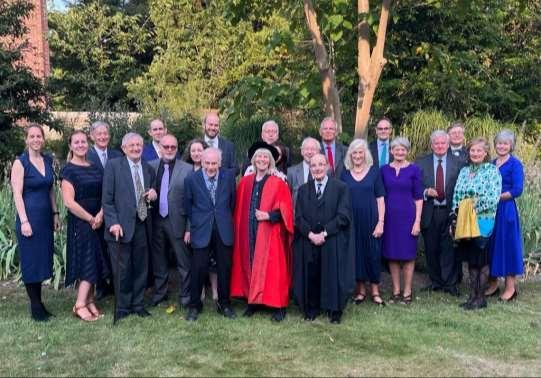
1 UNIVERSITY EXAMINATIONS RESULTS,2023.
Senior Tutor’s Report
As a result of the UCU’s ‘marking and assessment boycott’ around half of our undergraduate and postgraduate students are still without final examinationgrades. Thereforeweareunabletopresenttheusualreport on Tripos performance for the June 2023 round of examinations. At the time of writing, it remains unclear when the boycott, which is affecting some145 universities,willend.
In addition to those listed in last year’s Magazine, University Prize awardedin 2022: OShelton(Archaeology) Anglia Television Prize
2 POSTGRADUATES
Thefollowingelectionsweremadeby the GoverningBody: BaillieGiffordCambridgeMastersStudentship(CambridgeTrust): HLawson; Donner Scholarship: J Helm; Goulandris Scholarship: A Vangelatou; Mastercard Scholars: S Adan, S Boafo, C Egbude, C Ndubisi; Moorman Scholarship:P-GFacey; CambridgeMasters&MagdaleneCollegeStudentship: J Liebrecht, M Wybrant; Gates Scholarship: S Jayaram; Harding Distinguished Postgraduate Scholarship: H Clayton, T Joashi; Jardine Scholarship: Y Hei Chong, G A Setiadi; Mandela Magdalene Cambridge Scholarship: C Royston; Roosevelt Scholarship: J Friend; Skye Cambridge & MandelaMagdaleneCambridgeScholarship:AGodlonton,DLewis,CJVan Rensburg; Standard Bank Scholarships: S Bajaba, K Birditt, K Desta; ViceChancellor’s&MagdaleneScholarship:B Davidson.
Thefollowingresearchdegrees(PhD)wereconferredin2022–23: A Athanasopoulou (Classics); Z Fang (Architecture); G Koukovasilis (Classics); N Makarchev (Development Studies); E Mitchell (Biological Science); E-C Gillard (Law); E Kikarea (Law); D Chan (Engineering); J Deasy (Computer Science); D Gaffney (Archaeology); A Grieve (Film & Screen Studies); M Hartstein (Physics); N Britten (Veterinary Medicine); A Howie (History); A Kefala Stavridi (Biochemistry); C Wan (Biological Science); H Barbosa Triana (Pathology); C Boukouvala (Materials Science); A Hannay (Law); L Heinke (Biological Science); B Nxumalo (Archaeology); GPoon(Oncology); TSTse(Engineering).
Junior Common Room.
R Gavin: President; N Baid: Vice-President; S Cowley: Treasurer; O Hepworth: Secretary; M Peacock: Access and Academic Officer; R Hirai: Catering and Accommodation Officer; A McCann: Welfare Officer (female and non-binary); O Hill: Welfare Officer (male and non-binary); L Steele: Ents Officer; M Blowers: IT Officer; C Clarke:GreenandCharitiesOfficer;MKudiabor:BMEOfficer;MCascarina:ClassAct Officer; S Ganesh Kumar: Disabled Students’ Officer; S Patil: International Students’ Officer; T Morris: LGBT+ Officer; P Ichikawa: Women’s Officer; M Benedict: Freshers’ Rep (female and non-binary); G Yu: Freshers’ Rep (male andnon-binary).
In both the Michaelmas and Lent Terms, the JCR set about finally to relinquish the lingering shackles of Covid. During the final weeks of Harry Fishlock’s tenure as President, the JCR revitalised an ailing bar. Weekly events, including pub quizzes, Six Nations viewings, and Eurovisionwatch-alongs,helped restore asocialhub at theveryheartof College. By the time of the Presidential hand-over, the committee was firing on all cylinders. Members enjoyed a plethora of themed formals, withnotablesuccessesintheLGBTQandStPatrick’sDayvariations. The JCR has also managed to recapture its Common Room after its brief invasion by pesky parcels. A renovation adorned with a rather fetching paint job, new furniture, and a Sky Sports subscription, has proven a greatsuccess.
Members also enjoyed their bi-yearly pilgrimage to Magdalen, Oxford,organisedbyFranOzog. Thesportsdayprovedamixedsuccess, with victory in netball, pool, darts, and hockey, and heroic defeats in football and rugby. Come Easter, and exams had members hibernating in any crevice with a Wi-Fi connection. The JCR, though, was there to ease the stress with a variety of new drinks at the bar and a range of welfareevents. RoryGavin
Middle Combination Room.
J Sangen: President; M Chalakatevaki: Vice-President; D Xu: Secretary; H Thomas: Treasurer; Academic Officer: B Muffet; S Krone: ‘Admiral of the Fleet’ Offcier; N Odiase: BAME Officer; R Farquharson: ‘Guardian of the Chamber’ Officer; T Kitamura: International Officer; P Stephan: IT & Digital Communications Officer; G Ilavarasan: JCR Liaison Officer; O Marx: Social Officer; S Johnson: Sports Officer; H
Thomas: Sustainability Officer; H Tsui: Welfare Officer; R Liu: Women & Non-Binary Officer.
After a few years of Covid restrictions, the academic year began with a full schedule of events in Freshers’ Week, from a ceilidh and a whisky tasting to the traditional black-tie cocktail party and a telling of the history of Magdalene College. It was an excellent opportunity to meet new people and begin new friendships. At the end of the Michaelmas Term, a banquet themed as Frosty Christmas proved a celebration of the Cambridge lifestyle, withbothHallandBensonHallstylishlydecorated.
At the beginning of the Lent Term, the MCR committee welcomed new members who enthusiastically organised events including Chinese New Year and a print-making workshop. The very successful Easter Banquet took a masquerade theme. All positions were filled at the Executive Committee elections at the beginning of the Easter Term, and the new Committee organised a variety of events to relieve examination stress. The final banquet of the year was organised in tropical style, while the Admiral of the Fleet managed to acquire a second punt for the MCR. Named TheSpringman, thenewvesselwasinauguratedwithaswiftpunt by Dame Sarah herself.

Among other events, a bop was organised in collaboration with theAfricanSociety,andanMCRteamenteredthehalf-marathontoraise awareness for the Cambridge Rape Crisis Centre. Throughout the year, swaps with other colleges continued, as did Welfare Yoga, whisky tastings, movie nights, board game nights with the JCR, and academic ParlourTalkswiththeSCR. Allwouldhavebeenimpossiblewithoutthe work of an enthusiastic MCR committee, which also focused on increasing its presence on social media and being more accessible for incoming students. Jasper Sangen
The Editor received the following reports for 2022–23 Magdalene Boat Club. (Captain of Boats: L Uddin). The MBC, the largest society in College, involves almost a fifth of the student community as well as hosting a number of events open to all. Both the men’s and women’s sides have enjoyed great success. The Fairbairn Cup opened the year, with a 2nd place finish for M1a, 3rd place for W1 and M2, and 5th for W2. The race marked the end of the programme for novices, dozensofwhomthengraduatedtotheseniorsquad. InLentBumps,W1 bumpedupeveryday,finishing6thinDivision2. M1finished5thonthe river,thehighestMBCpositionsinceLentBumpsrecordsbeganin1920. IntheMayscampaign,bothmenandwomenheldtheirstartingpositions in the First Division, the men rowed over every day to remain 3rd and thewomenbumped upanddowntostay 17th.
Throughoutthe year MBC also took part in ‘on Cam’ and regional races. Crews won their respective categories at Winter Head, Christmas HeadandBedfordHead,whiletheclubwasexceptionallyproudtohave MBCrepresentationinTheBoatRaces. Fourtrialistswontheirrespective racesinMarch,allhavinglearnedtorowatMBC. AtEaster35members oftheclubreturnedtoLakeBledinSloveniaforitsannualtrainingcamp, and also took its own boats for the first time, making the trip an even moreambitiousachievementforacollege rowingclub.
TheMalloryClub,madeupofMBCalumni,hasprovidedconstant help and guidance throughout the year, also attending events and entering boats in races. The MBC is extremely grateful to the Mallory Club, the College community, and Lady Greenwood and the Master for theircontinuedsupport – theclubwouldnotbe whatitistodaywithout theirhelp.
Eton Fives Club (Captain: L Drummond). This year Magdalene College Fives Club (MCFC) was nominated for Team of the Year by the Eton FivesAssociation(thesport’snationalgoverningbody). Thiswasagreat achievement for a young club and a testament to its members’ enthusiasm and dedication. Individual achievements this year began with former club captain Jessye Tu winning the U25s Championship. The Michaelmas Wisteria Wok beginners’ competition was once again very well received, with Jamie Lai, Jacob Haddo, and Miraj Ahmed

deliveringa sensationalfinal to acrowd ofspectators. In theLentTerm, forthesecond year running, MCFC membersmadeup afullthirdof the Varsity team, even though almost all Magdalene players only start once they join the College. Club captain Lewis Drummond and club coach Isaac Gianfrancesco, both with under two years’ experience, reached the plate A semi-finals of the Kinnaird Cup, the largest competition in the Fives calendar. They did this wearing the new Magdalene College Fives Club branded gloves. Pairs are available for purchase on glovesandballs.com andtheclubwelcomescontact(by sending a message to the College) as it hopes to organise an alumni tournament in the future. Meanwhile, Emma Spencer and Lewis Drummond, both of whom learned Fives at Magdalene, are to be captains for the women’s and men’s Blues teams.
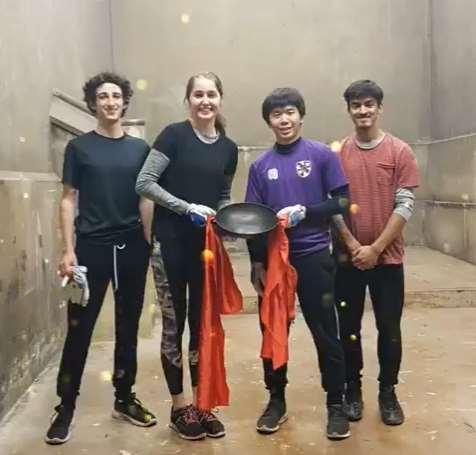

Men’s Football Club. (Captains: B Weidmann and J Mather). What a season it’s been. Following last year’s success, Magdalene AFC continued to excel. The season started with disaster, but the Club bounced back with wins against Fitz IIs and Homerton. The match against Christ’s was an adrenaline-filled bonanza, ending 3-3 after questionable refereeing. The Cuppers run, as usual, proved short and sweet, the team losing to Darwin in another tense match (technically 5-2 butthelasttwogoalscamewhenplayingwithtenmen). Inthewordsof co-captainJoeMather:‘we’relikeabadteabag,weneverstay inthecup for long’. The Lent Term proved less eventful for mighty Magdalene. The frosty weather in January caused match cancellations and a backlog of games. Matches were negotiated, shady deals were made, and all-inall,notmuchfootballwasplayed. Despitethisinactivity,theteamturned upin Oxfordand gave Magdalen a good runfor itsmoney. 2-0down at halftime, lesser teams would have crumbled, but Magdalene thrives under pressure. A momentous comeback went to penalties, and although the team lost the shootout, it put on an excellent performance and left with pride intact. The team also lost to Clare in the Plate, but continues to regard this as an irrelevant trophy. Finally, in a departure from previous years, rather than buying much-needed football kit, MCAFC invested in well-designed and stylish tracksuits: our team has never looked better. Overall, it’s been a successful season, finishing 4th in the league and missing out on the play-offs only because of goal difference. The Club is confident that next year it will dominate the competition,withnewcaptainsTomBealesandGordon Yu.
Ladies Netball Club. (Captain: L McLean). As the academic year drew to a close, the Ladies’ Netball team celebrated a very successful year. Starting the season in Division 2, following two consecutive promotions last year, the team went from strength to strength with remarkably high participationandahighlightvictoryattheannualMagdalene-Magdalen sports day. With consistent performances in weekly College matches, and always managing to field a full team (a phenomenal achievement), the team remained comfortably in Division 2, with an impressive goal difference as it heads into next season. Most notable, however, was the win at The Other Place, with an exceptional performance from everyone involved. Whether it was the new kit, coordinated face paint, the immense support and intimidation tactics from our fans, or a blend of
them all, it certainly paid off as the Ladies’ Netball was one of the few College teams to emerge victorious. All wish the new captains for next year,Polly WilsonandIonaLuke,thebest ofluck.

The Ladies’ Netball team at the Oxford Sports Day
Magdalene College Rugby Union Football Club (Captain: J Lamb) has enjoyed great success this year. The club teamed up with Churchill making it a formidable team that grew as the season developed. At the beginning, there were barely 15 men but by the end of the campaign whichwontheCuppersshield,thesquadnumberedover30:atestament to a great community and an even better rugby team. MCRUFC fared less well when it ventured to Oxford for the annual sports day without its Churchill allies. The team comprised a patchwork of boys who had only just competed in a myriad of other sports played on the day but despite their exhaustion, they found the determination to play against a fully fit team from a much larger Oxford college: a modern David and Goliath. AlthoughonthisoccasionDavidlost. MCRUFCisreadyforthe challenges that the next season will bring and when the team will be captainedbyFred Kirk.

Tennis Club (Captain: E Barrett). Magdalene Tennis enjoyed another stellar year. In the intercollegiate league, the first team celebrated crushing victories over Sidney Sussex, Homerton and Wolfson, and an embattleddrawagainstEmmanuel. Thesecondteamcountedathrilling and hard-fought win over Lucy Cavendish among many stand-out matches. The prestigious Cuppers exactly replicated last year’s result, with a victory over Fitzwilliam followed by defeat to the eventual finalists, Girton. At the Magdalene-Magdalen sports day, injury, illness, examsandemergencysurgerystunted theteam’s abilitytoshowcaseour true performance. Nonetheless, Magdalene offered strong opposition, well into the sunset, to a team that included a Stanford graduate and an Oxford Blue. Sincere thanks to Maria Solovyeva for captaining the secondteamandtoJontyCorrinandTimTianfortheirdedication tothe firstteamover the years.
Volleyball Club (Captain: J Tu). This year saw the welcome return of Magdalene College Volleyball Club. The team for Cuppers was paired withGonville&Caius(nicknamedMagdaius,asatributetotwocolleges with confusing pronunciations). The Magdaius was open to complete beginners to the sport and achieved excellent score-lines. Although the team didn’t qualify for the Cuppers knock-out stages, everyone was hooked and wanted to keep playing. As a result, a new outdoor volleyball net and new volleyballs were purchased thanks to the JCR societies’ emergency fund. The club organised several casual outdoor volleyballsessionsonJesusGreenwhere allenjoyedfunin the sun.

The following obtained Full Blues (*) orHalf-Bluesduring2022–23:
JAdlam-Cook
KBaker
BBridsonHubbard
LBritten
MBrooks
Cycling,2023
MixedLacrosse,2020,2022,2023
*CrossCountry,2023
*LightweightRowing,2023
*DanceCompetition Team2023
MBryan *Cycling,2023
ACanning
SClarke
AFroud
SIlavarasan
SIngle
*Hockey,2023
LightweightBlueBoat(Rowing),2023
*Rugby League,2022
Snooker,2022
*Rugby Union,2023
BJones Rowing,2023
RJones
VKingForbe
OMarx
RScowen
IShawn
KSivakumaar
STarr
BTeh
RThornton
EWakefield
AWilliams
TWills
*Sailing,2022,2023
RugbyFives,2023
*Climbing,2023
*Rugby Union,2023
*Rugby Union,2023
Badminton, 2023;Cycling,2023; MountainBiking,2023
*AmateurBowing, 2023
*Powerlifting,2022,2023
Swimming,2023
Men’s Lacross, 2022
*Netball,2023
Rugby Union, 2023
The Editor is grateful to Mrs Marsh and Matt Moon for verifying this list.

The orchid Anacamptis pyramidalis in June in the Fellows’ Garden (Photo: Mark
Personnel
Mrs Catherine Sutherland has been promoted to Special Collections Librarian and Ms Lauran Richards to Student Services Librarian. Miss Ellie Capling (Libraries Assistant) has left the College, with sincere thanksfor allherworkwiththeCollege Library. Allwishher successin her new position at Lucy Cavendish College. In the Pepys and Old Libraries, Libraries Assistant and Invigilator, Ms Isobel Renn, moves to full time. Rachel Perry Eichhorst, long-term volunteer in the Archives andwhohasreturnedtoAmerica,isowedmuchgratitudeforallshehas donefortheArchivesandArtGallery. TheCollege librarieswillshortly be starting aGraduateTraineescheme.
College Library
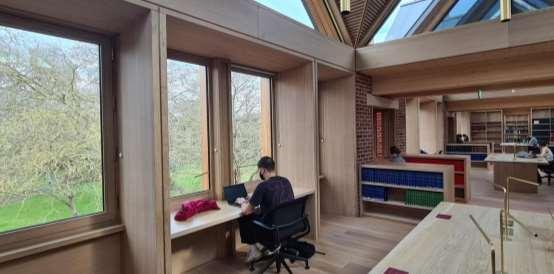
Without doubt, the great news of the year has been the success of the NewLibraryBuilding,designedbyNiallMcLaughlin. TheNewLibrary BuildingwontheStirlingPrizeinOctober2022,anditcontinuestoattract acclaim and innumerable enquiries. The level of interest poses challenges for the Librarians and staff, but they have worked hard to achieveabalancebetweenmaintainingatranquilstudyenvironmentand responding to the interest of the outside world. The Development team have shown round alumni who have lodged enquiries, and the College
Librarian has run three sets of tours a year for individuals and small groups with a professional, academic or study-related interest in the building. Mostvisitorshavebeenarchitectsbyprofession,butanumber of visitors have been members of committees building new libraries and aiming to learn from Magdalene’s fine example.
In the College Library, new staff positions address a build-up of book donations which began during the pandemic and augmented recently by some very large gifts. For these, the College is extremely grateful, but their cataloguing and processing is labour-intensive. The newLibraryteamisdelightedtobeabletotacklethisbacklogandgetthe books to the shelves for student use. Over the last year, legacy projects, including the reclassification and integration of the Duncan Robinson Collection of History of Art volumes, have been completed. Wider reclassification work continues, further gifts have enhanced the art and law collections, and in collaboration with the Development Office the firststepshavebeen takentowards establishingaFamilyFund scheme.
The Historic Libraries have taken receipt of two large donations in addition to other generous gifts. The Old Library is now home to an important group of recusant texts and other Catholic literature from Professor Duffy. These volumes have been added to the English Short Title Catalogue and to the online ‘Old Library shelf list’ while they await more formal cataloguing on iDiscover (the public catalogue of Cambridge colleges and University collections). The Pepys Scholars’ Library, the reference collection of ‘Pepysiana’, has increased by some 150 volumes thanks to the family of the late Henk Hiltrop, a Dutch book collectorandmemberofthePepysClub. Thisbequestincludessomefine early editions of Pepys’s diary; it has been fully catalogued this year on iDiscover as has the whole of the Pepys Scholars’ Library. This is an important milestone toincreaseawarenessofthecollection. Alongsidemoreusualbindingrepairs,averylargemapofLondon fromPepys’s ‘London and Westminster’ albums of prints and drawings, and which was framed and on display since the early twentieth century, has been removed from its frame and rehoused in a custom-made archivalbox.
The Senex globes from the Old Library, recently featured on the College website and library blog after their restoration, have been
borrowedforasummer2023displaybytheVictoriaandAlbertMuseum. The display showcases the lives of two Jamaican scholars, Vanley Burke andFrancisWilliamstomarkthe75thanniversaryofthearrivalofHMT Empire Windrush to the UK. Accompanied to their temporary home by Mrs Sutherland, the loans provide additional context to a portrait of Francis Williams (c 1700–70), which features two globes in its background.

The Special Collections Librarian with the Senex globes at the Victoria and Albert Museum
It is nearly a year since the College Archives moved into the New Library building and the Archivist, Mrs Katy Green, has been able to welcome a number of current Fellows and visiting researchers to the Ronald Hyam Work Room. The Archivist worked with two visiting scholars from the Equiano Bridge Project examining the links between the former slave Olaudah Equiano and Peter Peckard (Master, 1781–97) ahead of the renaming of the Riverside Bridge (Cambridge) in October 2022. TheArchivescontinuetotakeinrecordsfromCollegedepartments and student clubs and societies together with gratefully received gifts including several from Mr Mark Shelton which enhance the Archives collections. Other recent gifts and accessions include a warrant of protection for Bernedetto Spinola signed by Elizabeth I; printing blocks foranappealsbrochureforthebuildingoftheproposednewcourtinthe 1930s; correspondence of the late Arthur Sale (former Fellow-
Commoner);andHonoraryFellowJohnSimpson’snotebooksandscripts dating back to the 1970s. And John’s famous flak jacket.
The transfer of the archive catalogue to an online cataloguing system is continuing, alongside a project to digitize the letters of Magdalene alumnus and mountaineer George Mallory. The letters will be made available to the public to mark the centenary of his disappearanceanddeathonMountEverestinJune 1924.
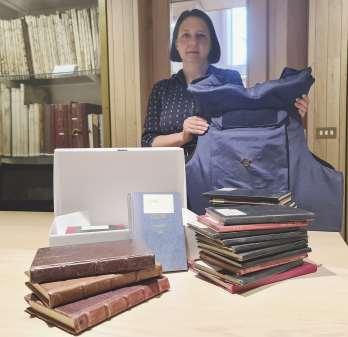
The Archivist with some of John Simpson’s notebooks and his flak jacket (Photo: Matt Moon)
TheFriendsofthePepysLibraryandHistoricCollectionscontinue to support the College through donations, subscriptions and the Back-aBookscheme. AhighlightoftheprogrammethisyearwasthetalkbyDr Helen Kemp about the Thomas Plume Library at Maldon. Plume died the year after Pepys and there are revealing comparisons and contrasts between them as collectors. The Pepys Librarian, Dr Hughes, hosted a virtual meeting to update Friends of the Pepys on the very latest conservationprojects. WhilesomeFriendsarelocaltoCambridge,about halfliveatadistanceandincludemanyabroad. Withthisinmind,future programmes will continue to include in-person, virtual and hybrid events.
MJWaithe MEJHughes
Sacristans: MiriamDavies,CaredigapTomos,HughJones. The Chapel’s worship and community continue in good heart, wellestablished after the pandemic hiatus. The Dean’s support for students of all faiths has led to the establishment of a College interfaith group following the ‘Scriptural Reasoning’ approach of the Cambridge InterfaithProgrammeandRoseCastleFoundation,aswellastheopening of a multi-faith Prayer Room in First Court which has been well used. ThenewFisher Housechaplain held MasshereintheLent Term.
A stream of Freshers found their way to Chapel in October for the Matriculation Service, renewing the community that changes with each departinggeneration. ChoralEvensongonSundaysandThursdayswas well-attended; twice-termly candlelit Compline packed the Chapel; popular Sunday morning Holy Communion continues to be a place for studentstofindfriendsandgrowinusingtheirgiftsinprayer,preaching and practical help. Out of term, the Dean led a Family Christingle and Christmas party for Magdalene families, Midnight Communion on Christmas Eve and a Dawn service on Easter Day. The alfresco worship continued with Ascension Matins in the garden and in May week a service of Holy Baptism for two students in the Cam on Grantchester Meadows. For relaxation and inspiration, Chapel trips took a variety of students to Reach and Ely, accompanied by Dr Charles Moseley, and to Westminster Abbey, marvellously hosted by the Dean and Mrs Hoyle. TheChapeloverflowedwithdepartingstudentsandtheirfamiliesatthe endofJune.

Holy Baptism on Grantchester Meadows
)
Musically,thenewseasonbeganwiththenewPrecentor,MrJames Potter,whohasbroughtsensitiveandexcellentmusicweekbyweek,and an enthusiasm for College music and community life more broadly. Candlemas and Trinity Sunday Evensongs Services moved to St Giles’s Church, while the return of Advent Carols in Chapel was very moving, and all processed to St Clement’s for a popular Christmas service on the last Thursday of the Michaelmas Term. In the Lent Term, the Visiting Evensong on 6 March hosted the Chamber Choir of the Royal Grammar School, High Wycombe, the school of out-going Senior Organ Scholar, Cameran Johal. In the Easter Term, one Sunday Evensong was replaced by a celebration of hymns chosen by the congregation; and drew on the skills of graduating music student Tim Tian who led a Jazz Eucharist on thelastSunday morningof theEaster Term.
In the Michaelmas Term, visiting preachers reflected on the elements of Evensong: the Revd Alice Goodman on the Psalms, Sr Ann Swailes on the Magnificat, the late Canon Anna Matthews (whose untimely death in March was felt deeply in this city) on the Nunc Dimittis, and Professor Duffy on Cranmer’s prayer book. Professor Fergusson preached for Remembrance Sunday and the Very Revd Dr David Hoyle (Honorary Fellow) for Peter Peckard’s 225th anniversary. IntheLentTerm,thesermonsfollowedtheshapeofBuxtehude’s Membra Jesunostri withimaginativesermonsontheCrossviathelimbsofChrist: the feet (the Dean); knees (Hannah Fytche); hands (Fr Paul Keane); side (Dr Giles Waller); breast (Sr Gemma Simmonds) and face (Dr Charles Moseley). The penultimate limb, the heart, was a service with the Cross oftheCosmos(seeChoirreportp56)withDrRowanWilliams(Honorary Fellow) as preacher, in the company of the artist and family of the librettist, the late Kit Hesketh-Harvey. The performance of the Buxtehude cantata cycle in full in the Chapel with baroque instrumentalists was a triumph. In the Easter Term, the Chapel welcomed back the Revd Philip Seddon (Chaplain 1979–85), celebrated the Coronation with a sermon on monarchy from the Old Testament scholar the Revd Dr Olga Fabrikant-Burke, and heard from Dr Rachel Starr of Queens’ Birmingham and Canon Simon Butler of St Mary’s Battersea.
Following generous subscription from Members, Lida Cardozo Kindersley’sbeautifulstallplateforBishopSimonBarrington-Wardwas installed in May. A private service for Duncan Robinson’s family was
heldinChapelthedaybeforetheCollegehostedtheMemorialServiceat Great St Mary’s on 22 April (see p 71). The funeral of Professor T A J (Tony)Cockerill(2006)washeldinChapelon5July (an obituarywillbe publishedinnextyear’s Magazine). BytheendoftheLongVacationfour weddings hadbeen heldinChapelacrosstheyear.
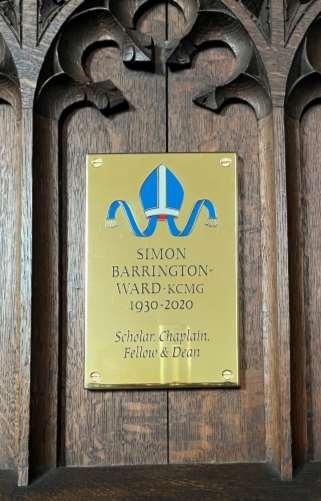
Collections were taken for Winter Comfort, Singing Inside (music in prisons), Concrete Rose (housing for young people in Cambridge), Amnesty International, Christian Aid and One Day Health (Ugandan rural health care, set up by a recent graduate), as well as the College StudentHardshipFundattheannualCommemorationofBenefactorson Whitsun.
SAtkins
CHOIR REPORT.
Organ Scholars:CameranJohal,JayZheng.
The Choir and Organ Scholars have impressed with their commitment, dedication, and abundant sense of humour. At the time of writing, the Choir is reaching the end of a stimulating and varied year of musicmakingand fellowshipboth withinCollegewallsandwithout.
The Michaelmas Term established a regular pattern of twiceweeklyChoralEvensongandtwice-termlySungCompline. OntheFeast ofAllSouls, theChoirsangmovementsfromVictoria’ssix-part Requiem. TheChoiralsosangmusicbyPurcellandCampionatthememorialofDr RichardLuckett. At theendofterm, therapidprogressionfromAdvent to Christmas that occurs uniquely in Oxbridge colleges, featured the Advent service in Chapel, and the Christmas Carol Service a few days later, down the road in St Clement’s Church. The following day, the Choir had the great pleasure of performing a Carol Concert for alumni andguestsinthebeautifulLondonchurchofAllSaints,MargaretSt(the well-equipped organ of which was put to good use). This featured contemporarycarolsincludingmusicbyPaulManz,BeckyMcGlade,and RandallThompson.
In the Lent Term 2023, the Choir followed a somewhat novel pattern for our Sunday services, theming them on the seven ‘limbs’ of Christ which are the focus of Buxtehude’s cantata cycle Membra Jesu nostri. This led, at the end of term, to a complete performance of the same, with professional period instrument accompaniment – and the Organ Scholars on chamber organ and harpsichord. This unusual devotional focus resulted in some intriguing sermons and a musical odyssey encompassing contemporary music by Jamie Burton, David Bednall, and Eleanor Daley, as well as familiar favourites by Stainer and Wesley.
Inaparticularlybusyweek,theChoirsangfortheAshWednesday service, followed by the Samuel Pepys Evensong on the Friday. At the latter, the Choir followed the Feast with a performance from the gallery, in a framework masterminded by Dr Hughes, which included a performance of Gibbons’s Cries of London, during which thesingersgave voice (and character) to their inner street hawkers. Those present might alsohave glimpsed thechaosofRestoration London.
Two days later, the Chapel played host to a rather unusual event: the visit to the college of the Cross of the Cosmos, a religious artefact created by the visionary artist David Maude-Roxby-Montalto di Fragnito. This event was accompanied by the premiere performance of a new anthem for choir and organ, composed for the occasion by international baritone soloist (and recent performer at the Coronation), Roderick Williams, who also sang in the performance. The Choir and organist rose to the occasion and gave a committed account of a challenging piece. At the end of term, the Choir was delighted to be invited to sing for the annual Lent Sermon of the Mercer’s Company in itsheadquartersinLondon(theonlysuchliverycompanytohaveitsown Chapel).

In the Easter vacation, the Choir embarked on a tour to Puglia, Italy, giving concerts in Bari, Mola, Cassano, Molfetta, and Monopoli, as well as workshops in local schools. This was an intense and richly rewarding few days, during which it was a pleasure to reprise the Buxtehude cantatas, accompanied by a local professional baroque ensemble (and, on one occasion, also accompanied by a dramatic thunderstorm). Nearly all the singers gave ‘step-out’ solos during the performances (including the Dean of Chapel) – a testament to the depth of talent in our Choir. An experience such as this has immeasurable benefitstothestudents,notonlymusicalbutsocialandcultural,anditis rewardingtobe able tocontinue it.
In the Easter Term, in addition to its regular commitments, the Choir sang Choral Matins al fresco in the Fellow’s Garden, performed madrigalsandpart-songsfortheCrippsandSupervisors’Dinner,offered a rousing Te Deum by Howells for the annual Commemoration of Benefactors, and sang at the beginning of the College May Ball. The Choir also recorded a piece by Rani Arbo for inclusion in a new documentary film by Rowan Hall-Maudslay, Bye-Fellow. It was also a great pleasure to maintain an association with St Giles’, which was such a lifeline during the pandemic. Now, occasional services in the large churchallowustovaryouracousticalandmusicaldiet. Thanksmustgo to the Master, Dean of Chapel, and the whole community for their support,andIwishtorecordpersonalthankstotheFellowsandstudents for their warm welcome in my first year as Precentor and Director of Music. The College Choir represents the best of Magdalene: friendly, distinctive, aiming for excellence in all we do. I look forward to seeing whatwecanaccomplishtogetherintheyearsahead.
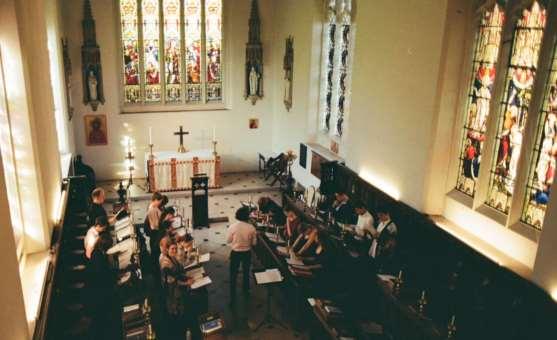
Work, through the summer golden, And through the autumn's glow, Tillthe months lay down their burden
In the full garden's guerdon, And earth, once more enfolden, Sleeps warmbeneath the snow.
FrederickFrye Rockwell,‘Invitation’, Around the Year in the Garden,1917
Andthisyear wedidindeedseesnowandexceptionallycold weatherin early winter. As the mercury plummeted to minus 9° for several nights in a row, the gardens shivered and parts of the Cam froze for the first time in over thirty years.
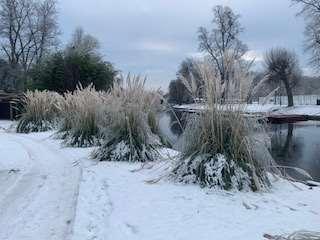
The Scholars’ Garden and the river in early winter (Photo: MarkScott)
The College gardens fared better than others nearby, but salvias, fuchsias and anything from New Zealand, such as hebes and
pittosporums,defoliatedrapidlyinshock,nevertoreturn. Althoughour winters are not as severe as they once were, the modern vogue for planting so-called ‘drought tolerant’ plants does neglect the ease with which ‘traditional British weather’ can finish them off in a short space of time. It is therefore prudent to keep some more traditional plants in our gardens. It is surprising to learn that this June was the hottest on record given that the days between the end of May and early June were unseasonablycoolwithmanydaysbarelymakingdoublefiguresandthe bedding plants proved slow to get going in the nursery. The cool late spring did, however, prove a boon to our numerous roses which provided an excellent display all around College.
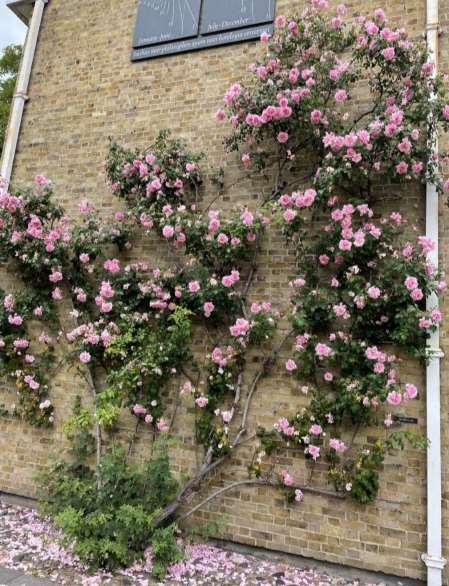
The traditional display of wallflowers, ivory white this year, was inter-planted with a lovely purple tulip named, coincidentally it seems, after the Prince song ‘Purple rain’. Tulips are divided into fifteen different groups and this particular beauty is an acclaimed member of theTriumphgroupoftulips. Itisparticularlyrobustandslightlyshorter than the Darwin hybrids we often plant.
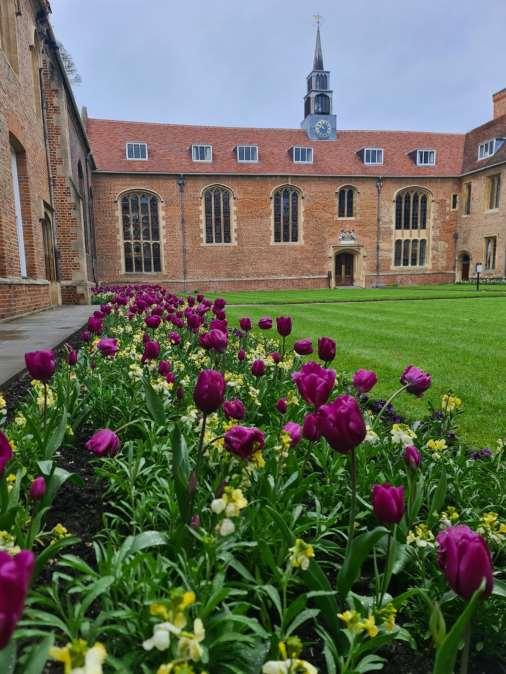
This year the summer bedding display has a pink pom-pom and blue vibe using dahlia Salinas ‘Pink’ and pink zonal pelargoniums interspersed with blue salvias, both the traditional Victorian S.farinacea and the modern S. patens ‘Deep Blue’, a cracking modern hybrid. A native of Mexico, it is well suited to our drier summers. To add foliage interest, an ornamental millet, Pennisetum glauca ‘Purple Baron’, snakes throughthechapelbedinfrontofseveralspecimensof Ricinuscommunis Cosmos sonata, planted among the tough-as-nails Salvia guaranitica ‘Black and Bloom’ which adds height towards the rear. This anisescented sage is a favourite salvia as it flowers on-and-on, thrives in drought,anddidsurvivethewinter! Theedgingthisyearseesthereturn of compact lilac lobelia for the first time in a few years. The hanging baskets under the Pepys Library contain a mix of trailing lobelia, a blue veined trailing petunia called ‘calibrachoa’, a saintvitalia yellow trailing daisy, a classic trailing fuchsia ‘Eva Boerg,’ and some helichrysum for foliage effect. We are grateful to Mr Sid Dawson, ‘fuchsia king’, for the various fuchsias he kindly donated.
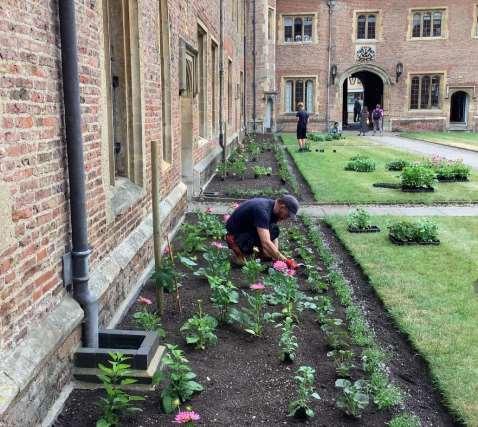
The orchard area in Buckingham Court looked splendid and was buzzing with insect activity from May onward and still looked fabulous in July. It was sprayed off last autumn to get rid of a rather large cohort of thistly interlopers and the JCR Green Officer, Cerri Clarke, with her band of trusty volunteers, helped to re-seed in spring. Such assistance is much appreciated.

Over in the Village a poor specimen of weeping silver pear was removedinMalloryCourtandreplacedwitha Cornuscapita. Introduced from the Himalayas in 1825, this small tree has tiny leathery elliptical leaves and small inconspicuous flowers but its true beauty lies in the fleshy strawberry-shaped fruit borne in an agglomerated mass in which the seeds are imbedded. We hope to plant more specimens from the HimalayasinthisareaasalegacytoMalloryinthecentenaryofhisascent of Everest.
BehindtheNewLibrary,nearthepetcemetery,aweepingkatsura was planted to replace some of the trees originally in that area. Long thoughttobeconfinedtoJapan,EHWilsonfound Cercidiphyllumjaponica
in China in 1910. Like many NorthAsiatic trees introduced to Britain, it commences growth in early spring and its young shoots almost invariably succumb to early and, on occasion, late frost. The male and female flowers are borne on separate trees but possess no beauty (W J Bean, TreesandShrubsHardyintheBritishIsles,Vol1p578)butthisshould not deter us from planting the katsura tree as it truly comes into its own in autumn when shades of red, orange and pale yellow to pink and mauve appear in tandem with the most beautiful scent of candy floss or burnt sugar.
As ever, the team is trying to encourage more wildlife in the gardensandtoincreasebiodiversity. Thisyear,fifteennewbirdboxesof varying design were put up in the Fellows’ and Master’s Gardens and somehoneycombstyleinsecthotelswereputonthewallsintheFellows’ Garden. We are grateful to the outgoing JCR President, Harry Fishlock, for procuring the bird boxes and Mr Sam Wiffin, College Carpenter, for making the insect hotels.
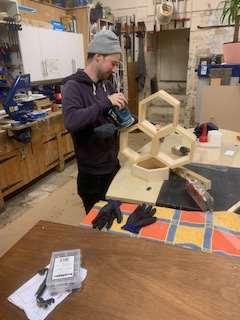

Although still challenging for recruitment, in 2023 the College remained a very attractive employer with excellent new appointments. In May, in a first for Magdalene, and possibly for Cambridge colleges, Magdalene appointed a female Head Porter, Helen Mason, who joins a team also welcoming James Skevington, Paul White, Stuart Clark, Eva Aldritt and Jeanette Jones, while saying goodbye to Brian Clarke, Sean Pattern and Lorraine Wilson. Bill Sandford stays as a relief porter, and the College looks forward to welcoming Demi Skutela back from maternity leave. Former Head Porter, Ryan Carter, established a good rapport with students and staff and moved to Head of Operations (Student Services) before taking up his new post at Trinity College. As conference activity picked up, Courtney Nixon moved from the Porters’ Lodge to the Conference Office which also welcomed Hayden Allen following the resignationofMarianaPetrasova(thenonsecondmenttotheAdmissions Officeduring theinterviewperiod).
Through the generous support of donors, the College was able to appoint Catriona Keane as Head of Student Wellbeing to complement our Student Welfare Team. In relation to this – and much else besides –the work of the Magdalene Alumni and Development team is much appreciated; Sarah Reynolds made the difficult decision to not return to work after the birth of her third child; but all were delighted when Deborah Parsons, having covered Sarah’s role, accepted a permanent post and when Jessica Gelsthorpe joined the College as Senior DevelopmentOfficer inJuly.
Further changes affected both the College Office and the MaintenanceTeam. After more than 14 years’ service, Hannah Freeman resigned as Finance Manager; Jemma O’Grady moved to Queens’ College having been at Magdalene for more than 11 years; and Luzanne Prickett,ManagementAccountant,leftinJunetofurtherheraccountancy career. The College welcomed Bridget Hendry as Head of Finance, Cristina Rice as Management Accountant, Catherine Clarkson as HR Coordinator and Jade Horsley as HR and College Office Administrator. The Centre for History and Economics appointed Juliet White as an Accountant,whileIanLittlechildfromGirtonCollegejoinedasManager of the Maintenance Team, Thomas Matthews and Daniel Ganji as MultiSkilledOperatives,andSarahForemanasHeadofBuildingServicesand
Operations. Richard Norman and Jamie Richardson both resigned and BraidenEvansleft foracademicstudiesat DurhamUniversity. Elsewhere, colleagues were sorry to say goodbye to Lorraine Wright in the Gardens Department but delighted to welcome Damien Watt from the University Botanical Gardens. Ian van Gardingen left the IT Department for a post at the Open University. Wayne Johnson was promotedtoLeadChef,anddespiterecruitmentdifficulties,heandMark Slater worked hard to build the Kitchens Team, welcoming Dean Flack as Senior Sous Chef, David Fazekas and Thiago de Carvalho Bispo as Chefs de Partie, Antonio Galata as Demi Chef de Partie, George Ionescu asKitchenAssistant,andDanielDinuasKitchenPorter. TheButterylost Charlie Gill but welcomed Anna Orzechowska and Elena Ionescu. The Housekeeping Department welcomed Wioleta Bienias, Donna Hutton, Andrew Carter, Daniela Draganova, Sharon Lake, Luigi Petri, Vilena Koretska, Klaudia Nijak, and Rossano Aquino, replacing Joanna Witt, JuttaSmithand Rafal Orzechowski.
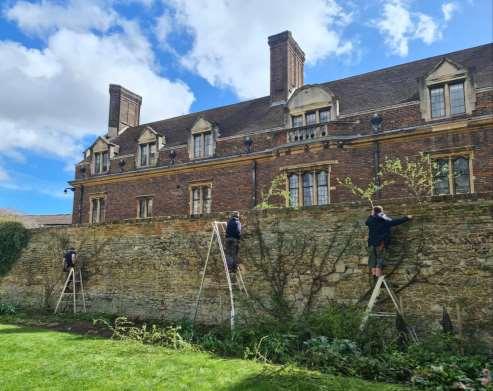
CONCERT IN THANKSGIVING FOR THE LIFE OF DR RICHARD LUCKETT. The College remembered our friend and colleague, Dr Luckett, who died in 2020, at a special concert on Saturday 29October 2022. An obituary was published in last year’s Magazine.
It was a real pleasure to welcome Richard’s family who joined the Master and Fellows at this unique and moving occasion; and the Chapel and Hall were both filled with Richard’s former students, friends, colleagues, and fellow musicians. Richard, with his career-long experience of organising musical and operatic performance, had (typically) left instructions! He wanted seventeenth-century music, ‘especiallyPurcell’,andhewanted‘nowords’. Takinghisprohibitionto mean no speeches, we snuck in a couple of poems in the form of two evocative readings: one read by the Master from a section of Four Quartets,writtenbyourHonoraryFellowTSEliot;theotherbytheDean ofChapelof thepoemprintedbelow p68. Otherwise,it was all music. The event could not have taken place without Maggie Faultless, theworld-famousviolinist:herhelpinputtingtogetherasuperb consort ofearly instrumentalistswaskey. Itwasstrikingthateveryoneaskedto perform wanted to do so: Elizabeth Kenny (lute and theorbo), Margaret Faultless (violin), Rachel Stroud (violin), Daphne Delfas (viola), and WilliamHunt(bassviol). TheywerejoinedbyformerDirectorofMusic, JonathanHellyerJones(harpsichord)whoalsoperformedsolopieceson the College instrument. In addition to the consort, the programme included Richard Mayer, a former member of the Magdalene Choir, singingSamuelPepys’sownsong,Beauty Retire. HenryPurcell’schorus, ‘To the Hills and the Vales’, from Dido and Aeneas was sung beautifully by the College Choir under the direction of James Potter; and Edward Higginbottom,playingtheCollegeOrganwhichRichard didsomuchto design for the Chapel, performed Purcell, Voluntary in D and Orlando Gibbons Fantasy of four parts. Magdalene College owes a deep debt to Richardforamagnificentbenefactionofmusicalscores,manuscriptsand early printed books. Among them, an eighteenth-century printed Book of Psalms includes a handwritten copy of the Thomas Campion piece, ‘Never Weather-Beaten Saile’, which was performed by the Choir to conclude this veryspecialconcert.
MEJHughes
Lookingnorthof the city youseea lineof bluehills, Sparklingwaterflowspasttheeasterngate. Herewepartonceforall; Asolitarywaterweeddriftsoff intothedistance. WhenIthinkofthe wanderingcloudsyouwill comebackinto mythoughts
Sunsetwill bring withitmemoriesofyou.
Wepartnow witha waveofthehand;as weturnourhorses theyneigh farewell.

DR MARTIN HUGHES’S INFORMAL GATHERING On Friday 9 December 2022medicalFellowsandfriendsofDrHughesmetinCollegeforalunch with mulled wine and warm drinks with his wife, Clare, and his daughter, Amelia. They also assembled briefly around the plaque and treeplantedforMartininthe Fellows’ Garden. Martinmadeitclearthat he didn’t want a memorial service, but the medical and other Fellows whoknewMartinthoughtthatgatheringtounveiltheplaqueonhistree wouldbefitting.
BENSON GHOST STORY NIGHT. On Monday 13 February, professional storyteller Robert Lloyd Parry performed a dramatic reading of three ghoststoriespublishedinthe College Magazine byACBenson(underthe pen-name ‘B’) in the SCR. He also discussed the context of these littleknown Magdalene ghost stories, all of which are set in the College. Attendees, including the Master, Fellows, guests and staff, also had occasiontoholdavolumeof Benson’s diary,courtesyofProfessorDuffy.
PARNELL LECTURE. Thisyear’s ParnellFellowinIrishStudies,MrDaniel Mulhall, formerly Irish Ambassador successively in Berlin, London and Washington, gave his Parnell Lecture, ‘An Unforeseen Consequence: Ireland, theUKand IrishAmerica,1972–2022’ in the Cripps Auditorium (andon-line)on20February2022. Histitlewasanadaptationofaphrase from an apocalyptic Times editorial from the 1850s, on the ‘unforeseen advantage’ given to anti-British feeling by Irish mass-emigration to North America during and after the Famine of the 1840s. The Times gloomily predicted an eventual hundred-million-strong Irish-American diaspora, powerfully shaping the adopted nation’s foreign policy and informedbysevencenturiesofEnglish misrulein Ireland. Although those predictions were to prove exaggerated, the Irish diaspora in late nineteenth- and early twentieth-century America did indeed foster a strong Irish-American identity pervaded by anti-British feeling. British politicians viewed this identity with increasing alarm. It could serve as an incubator of revolutionary nationalism, and even comparativelyrecentlybeasourceofIRAfundingthroughorganisations like Noraid. Nonetheless, American statesmen and governments down to and including that of the Irish-American President John F Kennedy, were careful to avoid any appearance of interference in Anglo-Irish affairs.
The lecture traced the transformation of this situation in response to the Troubles in Northern Ireland from the 1970s onwards. IrishAmericaninfluenceshiftedfrombackgroundendorsementofrepublican aspirations for Irish reunification, to direct support for a peaceful settlement and the preservation of the gains of the Northern Ireland peace-process. Key figures were Democratic President Bill Clinton (himself of Irish descent) who devoted extraordinary time and effort to encouragingasettlement,includinganinfluentialvisittoIrelandin1995, and Clinton’s special envoy, Senator George Mitchell, the chief architect oftheGoodFridayAgreementofApril 1998.
Mr Mulhall concluded his lecture by sketching the long-term consequences of all of this in the wake of Brexit. Many American politicians, not least President Biden but including some otherwise favourable Republicans, saw Brexit as likely to threaten the peaceprocess, thereby presenting significant complications for post-Brexit Anglo-American relations. A sparkling survey concluded with the lecturer’s bravura (and highly entertaining) handling of questions.
PROFESSOR CORNISH’S MEMORIAL. A celebration of the life and work of ProfessorBillCornish,Fellow,President,andLifeFellow,washeldinthe Cripps Court auditorium on Sunday 19 March 2023. The Master, Professor Sir Robin Jacob, Professor Lionel Bently, Professor Michael LobbanandDrJonathanMorganspokeaboutthevariedaspects ofBill’s career, with concluding thoughts by the Dean of Chapel. The addresses were interspersed with music performed by a number of Bill’s friends, joined by Priya Berks, a Magdalene undergraduate and instrumental awardholder,theDirectorofMusicand MrHellyer Jones
LINDEMANN SCIENCE DAY. On 10 March, the annual Science Day for primary schools brought 170 Year 6 pupils from four local schools to the Cripps Auditorium for a series of bite-size science talks, aimed at encouraging discussion and inspiring an interest in the part that science plays in our everyday lives. Dr Baez-Ortega demonstrated how a laser microscopeworks,andhowwecanusethistoanalyseDNA. DrNelson Lam, Lindemann alumnus and Research Fellow at Trinity Hall, presented 'Chemistry in Colour', using water boiled from a red cabbage to test whether everyday household products are an acid or a base. Astronomers, Julia Sisk-Reynes and Dr Anke Arentsen, both from the
University’s Institute of Astronomy, mesmerised the children with talks onBlackHolesandthe Milky Way.
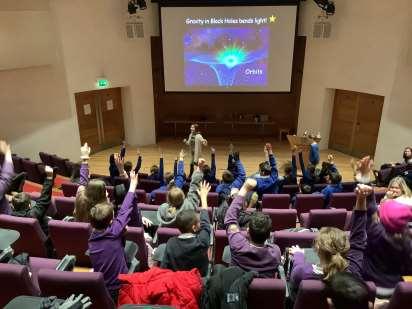
Dr Anke Arentsen with an enthusiastic audience
MR ROBINSON’S MEMORIAL SERVICE. A Memorial Service was held for Duncan Robinson in the University Church of Great St Mary’s on Saturday 22 April 2023. The Dean of Chapel officiated. The College Choir, directed by the Precentor, sang the anthem 'Jesus bleibet miene Freude' by J S Bach. Mrs Lisa Robinson was accompanied by many membersofthefamily. SirCharlesSaumarezSmithrepresentedHMthe King, and Mr Nicholas Baring represented Princess Alexandra. Among othersinattendancewereSirLeszekBorysiewiczrepresentingtheActing Vice-Chancellor, and the Deputy Lord Lieutenants of Cambridgeshire. ProfessorDuffyread‘TheCall’byGeorgeHerbert,ProfessorLukeSyson (Director of the Fitzwilliam Museum) read from Ecclesiastes 3, 1-8, and tributes were given by Mr Tom Robinson, who recalled his father as a devoted family man, the Master (see p 25), Dr Frank Salmon (Department of History of Art), and Mrs Margaret Greeves (Fitzwilliam Museum). A book of condolence was signed by members of the congregation, a very large number of those attending reassembled to drink to the memory of Mr Robinson in the Master’s Garden, and the Robert Cripps Gallery in theNewLibrary was open, withaspecial exhibition in hishonour.
THE ROBERT CRIPPS GALLERY
October–December 2022: ‘Will Carter-Man of Letters’ and ‘Professor Hyam’s calligraphy’. An important retrospective featured the wideranging portfolio of one of Cambridge most respected resident artists, Will Carter OBE (1912–2001; Honorary Fellow 1977–2001) including manyexamplesofhiscalligraphy,letter carving,printingand typefaces, alongside a special showing of some of Professor Hyam’s calligraphical work.
On 6 November 2022, a reception attended by Fellows, staff, and their guests, was hosted by the Master in Professor Hyam’s honour.
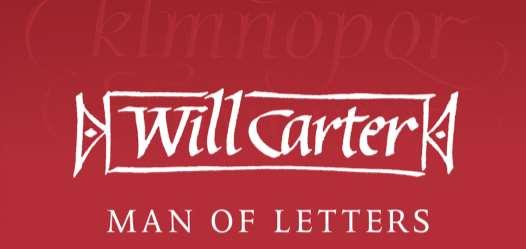

February–March 2023: ‘Cross-Connections: Paintings by Ruth Rix’. A selection of works by Ruth Rix from sixty years of painting, was shown alongside prints by her mother Helga Michie, a Kindertransport refugee fromVienna. Threeaccompanyingexhibitioneventswerewellattended: ‘Secret Grounds – Ruth Rix in conversation with Georgina Paul’, ‘After Abstraction –theSoundscapeofShapesin theWorks’,and,‘Discovering the Living Space: an exploration of space, real and imagined, in times of movement and migration’, a music performanceand paneldiscussion.


A special 25th and 50th Anniversary Reunion Dinner for 1997 and 1972 matriculands was held on Saturday 24 September 2022 and attended by 43 alumni and seven Fellows. The Master gave the after-dinner speech. A Reunion Dinner was held on Friday 24 March 2023 for 1988–90 Members. It was attended by 100 alumni and five Fellows. The afterdinner speaker was Natasa Williams (1990). On Saturday 13 May, a Reunion Lunch for Members matriculating in the years up to 1964 welcomed 53 alumni and their guests, and six Fellows. Sir Brian PomeroyCBE(1962) proposedthetoast.
2
EC Baker (1997): Consumer Journalistof theYear 2022 – Newspress Awards
DrBBentley(2011): FulbrightAwardat HarvardUniversity
ProfC Casey(ParnellFellow 2020-21):EuropeanResearchCouncil Advance Grant
RAGavin (1972): Knighted inthe King's BirthdayHonours2023for services toDrama, theArts,Heritageandthe Economy
DrPMagalhäes deOliveira(2015): BernardLewisFellowship
TKarayiannides (former Bye-Fellow):JuniorResearchFellowshipat EmmanuelCollege
IMaloney(2014):NaomiSchorMemorial Award
JTLMo(2018):OxfordEldonScholarship 2023
WPainter (2022):Amicus Law Prize2022andDias Mootingcup
ASamartzia(2020):special jury mentionattheBaxterFamily CompetitiononFederalism2023
DrDeyFTarusikirwa(2020): YoungDevelopmentAgriculturalist (UK-based)2022
3
IBaudino(VisitingFellow 2015–16): Eighteenth-Century Engravings and Visual History in Britain (2023)
*RABowden(1962): From Somerset to Portman Square, the Portman Family and their Estates (2023)
TPBowley (1997): Activist Shareholders in Governance (2023)
ProfDrMBuhmann (1989): Quasi-Interpolation (2022)
LMSFreeman (2007): Ways of Life (2023)
*CHague(1963)(co-editor): Planning, Urbanisation and the Commonwealth (2023)
ProfDrDJHowarth (1969): The Adventurer: The Improbable Rise of the East India Company 1550-1650 (2022)
*RJolly(1953): A Development Economist in the United Nations: Reasons for Hope (2022)
RFKuang(2018): Babel: An Arcane History (2022) and Yellowface (2023)
MLloyd-Rose(2003): Into the Night: A Year with the Police (2023)
*MGMaskell(1956): MyWife’sCanaryandOtherAnecdotes (2023)
*FMatthew(1975): Depersonalization and Creative Writing: Unreal City (2022)
ORCMurrin(1976): Two’sCompanySimple (2022)
CLPike(CharlesLander)(1967): My Usual Table (2021)
ProfM Pope(1944): The Keys to Democracy: Sortition as a New Model for Citizen Power (2023)
ProfNMStratford(1958): La Coupe de Sainte Agnès (2022)
BWelsh(1983): The Pitch(2021)
*MWheeler (1967): The Year that Shaped the Victorian Age: Lives, Loves & Letters of 1845 (2022)
*We are grateful to these authors for presenting copies of their works to the College Library.
4. MEMBERS‘ DEATHS (reported to mid-July 2023)
D H Goodland (1946); M R Fairbarns (1948); D W M Paine (1948); M H J Hill (1949); P M H Robinson (1949); Lieutenant Commander R Y C Sharp (1949); D S Briggs (1950); B W Hungerford (1950); R G Marlar (1950); G V Bateson (1951); E Hooper (1951); N Ventham (1951); F R Welsh (1951); C B Sykes (1952); Dr J P James (1953); J J G Brown (1954); Dr V S Colter (1954); D C T Hutchison (1954); B Norton (1954); F J Willy (1954); R C R Chesters (1955); His Honour Judge C P James (1955); T R Wilson (1955); A A Letts (1956); D Stott OBE (1956); Dr P J McCoster (1957); A K Knight (1958); M J Knight (1958); A Goodfellow KStJ (1959); B A Smouha (1959); N Toosey (1959); Dr R S Dark (1961); P F C Roden (1961); R K Black (1963); H J Roche (1963); P L Graham (1964); A Mackay (1966); Dr N H Sheldon (1970); G D Roome (1970); Dr H K Norrish (1972);
K Robertson (1972); G C Walker (1973); O R C Laminie (1974); J L Steel (1974); P S Laskey (1976); Dr K Johnson (1991); Dr A R Hughes Kersnowski (2000)
We must apologise to Dr C R Edmondson (1967) for mistakenly reporting his death in last year's Magazine. The Editor will be grateful if members informing the College of the demise of friends and acquaintances will assure themselves that such reports are not premature.

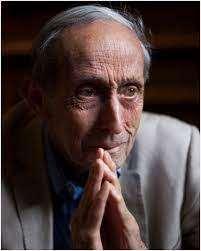
Dr John Dixon Walsh (4 Sept 1927–3 Nov 2022, Fellow1953–58). ‘Know ye not, that there is a Prince, and a great Man fallen this day in Israel?’1 The sermon preached on John Wesley’s death in 1791 took a fitting text: the Methodist patriarch was a giant of his age whose funeral attracted one of the largest crowds London could remember. It is certainly not a text that John Walsh, for many yearsascholarofWesley’sworld,wouldhave dreamed of applying to himself. He carried his knowledge lightly, while his counsel – which was widely sought –was given with rueful self-deprecation, a gentle twinkle, and the hint of a stammer. Yet the text is an apt one, all the same. Never prolific in publication, John was nonetheless among the most distinguished historians of religion of his generation. He kept a wide circle of friends fromallwalksoflife:indeed,heseemedtohavetimeforeveryone. Like his dear friend and Magdalene near-contemporary, Simon BarringtonWard, he was widely beloved, not least by generations of students at JesusCollege, Oxford,wherehespent mostofhiscareer.
John often said that he had lived a ‘charmed life’. Born in 1927 in Essex into a Methodist missionary family, he spent his early years in Calcutta, learning to speak in both English and Bengali. He returned to Britain in 1933: his father, a minister, took up various posts in the North of England and eventually in Scotland. Staying with his aunt, who ran the Post Office at Hawkshead, near Windermere, John recalled Beatrix Potter patting him on the head and giving him a penny. In 1937 he was sent, like many a son of the manse, to Kingswood School in Bath, where heenjoyedcyclingtheMendips insearch ofbirdsandbutterflies. When its buildings were requisitioned at the start of World War II, Kingswood was evacuated to Uppingham, to be crammed in alongside the existing school. Relations were amiable, but there were some marked contrasts. While the Uppingham ‘young men’ wore uniforms with straw boaters, Kingswood had no uniform, many boys probably being kitted out from
1 2 Samuel 3: 38.
jumblesalesbythriftyMethodistmothers. Johnwasshockedtodiscover that Uppingham prefects were still allowed to beat those under their authority:itheightenedhisappreciationoftheKingswoodethos. Central to that ethos was Kingswood’s charismatic headmaster, A B Sackett, whom John revered and later memorialized in print. At a loose end awaiting call-up, John was to star in Fortunate Exile, a silent film made just after the war to commemorate Kingswood’s sojourn. Remarkably, almost seventy years later he provided narration for a soundtrack, reflecting, inter alia, on the trials of wartime school-fare for one with a sweettooth.
HefirstcametoMagdaleneonafreezingdayinDecember1945to sit the scholarship examination. Interviewed in the Parlour ‘by assembled dons sitting silent, impassive and august in candlelight’, the walrus-moustached Master, A B Ramsay, asked him not about history but about whether he played cricket. National Service then intervened: two years clearing munitions in the ruins of Germany as a young Lieutenant. In 1948 he returned to Magdalene, becoming, under the tutelageofFrankSalterandRalphBennett,oneofagoldengenerationof undergraduate historians (six double firsts between 1948 and 1953: Goodland,Phillips,Walsh,Fraser,Mirfin,Ward). Hecontinuedworkfor a PhD with the Dixie Professor of Ecclesiastical History, Norman Sykes, whose rehabilitation of the eighteenth-century Church of England John later extended in Essays in Modern English Church History in Memory of Norman Sykes (1966), edited with G V Bennett, and in The Church of England c. 1689-c.1833: from Toleration to Tractarianism (1993), edited with Stephen Taylor and Colin Haydon. John’s own doctoral dissertation, ‘The Yorkshire Evangelicals in the Eighteenth Century with Especial Reference to Methodism’ (1956) must be among the most widely consultedinexistence. ThesheetsofreaderspastedintotheULcopyare aroll-callofmodernBritishreligioushistory:evennowitiswidelycited. His seminal article on ‘The Magdalene Evangelicals’ (1959) evoked a student generation given to prayer meetings as well as pranks, with characteristic humour and poignancy, not to mention underlining Magdalene’s centrality to a dynamic globalmovement. With the first fruits of his research becoming evident, and with Salter ageing, attempts were made to keep John at Magdalene. Alas, it wasnottobe. ElectedasaBye-Fellowin1952,aResearchFellowin1953 and an Official (Teaching) Fellow in 1957, he moved to Oxford in 1958.
There, he came into his own as a humane and inspiring Tutorial Fellow of Jesus College and a brilliant supervisor. He served as Vice-Principal ofJesus1984–88and retiredas aTutorial Fellowin 1992.
Through John, Oxford in the 1970s and ‘80s became the place where Sykes’s revisionist agenda was fleshed out, via his research studentsandthosewhotookthefamousspecialsubjecton‘Church,State, and Society, 1829-1854’ which he co-taught for years. Many of its takers have gone on to have distinguished scholarly careers of their own, and their acknowledgements pay tribute to the attention that John lavished so generously on them. But what of his own research? Through his writings John sought to free religious history from the ecclesiastical and denominational ghettoes in which it had often narrowly thrived. His sympathies were wide: while he criticized the Marxist E P Thompson, a fellow Kingswoodian and missionary child, for his reductionist interpretationofthepsychologicalrootsofMethodism,Johnwasalsoan earlyfriendoftheradicalHistoryWorkshop. Hisinstinctivesupportfor social justice shines through in his fine Oxford Dictionary of National Biography entry for Peter Peckard, the late eighteenth-century Master of Magdalene whose theology was heterodox but whose hatred of slavery could not be doubted.2 (Here too John’s scholarship has played a large partinshapingthestoriesMagdalenetellsaboutitself.) Thesetantalizing glimpses of his abilities make it all the more difficult to avoid the impression that John should have published more: ingrained diffidence surelyplayedalargepartinthis. WhenhegavetheBirkbeckLecturesin Cambridgein1987hewas,sothestorygoes,pursuedbyapublisherwith afatchequebook,buttonoavail. Onanotheroccasion,lessperfectionist colleagues seriously contemplated raiding his rooms in Jesus to steal a long-promised manuscript. There remain hopes that more of his work mayemergein thecomingyears.
‘Despite his many years in Oxford,’ writes his daughter Rachel, ‘Cambridge, and Magdalene in particular, remained his true love. His disrespectful children, led by me, used to (try to) wind him up by chanting (to misquote the start of Daphne du Maurier’s Rebecca) “last nightIdreamtIwenttoMagdaleneagain”although heneverrosetothe bait.’3 Indeed,whenhecamebacktoMagdaleneonsabbaticalin1984he
2 See also John Walsh and Ronald Hyam, Peter Peckard: Liberal Churchman and Anti-Slave Trade Campaigner (Cambridge: Magdalene College Occasional Papers, 1998).
3 Communication from Rachel Sellers (Walsh), 18 Dec 2022.
wasfortuitouslyplacedinthebedroomthathadbeenhisin1948(partof thesetoccupiedformanyyearsbyProfessorHyamandnowbyProfessor Jones). Hereportedthatwhenhewokeupinthemorningshesometimes feltapanic-strickenconvictionthathissubsequentlifehadbeenadream and he was still an undergraduate. Post-war Magdalene had been, he once wrote, ‘a marvellous place to be young’.4 Rationing meant whalemeat steaks and snoek for dinner, but this combined with ‘startling glimpses of an altogether more luxurious form of life’, with ‘breakfast brought up to one’s room on a tray’ and Fellows enjoying Cockburn’s port laid down in 1912. There were parties with a piano on the frozen Cam. Magdalene was also a fascinating if daunting place to join a High Table: he heard reminiscences from Victorian survivors like A S Ramsey and Talbot Peel and endured conversational cut-and-thrust with Francis Turner, or the new arrival C S Lewis, who provided an introduction to theInklingswhenJohnwenttoOxford. Therewerealsomountaineering expeditions, although sometimes climbing took place closer to home: a nonplussed Master, Henry Willink, with an important visitor in tow, once discovered John on the mantelpiece of his set above the Parlour, where he was in the middle of attempting to traverse the room without touching the floor. ‘He left hurriedly, and I heard him apologizing for the mild eccentricity of his Bye-Fellows.’ Students illicitly roaming the roof-topsatJesusweredismayedtofindthenewJuniorDeanmorethan abletofollowthem inhotpursuit.
John was happily married to Frances (née Innes), who survives him, for 62 years. As Rachel reports, the many tributes have all said the same thing: ‘He was a lovely man’.
GarethW Atkins

Dr Walsh mid-tutorial (Jesus College, Oxford)
4 John Walsh, ‘Magdalene, 1948-1958’, Coll Mag, 34 (1989–90), pp 45-9.
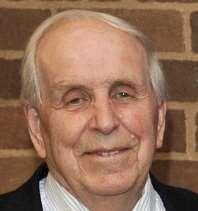
Professor Roger Valentine Short, FRS (11 July 1930–6 Aug 2021), Fellow 1962–72, Editor of the CollegeMagazine,1964–8. RogerValentine Short, born in Surrey and educated at Sherborne School, completed a BA in veterinary science at Bristol University in 1954 before a Fulbright Scholarship and an MSC in genetics at the University of Wisconsin. He arrived at Magdalene in 1956 to begin his PhD, was appointed University LecturerinAnimalHealthinJanuary1961,andwaselectedtoanOfficial FellowshipoftheCollegein1962. In1969hewasawardedanScDaswell as the Scientific Medal of the Zoological Society, London. Promoted to Reader in 1971, he continued his research at the Agricultural Research Council’s unit in the University Department of Veterinary Clinical Studies before he was appointed Director of the Medical Research Council Unit of Reproductive Biology and Honorary Professor at the University of Edinburgh. There, he joined Professor David Baird to run a globally renowned research institute and trained numerous influential scientists including Professor Jock Findlay and Professor John Aitken. His pioneering contribution to reproductive endocrinology and the discovery of the actions and molecular pathways of multiple hormones, such as progesterones and estrogens, is charted by a remarkable twenty papers in Nature and another twenty in The Lancet. Roger’s interests extended well beyond reproductive endocrinology and included warnings of the dangers of unchecked human population growth. Professor Stephen Tong (Mercy University, Cork) has written of how he ‘had the privilege of being taught all the tools of academia as an eager medical student by Roger – how to write (papers were penned line by line at his home with deep analysis), how to present with impact (avoid bullet points, end strongly, cut down on slides), and strategies to think laterally’. In 1982 Roger accepted a personal Chair in reproductive biology in the Department of Physiology at Monash University, Melbourne,andin1996hebecameaProfessorialFellowintheFacultyof Medicine,DentistryandHealthSciences attheUniversityofMelbourne. He is survived by his wife and fellow reproductive biologist, Professor MarilynRenfree,and theirtwodaughters.

Colonel Guy Nicholas Ranulph Sayle (1946–2022), OBE, Fellow 2002–03. Guy Sayle was appointed as Domus Bursar in February 2002. An Old Etonian, he arrived at Magdalene to read History in 1964. Graduating in 1967, he was commissioned into the Welsh Guards. During an army career of thirty-four years, he undertook numerous tours in Northern Ireland, served in Germany, and saw active service in the Falklands War. Latterly he was assigned to diplomatic duties as Defence Attaché in Egypt and Kuwait. He retired as a Colonel in 2001 and accepted an appointment as AdministratorofHighclereCastlebeforereturningtoMagdalenein2002. Living in College accommodation, Guy threw himself into his new role with considerable energy. He reorganised the Catering and Housekeeping Departments, increased staff pay and improved conditions of service, and initiated an ambitious programme of accommodationrenovations. Hebroughtanewenthusiasmanddriveto theconferencebusiness,inparticularmarketingtheCollegeasawedding venue. Moreover,hesoughttomakegreateruseoftheCollege'sfacilities by outside bodies, such as sports and social organizations. When Guy begantofeelthathisentrepreneurialactivities weresomewhatrestricted by the College's established financial and organisational procedures, he sought an outlet for his more commercial approach as a pro-active and effectiveMayBallSeniorTreasurer,bysupportingtheRowingClub,and byacting asan unofficialaccommodation agentfor the GraduateUnion. Eventually,aftersomeconferencingchallengesencounteredinmid-2003, he left the College to pursue his own business interests, drawing on his exceptionalexperienceandcontactsin theMiddleEast. Guyissurvived byhisex-wifeand three children.
ARThompson

Professor Colin Neville Banwell (31 Mar 1933–25 Nov 2022), Bye-Fellow 1958–60; Research Fellow 1961–63. Colin Banwell was born and educated in Eastbourne and in 1954 matriculated at Magdalene as a £60 Open Scholar and following National Service with theRAF. HegraduatedwithaFirstin Natural Sciences, was elected to a College Bye-Fellowship in 1958, and completedhis PhDin1960. He wasa member of Norman Sheppard’s research group at the Chemistry Department and worked on the early development of nuclear magnetic resonance(NMR)whichisnowsovitalapartofanalyticalchemistryand medical diagnosis. He moved to Switzerland in 1960 to undertake postdoctoral research before returning to Magdalene in 1961 as a Research Fellow. Colin married Brenda (née Fooks) in 1963. After his first lectureshipattheUniversityofSussexwherehebecamesub-Deanofthe department for more than 20 years, he moved (after brief periods at Columbia University, Canada, and Uppsala University, Sweden) to BruneiDarussalemasAssociateProfessorin1987wherehesetupanew Department of Chemistry before his retirement in 1992. When Colin started teaching, he considered that there were no really accessible textbooks for undergraduates to learn about spectroscopy and sat down to write what generations of students now fondly remember as a readable introduction to spectroscopy. The first edition of Fundamentals ofMolecularSpectroscopy waspublishedin1966,withsubsequenteditions in 1972 and 1983. The fourth edition, co-authored with Dr Elaine McCash, was published in 1994, and is still available, a remarkable feat for a science textbook. In retirement in rural France he enjoyed his pastimes of woodworking, gardening and music. He was an accomplishedpianist. In2022hemovedwithhisfamilytoIrelandwhere hediedpeacefullyonedayafterthe deathofhisbelovedwife.
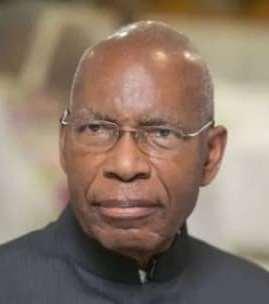
Professor Lewis Kajera Mughogho (2 Dec 1937–23 July 2022), Bye-Fellow 1966–67. Born in the remote village of Kawaza in northernMalawi(thenNyasaland),Lewis Mughogho attended a primary school in Bolero and then two boarding schools, Livingstonia Mission and the Dedza GovernmentSchool,incentralNyasaland. Here, he joined the first intake at the country’sonlyschooltohaveasixth-form, and met George Jackson, a Cambridge graduate and botanist in the colonial service who became a mentor and father-figure. After an undergraduate degree from the University College of Rhodesia and Nyasaland, he won a scholarship to Imperial College London in 1963 to take a Diploma in Plant Pathology. The following year, he arrived at Magdalene for doctoral research on rootinfecting fungi under the supervision of Denis Garrett, Fellow of the College. Returning to Malawi in 1967, he joined the Chitedze Agricultural Research Station to begin an academic career, much of it spent as Principal Sorghum Pathologist at the International Crops Research Institute for the Semi-Arid Tropics (ICRISAT) in Hyderabad, India. HereturnedtoCambridgein1977forayear’s VisitingFellowship at St John’s College. Ten years later, a further year’s study leave at the Commonwealth Mycological Institute inLondonenabledhim tolead an international working group on sorghum diseases. A tribute from the President of Malawi recognised his immense contribution to higher education in the country: he established the first Agricultural Degree programme at Bunda College of Agriculture in Malawi, became the Universityof Malawi’sfirstMalawianprofessor,andinlaterlifewasthe first African Executive Director at ICRISAT. In retirement he served on several boards and commissions, including the African Union’s HighLevelPanelon ModernBiotechnology.

Wing Commander Peter John Daybell, MBE (1949–2023), Fellow-Commoner 2004–09. Peter Daybell was appointed as Assistant Bursar in October 2004. A decorated veteran of the first Gulf War, Peter was educated at Stonyhurst College, read History at Reading University and subsequently took an MA in War Studies atKing'sCollegeLondon. Commissioned intotheRoyalAirForce,heservedmainly in the United Kingdom but also at the British High Commission in Australia and in Saudi Arabia. After leaving the RAF, Peter became Head of Facilities Services at University College London before joining Magdalene. The Assistant Bursarship was a newly-created role which replacedthatofDomusBursarwhichhad lapsedayear previously. The new post established clearer lines of responsibility, accountability and reporting within the Bursary, and Peter proved to be the ideal first incumbent; principled, honest, loyal and with complete integrity. He was considerate to both the Fellowship and College Staff and in return earned their respect and affection. He steadied a ship that had suffered from upheavals that had necessitated a bursarial reorganisation at the endof2003andhebroughtacalmandcompassionatemanagementstyle to his wide-ranging responsibilities. He trusted his staff and supported their decisions, greatly improved HR procedures, introduced effective staff training and appraisals, and implemented new Health and Safety policies. Peter was a very good organiser, and introduced 'management walks' to identify problems in the College estate and formulate appropriate action plans. Moreover, he was popular with the student body for his fairness and approachability. Peter had an abiding interest in military history and his book With a Smile and a Wave, a biography of his fellow Stonyhurst alumnus Captain Aiden Liddell, VC MC, was published in 2004. Peter retired from Magdalene in 2009. Sadly, he became progressively unwell in retirement and he died in the spring of 2023. He issurvived byhiswifeMaryandtheirtwodaughters.

Michael James Langley Hardy (3 Jan 1933–38 Jan 2022). Michael Hardy attended Beckenham and Penge Grammar School followed by two years of National Service, where he learnt Russian at the Joint Services School for Linguists. The first in his family to go to university, he won an Exhibition to read Law at Magdalene in 1953, and then took an LLB in international law. As a young lecturer at ManchesterUniversityhemethiswifeSwanaMetger,wholecturedthere in German and Comparative Literature. They were married for more thansixtyyearsuntilherdeathin2021. Soonaftermarriage,hebeganas legal officer at the UN Relief and Works Agency with a placement in Beirut. AfurtherLLMthesiswaspublishedin1963as BloodFeudsandthe PaymentofBloodMoneyintheMiddleEast. UNRWAledtolegalservicein the UN Secretariat in New York, with a year in Katmandu as a legal advisor to the Nepalese government. His openness towards other cultures included a particular enthusiasm for the European project and in 1973 he joined the legal service of the European Commission, soon specializinginthe unificationofthetelecommarket. Duringtheseyears healsobegantopaintseriously,andonretirementfromtheCommission took a BA and then an MA in fine arts at Plymouth University. He kept in regular contact with the College, attending Choral Evensong as recentlyasOctober2021.
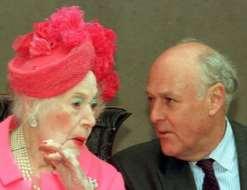
Ian Hamilton McCorquodale (11 Oct 1937–10 Feb 2023). The son of Hugh McCorquodale and Barbara Cartland, IanMcCorquodalewassenttoboardat Harrow. He recalled how he was bulliedbecauseofthelongflowinghair which his mother adored. His unswerving affection for his mother was evident at Magdalene where he read History between 1956 and 1959. It was a loyalty that remained throughout his life. After graduation, he joined the family printing business before moving to the British Printing Corporation where he
worked his way up to sales and export manager, but finally resigned to becomefullyengagedwithCartlandPromotionsInc. DameBarbarawrote a total of 723 romantic novels and other books with a conservatively estimated worldwide sale of more than 750 million. Ian steadfastly managedhismother'scareer,lookedafterhercopyrightsandtranslations, dealt with publishers, and undertook what little research was necessary for the next publication. After his mother's death in 2000, he discovered firstthatshehadspentherentirefortuneandsecondthatshehadlefthim 160unpublishedbookmanuscripts. Anastutebusinessman,hespentthe following years single-handedly editing and publishing these tales. The Pink Collection accumulated at the rate of a volume per month, each bound in his mother’s hallmark hue and featuring a tremulous heroine and brooding hero. Ian dined regularly with his mother at home, where, even à deux, herecorded,black tiewascompulsory and all the silverware wasused.

MoragodageChristopherWalterPinto (17Nov1931–21 July 2022). Born and educated in Sri Lanka, Chris Pinto read law at the University of Sri Lanka, Peradeniya, and the Sri Lanka Law College, graduating as an Advocate of the Supreme Court of Sri Lanka. He matriculated at Magdalenein1956. From1967heservedasLegal Adviser and Head of the Legal Division of the Ministry of Foreign Affairs, also serving in Vienna,asRepresentativeofSriLankatotheUNConferenceontheLaw ofTreaties. ForthenextthirteenyearshewasRepresentativeofSriLanka in the Sixth (Legal) Committee of the UN General Assembly, and between 1976 and 1980 he served as Sri Lanka’s Ambassador to the FederalRepublicof GermanyandtheRepublicofAustria. Amemberof the International Law Commission from 1973-81 and its Chairman in 1980, until 1982 he remained the Representative of Sri Lanka to the UN Sea-Bed Committee and to the Third UN Conference on the Law of the Sea. AtthatconferencehechairedtheSriLankaDelegation1980–81and played a major part in the successful conclusion of the negotiations. Between1982and2011heservedasSecretary-GeneraloftheIran-United States Claims Tribunal. He was a member of the Sri Lanka national
group at the Permanent Court of Arbitration in The Hague and of the panel of arbitrators of the International Centre for the Settlement of Investment Disputes and the Law of the Sea Convention. A member of numerous academic and legal organizations including the Institut de Droit International, the International Law Association, and the International Ocean Institute, for several years he directed a course on theLawoftheSeaasVisitingProfessorattheWorldMaritimeUniversity inMalmö,Sweden. Heco-foundedtheFoundationfortheDevelopment of International Law in Asia and was founding Co-Editor of the Asian Yearbook of International Law.

Canon John Henry Lewis Rowlands (16 Nov 1947–30 June 2022). For 45 years, John Rowlands served the ChurchinWalesinmanyposts,includingasWarden of its only theological college. Born in Carmarthen and educated at its Queen Elizabeth Grammar School, he read History at St David’s College Lampeter and then arrived at Magdalene in 1968 to read Theology. Ordained in 1972 following training atWestcottHouse,heservedhistitleinAberystwyth,andaftermarriage to Catryn in 1976, returned to Lampeter as the college’s first chaplain. Three years later, he moved to St Michael’s College, Llandaff, where he remained for 18 years before his appointment as Vicar and then Team Rector to the large parish of Whitchurch. He was also a member of the Chapter of Llandaff Cathedral, first as Canon from 1997 and then as Canon Chancellor from 2002 until his retirement in 2017. A family man and a great book collector, he loved many sports, especially tennis and rugby. HehadaspecialdevotiontoJohnHenryNewmanandhis Church, State,andSociety:TheAttitudesofJohnKeble,RichardHurrellFroudeandJohn Henry Newman, 1827-1845, was published when he was Warden of St Michael’s. Canon William Price writes that he was ‘a priest in the Catholictradition… heloved the good thingsof life… good food,aglass in his hand, and exciting holidays in faraway places… But throughout his life he never wavered in his priestly ministry’.
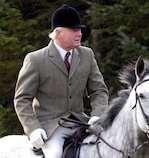
PatrickJosephScottPlummer (24Aug1943–6Dec 2022) was educated at Belhaven and Radley beforearrivingatMagdalenetoreadHistoryin 1962. In the same year, he captained the Duke ofBuccleuch’sHuntteamtovictoryinthePony Club national eventing championships and became Master of Cambridge University Draghounds. Training with McLelland Moores,hejoinedCazenoveandCoin1968. Its youngest partner in 1974, he resigned in 1980 to return to his Scottish familyhome. Ayearlater, hejoinedMartinCurrie’sinvestmentventures in China, India and other emerging markets. He served as managing director from 1996 and chairman from 2001 to 2005. He was Deputy LieutenantofRoxburghshireandatrusteeofAbbotsford,thehomeofSir Walter Scott, helping to raise £11 million for its renovation. A keen amateur actor and choral singer, he appeared in productions of Oklahoma! and South Pacific for the Kelso Amateur Operatic Society. As opposition to fox hunting grew and hunting wild mammals with dogs forsportwasbannedinScotlandin2002,JoeScottPlummerhelpeddraft a fox control protocol that controversially enabled certain hunts to continue north of the Border. He was joint master of the Duke of Buccleuch’sHunt(founded1827)from1981to2007. Intheseason,it met threetimesaweek.

Anthony (Andy) Maurice Herbert Simpson (28 Oct 1935–14 Aug 2022). Born in Leicester, Andy Simpson was a grandson of a former mayor of the town and of a member of the French National Assembly. After Rugby School, he read History and Law at Magdalene 1956–59, but unlike his father and two older brothers, did not then join Herbert Simpson, Son and Bennett, the family law firm. Instead, he was called to the Bar in 1961 and admitted to Inner Temple where he practised as a barrister until 1975. His real loves, however, were politics and languages (of which he spoke several). His French roots made him an enthusiastic European, and he had translated FrenchandGermanlawreportsintoEnglishsince1962,joiningtheLegal
Service of the European Commission in Brussels the following year. He was an obvious choice for his party, the Conservatives, when the European Parliament first held direct elections in 1979 (also having cut his teeth fighting a safe Labour Westminster seat in the two general elections of 1974). As Member of the European Parliament for Northamptonshire (later incorporating South Leicestershire) from 1979 to 1994, he also served for more than a decade as one of the five Quaestors, appointed as a member of the Governing Bureau to oversee administrativeandfinancialmattersfor allhiscolleagues. Between1994 and retirement in 2000, he returned to the European Commission where he set up the DAPHNE programme to help combat violence against women and children and was Treasurer of the European Foundation for Street Children. Between 1959 and 1975, he served in the Territorial Army with the 21st Regiment of the SAS (The Artist Rifles) and later became a Major of the 23rd Regiment. He moved to London but maintained his Leicester roots by being a Governor of De Montfort Universityfrom2004 to2008.

Nicholas Snowman, OBE (19 Mar 1944–2 Mar 2023).
Born in London, Nicholas Snowman attended Highgate School and in 1963 matriculated at Magdalene where he read English. As an undergraduate he restarted the long-defunct CambridgeUniversityOperaSocietytogetherwith the conductor David Atherton. In College he shared rooms with John Simpson (now Honorary Fellow) who helped him edit the student newspaper Granta. It was also during his time at Magdalene that he began to champion the music of contemporary composers such as Alexander Goehr and Peter Maxwell Davies. He and Atherton founded the London Sinfonietta and at their firstconcertin1968premieredJohnTavener’s The Whale. In1972hewas appointed artistic director of the then unbuilt Pompidou Centre, Paris, andin1980becameGeneralDirector(Arts)oftheSouthBankinLondon, where he brought new coherence to a disparate group of buildings and organizations. HewaspromotedtoChiefExecutivein1992,butby1998 was relieved to return to the Glyndebourne Festival Opera as General Director(hehadbeenanadministrativeassistantthereforthreesummers following his graduation from Magdalene). In the words of one
newspaper obituarist, ‘the promise, or threat, of new operas by Birtwhistle,ElliottCarterandPeterBotvoshadGlyndebourneaudiences choking on their champagne, and after two years Snowman departed abruptly’. In 2002 he became GeneralDirectorof the OperaNational du Rhin, but also, in the same year, succeeded his father as Chairman of Wartski,thejewellers. Hewasthefourthgenerationofhisfamilytohold thatposition. Made aChevalier oftheOrdreNationaldu Méritein1995 andoftheLégion d’Honneur in 2008, he was appointedOBEin2014.

Dursley Stott, OBE (13 Feb 1935–6 Aug 2022). In 1958, while an undergraduate at Magdalene, Dursley Stott ran in the Commonwealth Games. Entering the100yardand200yardraces atCardiff, hewasamemberoftheGames’firsteverIsleofMan athletics team. Following his graduation in 1959 he began a business career, starting with the family firm Stott and Co, and eventually becoming managingdirectorandseniorpartner. Healsoworkedforprivatebanks, including Duncan Lawrie and the Capital International Group, and was aconsultantforinvestmentserviceRamseyCrookallbeforeretiringat82. He was a member of the Royal Society of Arts, President of the Manx RoundTableandRotaryandreceivedalifetimeachievementawardfrom the Chartered Institute for Securities and Investment after becoming a CharteredFellow. HisOBEwasawardedforhisworkfortheRedCross. He stood down as President of the Isle of Man Commonwealth Games Associationin2006,havingservedtheassociationformorethan36years andnine Games.
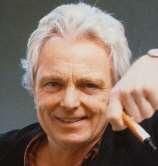
John Richard Thompson (7 Feb 1944–29 Dec 2022).
John Thompson devoted his career to working with local people to create places nurturing a senseofcommunity. Bornin Leamington Spa,he came to Magdalene from Oundle in 1963 to read architecture. In the year of his graduation, 1969, he established a highly successful practice, Hunt Thompson Associates (now HTA Design), followed by John Thompson & Partners (now JTP) in 1994. A fine
exampleofhisworkisLeaViewHouseinHackney,aninter-warhousing estate blighted by crime and anti-social behaviour before its renovation in the early 1980s. He also renovated a number of public houses, most notably The Chandos in St Martin’s Lane, London. His work in 1998 to regenerate Caterham Barracks for Linden Homes represented the first such collaboration with a private developer in this country. Today, the village is a thriving mixed-use neighbourhood, and its success has inspired similar schemes in Russia, Germany, Italy, France, Iceland, Sweden, Ireland and most recently across China. In 2006, the growing acceptanceoftheseschemesledhimtoestablishthenon-profitAcademy of Urbanism. He was a founder member of the Urban Villages Forum and between 2004 and 2009 chair of the RIBA Planning and Urbanism Group. He was recognised with a presidential citation from the American Institute of Architects and a lifetime achievement award from TheUrbanDesign Group.
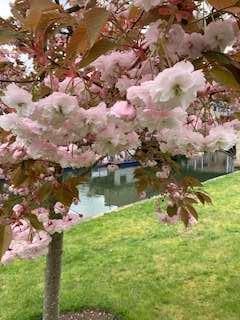
DevelopmentDirector'sReport
This first post-campaign year has offered the Alumni & Development Team at Magdalene some much needed time to regroup and refocus on the way ahead. The new Student Welfare and Mental Health Fund was launched, and we were humbled to reach the initial target in a matter of months. The College was able to create a new pastoral post and then welcome the first Head of Student Wellbeing at Magdalene as a direct result of the donations received. We continue to fundraise for this area as it resonates with many Members who have responded generously to ensure thattheCollegecanexpand itsprovision inthis importantarea.
We have been most fortunate in receiving some major new gifts this year, such as a generous benefaction to create the Carne MML Fund in support of students taking a Year Abroad as part of their study of languages; a significant donation to endow a generous new annual bursary,theRFK WritingBursary, withtheaim ofencouragingstudents to become a published author; a very substantial gift to name the last remaining room in the New Library which has boosted the Library endowment fund greatly; and a principal gift to endow the Caldecott Bursary Fund for those international students at Magdalene who find themselvesstrugglingto makeends meet ascostscontinue torise.
Predicting how the first year following a successful campaign mightgointermsoffundraisingisalittleliketheweatherforecast;there isagoodchancethatsomeofitwillcometrue! Weanticipatedthatsome donors might feel fatigued, may look to support other philanthropic activitiesandthattheinflationarypressuresaffectingusallwouldimpact our fundraising this year. However, I am delighted to report that we werewrong,andresultshaveonceagain defiedexpectations. Thanksto the continued astonishing generosity of Magdalene Members and Friends we raised £3,758,000 from almost 1,000 donors, many of whom make regular gifts to Magdalene. The impact of these monthly gifts is veryrealasweareabletoincludethepledgedtotalsinourannualbudget which ishugelyhelpfulduring thisfinanciallychallengingtime.
This wonderful total is in part owing to the highest ever result achieved in terms of funds raised at this year’s Telephone Campaign. ColleaguesintheDevelopmentTeamworkedwithtwelveofourcurrent studentswhodidamarvellousjobrepresentingtheMagdaleneoftoday; they really are our best ambassadors. They spoke to hundreds of Members who not only took the time to chat with the callers but also
chosetomakeagift. Becauseofthisunwaveringlygeneroussupport,the College has been able to uplift every bursary and every studentship by 10% in recognition of the cost-of-living crisis, safe in the knowledge that thefundsraisedforstudentsupportwillcover thisadditionalcost.
The ongoing and remarkable generosity of Magdalene Members and Friends means we can continue to strengthen our teaching and pastoral care, upgrade and enhance the facilities for the resident community,andsafeguardourhistoricestate. Thankyou.
We were delighted to visit Hong Kong again after a gap of three years. We are grateful to Henry Pang (1986) who graciously and generously hosted a rooftop drinks reception overlooking Hong Kong harbour. WewerewarmlywelcomedbysomanyMembers;ittrulywas a pleasure to catch up and see so many familiar faces again after the difficultCovidyears.
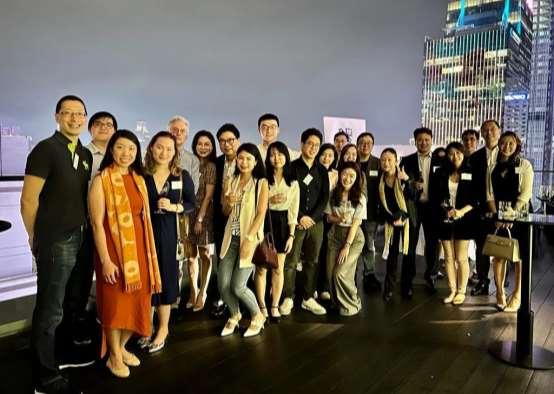
We also visited the USA last November travelling from the East Coast to the West Coast and met with dozens of alumni along the way. College Dinners took place in Washington, New York, Seattle and San
FranciscoandweonceagainowehugethankstoDrFrankCrantz(1969), RobertChartener(1982),Fellow-Commoner,andMarshalMcReal(1992) for their generosity in hosting and supporting the alumni relations team with the arrangements for these events. The generous welcome we received was wonderful and we are thankful that so many Members in the USA choose to give every year. Indeed, at the end of this year we passed the $10 million milestone in terms of donations received via the Magdalene College Foundation. We owe the Directors, led by Robert Chartener (1982), Fellow-Commoner and Chairman, Geoffrey Craddock (1977),TheHonourableDavidBrigstocke(1971),SuzannaJemsby(1990), DrJasonHafler(2006)and GrahamWalker (1982)adebtofgratitudefor theirwonderfulsupport.
Not only have we welcomed well over 3,000 Members, Friends, and their guests to almost 50 different events, large and small, but we also remain in touch with many of you by means of our annual alumni newsletter, Magdalene Matters, the termly e-newsletters, by email and social media. We strive to keep the College’s website updated and relevant and our efforts are rewarded by the many thousand website users who visit our site every month; the very many followers we have on our collective social media sites and the fact that thousands of you contact us by email, telephone, and letter over the course of a year. We welcome the interest, feedback and comments from our alumni and encourage you tostayintouch.
AcompletelistofMemberswhohavesupportedtheCollegewithadonation during the past financial year (1 July 2022–30 June 2023) will be available in the new ImpactReport, which will be published in the autumn.
College servants do not often feature in college histories. Nor does the everydaymaterialculture. Butbrainsmustbefed,andthatjobfelltothe cooks. Meanwhile,theplatesanddishes,bearingthenameofthecollege anditsarmorialbadge,linkedthephysicalactofdiningtothecommunal bondofcollegiate identity.
In the eighteenth century, college cooks were semi-independent contractors, running the kitchens with a retainer from the College but making most of their income from charging the Fellows and undergraduatesformealstakentotheirroomsandforanyitemsordered above the basic one-and-a-half pounds of meat with vegetables and a sweet for their dinner. Information about Magdalene’s cooks can be gleanedfromtheaccountbookslistingnecessaryexpenses,andfromthe bundles of bills which itemize quarterly payments to the cooks. In 1781, for example, the cook was paid £7 wages per quarter along with £5 for coals and smaller sums for coals for the combination room and brew house. A bill paid to the cook William Winder, at Michaelmas 1793, showsthataswellas£7quarterlywagesand£5forcoals,hereceived£16 4s6dfromcommons’payments,thesourceofmostofhisincome. Cooks kept their own accounts of what was ordered and by whom; but unfortunately,becausetheywerenotunderthestatutoryemploymentof theCollege,theiraccountsandreceiptswerenotretainedinthearchives. Cooks were paid additional sums for serving at feasts, and specialist cooksmayhavebeen brought inonsuch occasions.
WilliamWinderwassucceeded,in1799,byacooknamedThomas Riddell. Born in 1774, on his appointment he secured a substantial rise inthecook’swages,from£7to£1210s,alongwiththe£5forcoalsandso forth. Riddell served the college for 27 years, in which time there were occasional price rises. In December 1806, for example, the Fellows agreed, ‘owing to the high price of beer’, that a quart was to be charged at7d,apintat3½d,andahalfpintat2d,makingitmorecost-effectiveto drink beer by the pint. Wine and fruits were supplied separately by the butler. In the quarter from Midsummer to Michaelmas 1822, the necessary expenses show that as well as the cook’s wages and payment forcoals,afurther£5waspaidtothecookfor‘festivals’,anadditional£6
4s 5d to the cook for a ‘feast in hall’, and 14s 6d for ‘sauces in hall’. Such payments cropupannuallyinthe College accounts.
In 1826, Riddell left the College’s employment and set up shop as a beer retailer in Magdalene Street. His successor was Charles Prosser, who took the job on a quarterly wage of £12 11s – a shilling more than Riddellhadsecuredin1799. Thisroseto£1212s6din1827,butthecook was now receiving £10 for coals each quarter, a reflection of the rising costs of maintaining fires and ovens. During Prosser’s tenure there was asignificantchange – thecookceasedtobewaged,in1839,becomingan independentcaterer. Thechangewasunderwayby1836,whenanorder was agreed for the keeping of caterer’s accounts, and references to the ‘caterer’ (that is Prosser, the cook) begin appearing in the College’s records. Prosser lived with his family in Magdalene Street. Profiting from the catering trade, he purchased the leasehold of two tenements in Castle Street, on the site of Kettle’s Yard. In 1842, the College accounts notice an outstanding bill of Prosser’s for the large sum of £49 17s. Prosser died in 1846, leaving his widow, Maria Elisabeth. Riddell died thefollowingyear, andMaria remarried.

Prosser’s successorwas Edward Hills, of Littleport. Heislistedin 1851 as a cook (that is, caterer) employing three men and two women, and living at no 6 Magdalene Street. By 1861, he had moved to no 8 Magdalene Street, and is listed as ‘Master Cook’, employing four men.
His houses stood in the row that was demolished for street-widening in the early twentieth century. Today, their foundations lie under the Master’s front garden and Benson Hall. Hills died in 1866, aged about 53. Hewassucceededbyacateringteam,madeupofJohnHobson(born c 1813 in Milton) and Thomas French (born in Cambridge in 1834), the son of a college servant at Jesus Both were cooks by trade, and in 1866, Hobson was appointed cook at Magdalene, and French was appointed Porter. His younger brother, Jack French (born c 1844), was appointed under-porter in the same year. It is likely that Hobson and the French brothers were three of the men employed by Hills, and that the College simply retained its former caterers while employing two of them as porters. Their duties, as such, included maintaining the fire in the combination room and carrying work for the caterer, such as carrying mealstoFellows. ThomasFrenchdiedin1875,agedaboutforty. Hobson left the College about the same time, and the College appointed William Swannell (bornc1836).
SwannellservedMagdalenefor26years,becomingawealthyman in the process. In 1881, he lived at no 74 Castle Street with his wife Hannah,daughterElizabeth,andadomesticservant,Emma. By1901,he had purchased properties in Huntingdon Road, where he was listed as ‘Head College Cook’. One of the cooks then in his employ was Frank William Hobson, aged 32, son of the previous cook John Hobson, who had died in 1899. By this point, the era of the independent caterer was coming to an end, hastened by high prices, poor quality cooking, and a scandal in which tradesmen and college servants had conspired to defraudacollege. OnSwannell’sretirementin1901,Magdalenewasthe last college to take the running of the kitchen back into its own hands, guided inthisdecisionbyArthur Ramsey,theSteward.
The first step Ramsey took was to purchase the cooking utensils andcrockeryownedbySwannell. Intotal,itwasvaluedat£700,andthe sum was dulypaid. JackFrench, who intheintervening years hadrisen tobecomeCollegeButler,wasthenappointedKitchenManager. Hehad some experience in the catering trade and was to act as a buyer of provisions. Frank William Hobson was appointed Head Cook under French in 1903. Swannell, meanwhile, suffering ill-health, had retired to Caernarfonshire with his daughter, where he had died the previous September,leaving£14,8655s4dinhiswill.
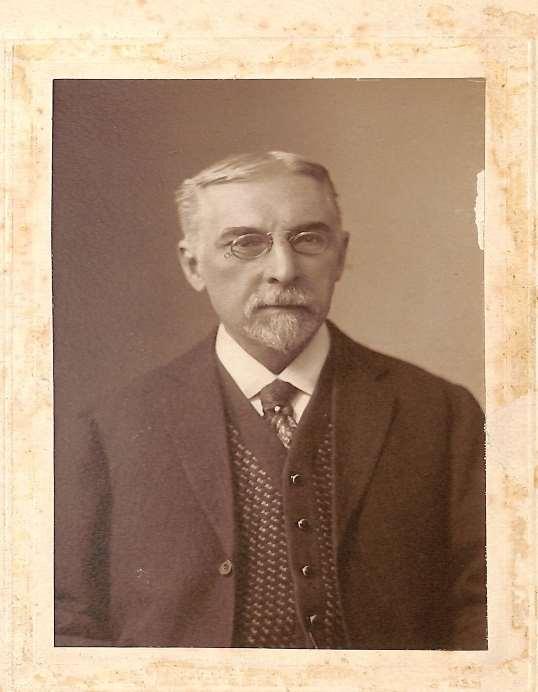
Jack French
According to Ramsey’s memoir, the College’s decision (on his advice) to resume control of the kitchens was an immediate success. Profit from the Kitchen Account in the first year, with only forty men in residence, was £200. By 1912, the Kitchen Account was making a profit of £1,300 a year. In the latter year, Jack French died at a dinner of the Conservative Club. He had served the College for fifty years, since the
ageof17or18,firstemployedasaservantin1862,beforerisingtoUnderPorter,Porter,Butler,KitchenManager,andsometime caterer.
Throughout the eighteenth century, colleges used pewterware for ordinary dining. Cheaper than the ceramics that were available, pewter plates and dishes could also be repaired. Magdalene’s accounts list regular payments to the tinman and, later, ‘for repair of plates and dishes’. The drawback was that pewter was scratchy and might be thought to flavour the food. By the 1760s, however, the emerging Staffordshirepotterieswereturningoutgoodqualityplatesataffordable prices. In the last decades of the eighteenth century, white salt-glazed stonewareyieldedtocreamware,thenpearlware,asthepreferredchoice. Trinity was possibly the first college to supplement its pewterware with ceramics. A plate survives in white salt-glazed stoneware, dating from the 1760s, which bears the name of ‘Bartholomew Fuller of Trinity College Cambridge’. Fuller (d 1770) was the cook, and the practice of having one’s name stamped or painted on tableware had lately become common among publicans and caterers. Its purpose was to ensure the returnoftheir mugs andplates,when lent,andto detertheft.
Between the 1760s and the 1840s, colleges slowly switched from pewter to ceramics. Seldom, if ever, was one wholly replaced with the other in a single event. Often the two co-existed for decades, with china reservedfortheFellowsorspecialdining,suchasfeasts,wherechinaand silverware were used. In 1781, Magdalene spent 5s on ‘2 Dozen of Soup Plates’, but the first certain reference to the purchase of ceramics is a paymentin1811to‘Barrett’of£817s4dfor‘platesanddishes’. Thiswas Simon Barrett (1782–1827), a Cambridge china dealer, whose sons and descendants continued to supply crockery to the colleges all the way to 1974. Barrett’s was supplying glasses to Magdalene by 1803. By 1816, there are regular payments for (ceramic) ‘plates and dishes’ of variable sumseachyear. In1816,£919s18dwasexpendedonthisaccountsitem, but in 1818, only £3 6s 6d. The variation reflects the variable breakage and replacement rate, as wellas occasional decisions to add to the stock. Fluctuatingundergraduatenumberspossiblyinfluencedthesedecisions. Sevenstudentswereadmitted,forexample,in1822,but19thefollowing year.
Pewter continued in use, certainly for the undergraduates, and occasionalexpensesfor‘cutleryforhall’arerecorded(e.g.£77sinEaster Term, 1834). This was of pewter or silver plate. Silver cutlery and silverware was giftedtothe College by itsmembers. In1835, apayment of £3 9s 6d was made ‘for engraving and repair of plate’, suggesting a decision to engrave the name of the college, or caterer, on the pewterware. It may be significant that caterer’s accounts were ordered to be kept the following year, and that the cook became an independent caterer soon afterwards. The engraving of names on the plate, to designateownership,wasastageinthetransition. Itmaybeaninstance of the proprietary marking of tableware migrating from ceramics to pewterware, given that ceramics were routinely bearing the names of collegesandcollegecooksbythatdate. Thelastannualbillfortherepair of plate appears in the accounts for Lent 1839, when the catering was privatised,withthecookhimselfpickingupfuturebillsfortheservicing andprovisionof tableware.
Although Magdalene used ceramics as early as 1811, no plates bearingthenameofThomasRiddell(cook1799–1826)orCharlesProsser (cook 1826–46) are known to survive. Yet it is highly likely that plates were produced with their names painted or stamped on the underside, sincethatwasnormalpracticeamongcollege cooksatthatdate. Several hithertounknownexamplesofnamedcooks’platesassociatedwithother collegeshavebeenfoundduringexcavationsinCambridge,discussedby Craig Cessford of the Cambridge Archaeological Unit. Recovered items include plates of Barnett Leach (active c 1810), cook at Trinity and landlord of The Pickerel. Excavations in the right spot might uncover fragments of plates bearing the names of Riddell and Prosser. It is interesting to note that in 1826, when Prosser took over as cook, a large payment of £21 16s for plates and dishes was made to Mortlock, a new supplier. Itmayrepresentaninitial outlayoncrockery markedwiththe new cook’s name. Before this time, the annual expense had usually been lessthanhalfthatamount. Collegepaymentsforplatesanddishescease entirely after1832,andit wasin thefollowing yearsthat Prosserbecame an independent caterer, charged with supplying and maintaining the tablewarehimself.
Plates do survive bearing the name of E Hills (1846–66), Prosser’s successor. Threetypesareknown,allproducedbyCopeland,lateSpode, whowasthelargestsupplierofcollegeceramics. First,therearethelarge
serving platters decorated in Spode’s ‘Italian pattern’ in transfer-printed blue and white (Plate 1). The cook’s name, ‘E. Hills’, appears on the upper side, encircled by a ribbon bearing the name ‘Magdalen College’ (without the final ‘e’). Second, there are the plates of various sorts that are decorated all over with the ‘Geranium border pattern’ in light blue, which bear the same badge, ‘E. Hills, Magdalen College’ (sic), prominently displayed on the upper side (Plate 2). They may have includedthethree-piecebrothbowl,withlid,bowlandstand,aspictured in Spode’s shape book of the 1820s, but there are no pieces known to survive bearing Hills’s name, only the names of Hobson and French, his successors. Third, there is a superior form of dish, with a polychrome border in ‘Wild Rose’ pattern and a gilded edge (Plates 3 and 4). The dish,alsoCopeland(suppliedviaBarrett),has‘E.Hills’ontheunderside, and an armorial on the upper side, showing the College’s heraldic achievement – atthisdatewithoutthecrowninghelmetandwyvern. At othercolleges,armorialplateswith thearmsvisibleand thecook’sname concealedontheundersidewerereservedforFellows. Hills’sthirdtype oftableware canbeputin thesamecategory.
Compared with ennobled families, whose arms were adorning theirpewterwarebytheearlyseventeenthcentury(andtheirceramicsby the 1750s), colleges were latecomers to this articulation of collective prestige. ArmorialprintingonplatesappearstohavebegunatTrinityin the 1830s, competing with designs on plates representing iconic buildings,suchastheKing’splatesshowingacrudeimageoftheChapel. AnorderintheStJohn’sBursars’accountsfor13October1840instructed CopelandandGarrett(asthefirmthenwas)tosupplyprintedplatesand dishes. The order itemised 50 dozen plates ‘with badge’ at £18 15s; 20 dozen plates ‘with brown border and arms’ at £7; 36 dozen covered dishes (no printing specified) at £4 10s, etc. Taking Magdalene as a parallel case, the set of plates with the ‘badge’ must have referred to the specimensbearingtheCollege’s name in a ribbonorsimilar device,with the cook’s name. The ‘arms’ and ‘border’ were likely to have been the superior Fellows’ plates, displaying the heraldic achievement; and the cheaper covered dishes might be the broth bowls – cheaper because unmarked inthis instance.
JohnHobsonand ThomasFrench(1866–75)alsoused thefirst two types of tableware – the serving dishes in ‘Italian pattern’ and the broth bowls with all-over ‘Geranium border’ (Plates 5, 6, 7 and 8). As Hills’s
likelyformeremployees,HobsonandFrenchsimplycontinuedtousehis designs and patterns but changed the name. They also probably inherited his own stock of plates and mixed them in with theirs. I have notcomeacrossexamplesofthethirdtypeofplatebearingeitheroftheir names – that is, the Fellows’ plates with the armorial. But the useofthis type continued, given that examples survive stamped with the name of Swannell,theirsuccessor(Plates9and10). Platesinthisstylebearingthe namesofHobsonandFrenchmightthereforebeexpectedtobefoundin future. Hobson and French retained Hills’s spelling of ‘Magdalen’ without the final‘e’.
Swannell’s early blue and white serving platters continued the traditionofdisplayingthecook’snameencircledbyaribbonbearingthe name of the College, but Swannell evidently put in a request, via his supplier, to the pottery, that the spelling should be amended from ‘Magdalen’to‘Magdalene’(Plate9). Plattersbearinghisnamerevealthat heordered(throughBarrett)fromCopeland/SpodeandEdge,Malkin& Co – apotteryHillshadalsosourcedplatesfrom. Swannellcontinuedto order Fellows’ plates with a polychrome border – a variant of ‘Wild Rose’, and the armorial on the upper side, with his name on the underside. At first, the armorials lack the helmet and wyvern (Plates 10 and 11), but later he switched to monochrome plates in greenish grey, with the heraldic achievement now showing the helmet and wyvern on topofAudley’sshield(Plates12and13). Asbefore,hisnameappearson theunderside. After1901,whentheCollegetookovertherunningofthe kitchens, the greenish monochrome design was retained but Swannell’s name is absent, and we find, instead, either the armorial alone, or ‘MAGD.COLL.’,orboth,printedontheplates(Plates14and15). About 1910, the College switched to plates with a decorative blue and pink borderwithacentralarmorialinblue(Plate16). Thesetooweresupplied from the Staffordshire potteries by Barrett & Son Ltd of Cambridge, and are the first plates on which no names – whether of the College or of the cook – appear. In later years, plates had a blue line border and central armorialin blue.
The late Peter Stovin, in 1999, published an article about nineteenthcenturyCambridgecollegeceramicsinthe Journal ofthe NorthernCeramic
Society (vol 16). He provides lists of cooks,derived from censusrecords, directories and pollbooks;approximate dateswhere known, anddetails ofextantplates. Stovin,acollector,didnotknowoftheexistenceofsome early plates, attested subsequently by the discovery of fragments during archaeological excavations. His dates are approximate but sometimes incorrect, and he included a couple of cooks who may have been misplaced. Elizabeth Gooding, listed as a Magdalene cook in 1861, in Stovin’s list, was, in fact, cook in the Master’s household. James Foss, listed as a Magdalene cook c 1841, remains a mystery. I have not been able to find where Mr Stovin obtained his information on Foss, nor have I found any reference to a James Foss active in Cambridge at that date. There is, however, a plate which Stovin owned – now in my own collection – in Mason’s Patent Ironstone China, decorated in blue with the‘Birdsof Paradise’pattern. Thepotterymarkdatesitbetweenc 1813 and 1820, and, on the underside, is painted the name ‘James Foss’. The plateistypicalofCambridgecollegeplatesoftheperiod,butthereseems to be no room for Foss to have been cook at Magdalene, given that Riddell’s years of tenure (1799–1826)overlapwiththedateoftheplate.
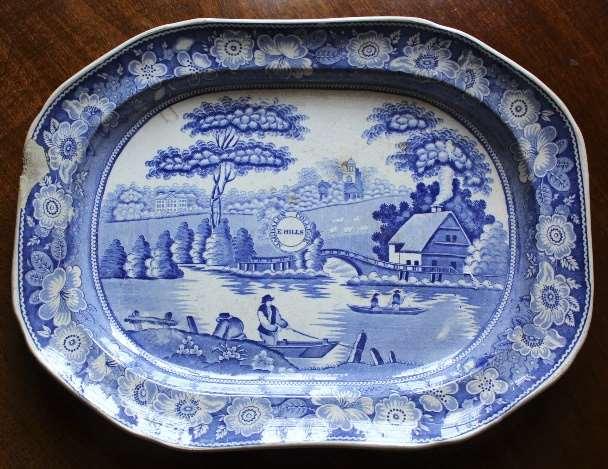

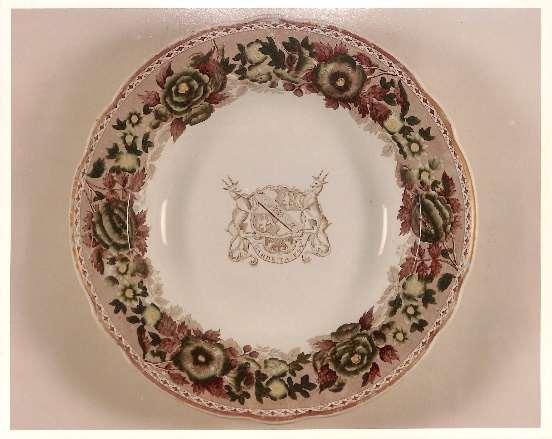

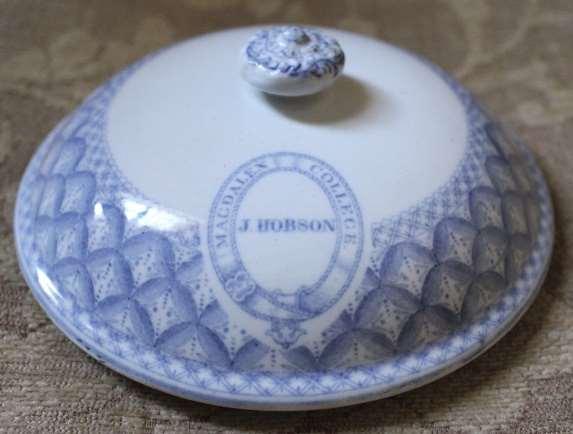


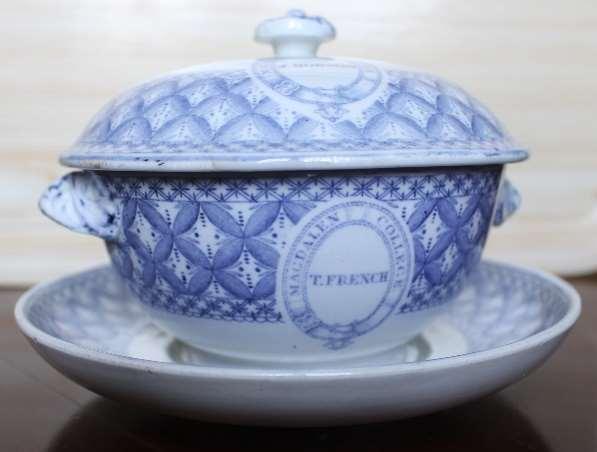
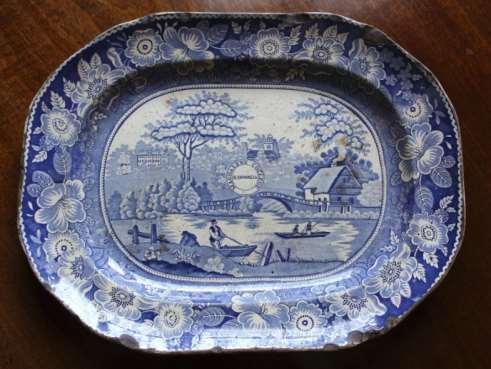
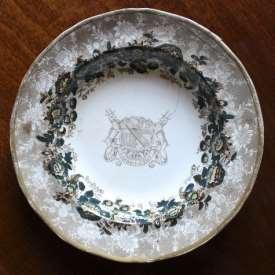
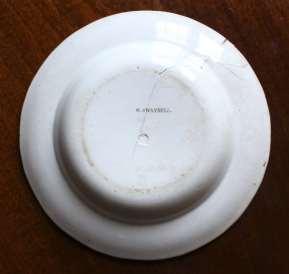
Pls 10 & 11: Fellow’s plate, with armorial; polychrome border ‘Wild Rose’ & underside, with cook’s name. W Swannell (1875–1901)

Pl 12: Serving platter with armorial; monochrome border and underside with cook’s name. W Swannell (1875–1901)
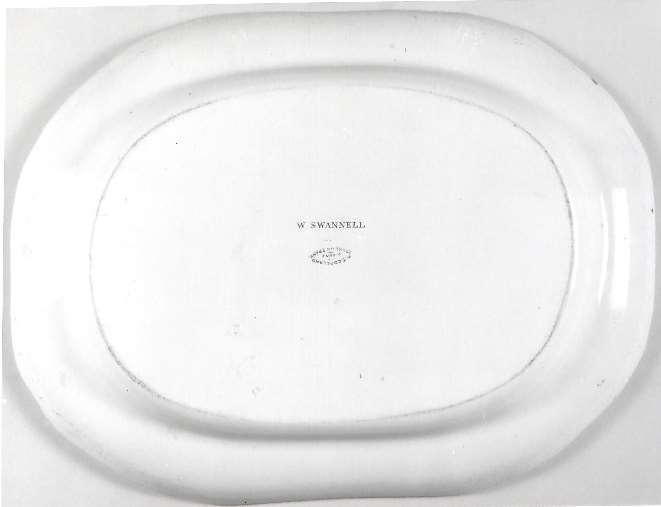


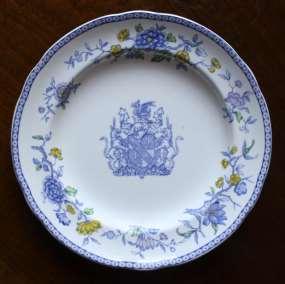
I wrote this piece for the College Magazine in memory of Richard Luckett, who inspired my interest in Magdalene’s plates. It would not have been possible without the generous help of Katy Green, College Archivist. Oliver Stovin and Craig Cessford assisted with inquiries, and Ronald Hyam kindly looked up several references. My thanks also go to Andrew Ruddell, Fellows’ Butler, for access to collections of old plates, and to Matt Moon, Senior Communications Officer, for taking the photographs.
Inthethirty-fiveyearsIhavelivedandtaughtinLasVegasIhavegrown used to the love-hate relationship many people have to the city. That simultaneous allure and revulsion to the sexualized and hedonistic indulgence it represents is precisely what has fuelled the growth of the city’s economy and my nearly three decades of research into the politics ofsexualcommerce. Fromthisresearchaprofoundrealisationemerged: sexuality is not just unique to the economy of Sin City (what happens in Vegas doesn’t stay in Vegas), it stands at the core of all economic development.
To be sure, there are some aspects that are unique to Sin City. In the rural outskirts of Las Vegas exists the US’s only system of legal prostitution in a country that otherwise criminalises all aspects of prostitution. There has been a significant global expansion of the sex industryinrecentyears. DuringtheCovidpandemic,mediamademuch of platforms like Only Fans that met a growing market for online sexual content. This heightened focus shed light on both the potential for exploitationwithintheindustry andthe opportunities itoffers.
Itisonlyrecentlythatscholarshaveputsexwork,thebody,desire, pleasure,andsexualityintocontextwiththepoliticaleconomy. Indeed, 1 it was Magdalene College’s own Professor Hyam in his 1986 book on Empire and Sexuality who highlighted the missing but important role sexuality played in the history of the British Empire.2 Just as work and
1 AfewrecentexamplessituatingsexworkinpoliticaleconomyincludeHeatherBerg, Porn Work: Sex, Labor, and Late Capitalism (University of North Carolina Press Books, 2021); Elizabeth Bernstein, Temporarily Yours. (Universityof Chicago Press, 2010);RavenBowen, Work, Money and Duality: Trading: Sex as a Side Hustle (Policy Press, 2021); Kimberly Kay Hoang, Dealing in Desire: Asian Ascendancy, Western Decline,andtheHidden Currenciesof Global SexWork (UniversityofCaliforniaPress, 2015);AngelaJones, Camming: Money, Power, and Pleasure in the Sex Work Industry (New York University Press, 2020); Megan Rivers-Moore, Gringo Gulch: Sex, Tourism, and Social Mobility in Costa Rica (UniversityofChicagoPress,2016);Teela Sanders and Kate Hardy, Flexible Workers: Labour, Regulation and the Political Economy of the Stripping Industry (Routledge,2014);andNicolaJSmith, Capitalism’s Sexual History (OxfordUniversityPress,2020).
2 RonaldHyam, Empire and Sexuality: The British Experience (ManchesterUniversity Press,1990).
industry have shaped societies and their modes of production, the political economy of sexuality and pleasure has been an equally critical force throughout history. The regulation of sexuality and pleasure is intricately entangled with systems of white supremacy, heterosexism, and patriarchy, immigration, and the legacy of colonialism. These elementsofsexualeconomieshavehistoricallyshapedsocietiesandtheir modes of production, from the rigid control in the industrial revolution to the artful marketing of consumer capitalism. To illustrate this point, the following draws on research on Nevada's legal brothels and the burgeoning resort industry of Las Vegas from a book I co-authored, The State of Sex: Tourism, Sex and Sin in the New Heartland. The history of 3 legal prostitution in the US presents a compelling case study of how discourses of sexuality and pleasure and the power dynamics involved in their control shaped transformations in industrial and service economies, offering valuable insights into the multifaceted relationship betweenpolitics,culture,andevolvingmodes ofproduction.
Gold Rush and Boom Towns
The towns that populated the American West in the mid to late 1800s were built on saloons and prostitution. The discovery of gold in what is nowCalifornia,Nevada,andtheColoradoRiverbasinspurredamassive influxofimmigrationintothearidlandspopulatedbynativeAmericans. The rush to Nevada to mine gold attracted mostly enterprising white men, but also African Americans, Asians, Hispanics, Eastern Europeans and native immigrants of all genders who recognised the economic potential in mining.
Bare land just a few years prior, ‘boom towns’ quickly sprouted near mines, growing a range of businesses, including banks, accounting firms, legal establishments, but also pleasure industries of restaurants, hotels, and brothels. The search for gold and silver suddenly brought 40,000 people to Nevada in the 1860s. Virginia City became a sophisticated city of 25,000 in less than 15 years, and at its peak was the largestcitybetweenSanFranciscoandDenveruntil1900. Goldfield,now a tiny town two hours outside of Las Vegas, rose and fell from one tent
3 BarbaraGBrents,CrystalAJackson,andKathrynHausbeck, Tourism, Sex and Sin in the New American Heartland (Routledge,2010).
toapopulationof20,000andbackto5,400between1907and1910. Even afteritsdeclinein1910,itwasstillthesecondlargestcityinNevada. Las Vegas didn’t get more people until after World War II. It wasn’t until railroads designed to transport raw materials created more stable towns that Nevada’s boom and bust calmed. Even today, mining remains a primary incomeproducer inthestate.4

Therearethreeimportantpointstodescribeaccuratelytheseearly boom towns and the more stable railroad towns that grew after. First, leisure and pleasure, in the form of drinking, gambling and sex was as importanttotheeconomyas waswork. Duringthe late1800s,Nevada's major cities enjoyed prosperous leisure economies, and these included sexual services. Goldfield in 1905 boasted 162 brokerage firms, 27 restaurants,andnearly60saloonsinitsviceorred-lightdistricts. Toput this into perspective, that's approximately one saloon for every 135 residents. New York City had one saloon for every 515 residents. The Goldfield sheriff estimated that around 500 women worked in the legal red-light zone. Even as early as 1909, with a population of just 945, the LasVegasred-lightdistrictaccommodatedsixhotelsandelevensaloons.
4 Brents,Jackson,andHausbeck, The State of Sex, p46.
At the height of Virginia City’s prosperity, census records show 160 of 286 women who listed occupations listed themselves as prostitutes. Indeed,thesexualeconomy anchoredearlytowns inthe West.5
Second,womenplayedakeyroleintheeconomiesofthesemining towns. While Spanish, Mexican, and indigenous women lived and worked in the American West for centuries, Chinese women fleeing economic unrest and white women immigrating from the US east coast after the Civil War, found opportunities not available at home. Women prospected, owned, and managed mines, as well as worked as seamstresses, restaurateurs, and hotel proprietors. And of course, they sold sexual services as well. As one white woman who ran a brothel in Denver succinctly noted, ‘I went into the sporting life for business reasons and no other. It was a way for a woman in those days to make moneyandImade it’.6 Sometimestheyheldthesejobsatthesametime assellingsexualservices. Therewasevenevidencethatmarriedwomen worked selling sex. The local newspaper in Goldfield reported that the husbands didn’t mind – it wasn’t cheating if she was paid for it. While Chinese women experienced a great deal of prejudice, the Victorian gender and sexual norms constraining white women in industrial cities like Boston and New York were slower to spread to the extraction economiesoftheAmericanWest.
Third, the politics of sexuality in these towns was strongly linked to economics. The businesses of pleasure, drinking, dancing, sex, and gambling were rarely regulated, but when they were, it was to relegate them to special red-light districts outside residential neighbourhoods through zoning laws. From the mid-1800s to the 1930s, in efforts to furtherseparatepleasurefromworklargeminingcompaniesbuiltentire towns to house workers, and to keep a tight grip on the social life of citizen. Thesetownsprohibitedmanypleasuresthatcoulddistractfrom work. And of course, entire towns housing the dance halls, saloons, gambling, and red-light districts sprung up on the outskirts. Not surprisingly,whenunionscametoorganiseworkers,theysetupshopin these red-light towns. And equally not surprisingly, attempts to fight unionswereoftendisguisedaseffortstoregulateandcleanupthe‘vices’
5 Brents,Jackson,andHausbeck, The State of Sex,pp45-48.
6 JphnD’EmilioandEstelleBFreedman, Intimate Matters: A History of Sexuality in America (UniversityofChicagoPress,1997),p137.
in these towns. For example, Riepetown grew on the outskirts of two company towns housing foreign-born mining families and served as headquartersforIWWunionsorganizingintheearly1900s. Afterseveral attempts to zone then shut down its dance halls and brothels, federal officialsarrestedseveralcitizensof Riepetownon whiteslaverycharges.

Meanwhile,intherestofthenation,awaragainstimmigrantsand the working classes was brewing. This war was thinly veiled as a war against vice. The rising industrial elite viewed the leisure pursuits of working class and immigrant cultures with disdain, considering them morally corrupt and lacking in virtue. Anxieties surrounding the body fuelled a war against pleasure and sexuality and shaped meanings of work and worth in industrialising America. It created a proliferation of laws dictating conduct that reinforced the hegemony of the industrial owningclasses. Inthiscontext,thecontrolofbodiesbecameintertwined with the objectives of the developing US states. The first immigration law in the US, the 1875 Page Act, prohibited ‘lewd and immoral’ prostitutes and undesirable labourers immigrating from China. By the early 1900s, powerful Victorian-era social movements encouraged national laws that blended Christian and nationalist ideologies. These laws enshrined bourgeois values of proper conduct, religious devotion, self-restraint, and the nuclear family's emphasis on procreation. As a result, during the second decade of the 1900s, Progressive Era laws criminalized various activities such as prostitution, drinking, and gambling nationwide.
While federal officials tried to enforce the laws in this war on pleasure and sexuality, especially in labour conflicts in the American West, the social relations of mining economies prevented the easy enforcement of bourgeoisidealsintheheartsandmindsofcitizens. HistorianJuliaLaite notesthatinfrontiertowns,leisureactivitiessuchasdrinking,gambling, and prostitution ‘acted as a way to disregard conventional morality, and as a way to refuse or even to defy the ordered and controlled world of modern capitalism.’7 In Nevada, this antipathy to the controlled world of modern capitalism slowly began to infiltrate the growing service economythatwasstartingtooutpaceextractionindustries. Thisrejection of conventional morality soon became as much a part of the twentiethcentury sexual consumer culture as the Victorian era’s suppression of opensexuality innineteenth-century industrialeconomies.
Duringtheeconomicboomofthe1920spaidleaveatworkandthe institutionalisation of vacations fuelled a nationwide tourism industry. Just as Nevada was experiencing a mining slump, local businessmen recognized that sexuality was a marketable piece of a developing tourist economy. Inthe1920sthemayorofReno,thenthelargestcityinNevada, won election based on the promise to turn Reno into the ‘playground of the world’, declaring that, ‘I don't believe in prohibition or any kind of reform that takes from any man or woman their right to find happiness in their own way’. City leaders and local businessmen established a red light district with 80 one-room cribs. The sexual services sold in the red lightdistrictofLasVegaswasdubbedinlocalnewspapersasthenumber two tourist attraction, second only to gambling. In the 1930s, just as the Great Depression hit, the state shortened the residency requirement for divorce and marriage and legalised gambling, further solidifying its placeas a gardenofforbiddenfruit.8
This overt marketing of sexuality worked. A Los Angeles Times editorial called Nevada a ‘vicious Babylon’. The Kansas City Star called Reno a combination of ‘Sodom, Gomorrah and Hell’, sealing Nevada’s distinction as a hedonistic playground. Sexual access and bohemian freedom drew some of the nation’s best writers to Virginia City in the
7 JuliaAnnLaite,‘Historicalperspectivesonindustrialdevelopment,mining,and prostitution’; The Historical Journal 52:3(2009):739-61(p747).
8 Brents,Jackson,andHausbeck, The State of Sex,p55.
1940s–1950s. Thesewriterswroteofgunfighters,dancehallsandelegant courtesans. Tales of the west appeared in Life magazine, The New Yorker and SaturdayEveningPost,infilmssuchasArthurMiller’s TheMisfits and westerns on TV such as Bonanza and Have Gun Will Travel. These tales further fed the longing for experiences denied by bourgeois culture. Financed in part by the silver fortune made by his father, the San Francisco publishing magnate William Randolph Hearst fuelled a culturalobsessionthatcapitalisedonwhathistorianJacksonLearscalled the nation’s longing for intense experience. As another historian said, ‘the West came into vogue’.9
Thus, Nevada’s economy and culture seemed to resist the trend toward controlled sexuality and pleasure that marked the national industrial political economy. That is, until the 1950s. In a huge reversal of policy, officials began to crack down on open prostitution. What happened?
AftertheSecondWorldWar,theLasVegasChamberofCommerce embarked on a ground-breaking media campaign, marketing Las Vegas itselfasaconsumableproduct. Basedonparticularimagesofsocialclass the promoters moved away from the Wild West’s more working-class cowboy theme. Las Vegaswas now tobe marketed asan opulentdesert paradise, an ideal destination for middle- and upper-class individuals seeking to recreate experiences of Hollywood sexual glamour. Through this strategic rebranding, Las Vegas became synonymous with sexual possibility, firmly establishing its reputation as a leading destination in theevolvingsexualeconomy.
In the 1950s the Las Vegas advertising machine began to produce imagesofchic,stylish,whitewomenlazingpoolsideorglitzy dancersin a Vegas show. In 1952, Frank Sinatra and Dean Martin bought shares in the Sands Hotel. In the 1960s the Howard Hughes Corporation bought casinos from the mob in Las Vegas at a dizzying pace. By the 1970s the conventionindustryaccountedforalargeshareofstaterevenues. While the federal government had for years tried to shut down the Nevada playground, the state’s increasing economic dependence on the resort industry started to matter. In the years after the Second World War, the
9 Brents,Jackson,andHausbeck, The State of Sex,pp55-58;T.JacksonLears, No Place of Grace: Antimodernism and the Transformation of American Culture, 18801920 (UniversityofChicagoPress,1994).
federal government dangled proposals for several large Cold War militarybases,includingtheNevadanuclearweaponstestsite,ifofficials would just shut down all the prostitution. Also important was the bad reputation that organised crime had for the city. How Bugsy Seigel and fellow gangsters jump-started the casino industry has been a story well told in places like the movie Casino. Into the 1960s Federal hearings on gamblingandorganisedcrime,largelymotivatedbyracializedimagesof Italian mobsters, threatened the now lucrative resort industry in Las Vegas.

So, state officials distanced themselves from the sex industry and sacrificed open prostitution to make casino gambling look legitimate. Between the late 1950s and 1970s Las Vegas and Reno officially closed their brothel districts and enforced anti-prostitution laws especially against independent workers and those outside of the casinos. It wasn’t that officials changed their mind about the importance of sexuality and pleasuretotheeconomy. TheoldimageofopenprostitutionthatfitWild Westtourismsowelljustdidnotfitthenewpost-warsexyupscaleimage of a vacation paradise. It was a now a different construction of appropriately gendered and classed bodies, marketing an upper-class womansellingsexualityandnotaworking-classwomensellingsex.
But then, how did Nevada end up with the nation’s only legal prostitution? Officials in resort cities tried to pass state-wide legislation to outlaw prostitution. But they met with strong resistance from rural county governments who didn’t have the large, lucrative resort casinos like the big cities did. Rural areas still largely depended on mining and the service industries that fed working class miners and now also the truckers driving through on the newly built highways that cut through the small towns. The increasingly heated battles between rural and urban legislators finally culminated in a 1971 compromise: the law that passedprohibitedprostitutionincountieswithpopulationsover200,000. At that time that only included the county surrounding Las Vegas. This stilldidn’tofficiallylegaliseprostitution. Theruralbrothelscontinuedto operate throughout this time but it took court battles over the next ten years finally to decide that local cities or counties could license and regulatebrothels. Eventually10ofNevada’s17countiespassedlicensing ordinances legalising already existing brothels. Most of these put regulation of the brothels in the hands of local law enforcement and instituted strict background investigations as a holdover from fears of mob ownership. These completely eliminated any sex workers from operating legallyoutside ofthe tightlycontrolled brothels.
Approximately 20 licensed brothels currently dot the rural regions of Nevada, a state that has experienced a dramatic growth in population since the 1970s. The suburbs of Reno and Las Vegas have now encroached upon the areas surrounding a few of these brothels. In a world where tourism is now the largest employer, Nevada's resort industry embodies the post-industrial capitalist service economy. It epitomises global service industries in packaging and selling pleasure, entertainment, glamour, spectacle, experience, fantasy, adventure, and escape. It remains to be seen how well Nevada’s brothels as currently organisedwillstand upinan evolving globaleconomy. What is clear is that today’s sex industry is growing, becoming more diverse and in some ways becoming more mainstream. Work in the sex industry reflects the new landscape of work in post-industrial economies. Sex work is just one of many services once considered private, intimate, or done just for love. Cooking, listening, or touching
are also commodified in restaurants, professional therapy, massage services, and the sex industry. Work in Nevada’s legal brothels, just as work in many sex industry jobs, involves emotional labour as well as body work. Body work includes a wide range of jobs from physical therapistsandnursestopersonaltrainers,tattooartistsandsex workers. Sex work is gig work. Nevada brothel workers are independent contractors, meaning they negotiate individual contracts with brothel owners and set their own prices with customers, a process not that different from a growing number of others in the service economy, including hair stylists, doctors, stenographers, Uber drivers or dance instructors.

However, within today's sexual economy, persistent inequality remains deeply intertwined with systems of white supremacy, heterosexism, patriarchy, immigration, and the enduring legacy of colonialism. The global sex industry is extremely diverse in who, how, andwheresexisboughtandsold. Asinequalityexpandsthroughoutthe globe, those sex workers who can access affluent markets find economic successandincreasingmainstreamsupportinaneoliberalculturewhere personalchoice iselevated toa moralright. Theseworkers whoalready have resources benefit from improved working conditions. However, marginalisedsexworkersfacingpoverty,housinginsecurity,andlimited
healthcare struggle to control their work conditions, increasing their vulnerability tocoercion,crime,and violence.
The politics of sexuality and pleasure today also remains deeply entwined with systems of white supremacy, heterosexism, and patriarchy, immigration and colonialism. Recently, political debates aboutsextraffickingandsexworkerrightshavebecomemorevisibleand play out in ways that reflect these inequalities. Nevada’s highly regulated legal system, as we have seen, originated in a particular configuration of class, race, and gender relations. Nevada's regulatory approach is just one of many ways of governing sex work. Regulatory modelsrangefromcriminalisation,wheresomeorallinvolvedinsexual exchangesaredeemedcriminal,withthegoalofeliminatingprostitution, to decriminalisation, where selling sex is not a crime for sex workers, clients, or managers. Nevada's system of legalisation is unique in that criminallegalinstitutions,ratherthanbusinesslicensingentities,oversee and regulate the licensing of businesses, managers, and sex workers. Mostnationshavesomecombinationoftheseapproaches.
Movements advocating policies that criminalise clients have emerged to try and control coercion and violence within the industry. However, critics argue that such movements often tap into antiimmigration sentiment and rely solely on punitive carceral approaches. These policies disproportionately target marginalised individuals based on their race, gender, and socioeconomic status. In contrast, leading scholars and organisations dedicated to monitoring sex worker health and safety, including the American Civil Liberties Union (ACLU), Joint United Nations Programme on HIV/AIDS (UNAIDS), the World Health Organization (WHO), and Amnesty International, advocate for comprehensive decriminalisation. This approach allows law enforcement to prioritise protecting sex workers from coercion, crime, and violence similar to how they protect other citizens. Comprehensive decriminalisation allows sex workers to access needed health care, housing, andotherservices withoutfear ofreprisal. Some recent policies have also focused on limiting online platforms where sex workers advertise and receive payments. These policiesclaimtotargetcriminalswho coercesex workers,but inpractice these policies have negatively affected all sex workers. They make it difficult for sex workers to screen clients, get paid, and access banking services. As a result, these policies have further marginalised sex
workers, exacerbating existing inequalities. In the absence of broader legal changes, prioritising safer working environments, access to care, and the protection of rights becomes paramount. Any policies must include additional supportive measures to reduce structural inequalities and injustices. The experience of other countries demonstrates the importance of including sex workers in policy making so they can actively participate in shaping policies that reflect their needs. In addition, we need more research better to understand how criminalisation and other systemic inequalities ultimately impact the healthandsafety ofindividualsinvolved inthesexindustry.
ThestoryofNevada’slegalbrothelsdemonstrateshowdiscourses of sexuality and pleasure and the power dynamics involved in their controlshapedindustrialandserviceeconomies,illustratingtheevolving relationshipbetweenculture,politicsandtheeconomy. Asscholarsseek tounderstandthedevelopmentof economic systems,we can’t ignore an undeniable truth: work and industry are inextricably bound to the dynamics of sexuality and pleasure. From strict control of sex in the industrial revolution to the celebration of desire in consumer capitalism, theseforceshaveshapedthecourseofhistoryandcontinuetoshapeour present. Recognising the political economy of sexuality not only broadens our understanding of economic development but also illuminates a path to take down those structures that perpetuate inequality andhelp usstrivetowards a morejust andequitablefuture.
BarbaraGBrents (YipFellow2022)

The English planning system is controversial and divisive, including addressing the differing interests of those who need houses, those who wishtobuildthem,andthosewhodon’twantthembuilt(orwhowould likely say that they don’t want them there). The courts do not make political decisions. However, as the spider-broach-wearing nowHonorary Fellow of Magdalene, Lady Hale, said in R (Miller) v Prime Minister, this does not mean that the courts hold back from making decisions in the political context. And planning and environmental matters are thoroughly political. The publication of the Government’s proposed policy document, Planning for the Future, essentially lost the Toriestheby-electioninCheshamandAmershaminthesummerof2020, withanenormousswingtotheLibDems. Politicalbattle linesarebeing drawn:Labourhas madeclear that it willbe the party ofhouse-building andwill notview theGreenBelt assacred. TheLibDemswouldseekto stand up for the local voice (and hence be heavily restrictive of construction in the south-east). The Conservatives are torn between havingaheritageofsupportingthehome-owningclass(thereforehaving an interest in getting more people into their own homes), while being reluctant to upset those who already have a place of their own. Those involved in working in the planning system (Central Government in the form of the Department for Levelling-up Housing and Communities, local authorities and planning professionals) face questions in a field beset by important interests pulling in different directions: a housing crisis, the perils of climate change, and a desire for people to have a say intheircommunity.
How does law contribute to addressing these difficulties? Ultimately,itdoesnotactually resolve the disputesorprovide ananswer astohow thecompeting interestsshould be balanced. However,it does provideassistanceinworkingtowardsaresolution. Therearethreemain waysinwhich itdoesso. Firstofall,law setstheframeworkformaking decisions in planning. It provides for who should make the decisions, whomthosedecision-makersshouldconsult,andwhattheyneedtobear inmind. Second,lawgivesforcetoandregulatestheroleofpolicyinthe
planning context. Third, law provides a voice to members of the public toensurethatplanningdecisionsaremadeinalawfulway. Scholarship on these issues should help the courts assist stakeholders as much as possible, and should seek to clarify issues so that we know where we stand. While all three of these issues are capable of raising important legal and conceptual questions, much of my work has been focusing on the topic of policy. It is of central importance in the working of the planningsystem,yet itremainsunder-explored.
Whendevisingorconsideringasystemconcerningtheexerciseofpublic power, there are a number of questions which inevitably have to be considered: who is going to call the shots? how much free rein do they have? is there any particular process they have to follow? Planning legislation and judicial decisions provide, or perhaps reflect, the choices whichhavebeenmadeinrelation tothesequestions.
The starting-point for who makes a decision on a planning matter is the local planning authority: the Borough Council, District Council, or combined authority. For relatively minor applications (say for an extension to an existing building, or a handfulof new homes), these will be made by a planning office under delegated powers. However, for more major decisions, these will be made by a Planning Committee, made up of elected councillors. When considering a potential legal challenge to a decision, the reason for a grant of planning permission is generally significant. In my research, I’m considering a doctrinal issue which is therefore important in much planning litigation: how can and shouldthelawidentifyreasonswhenadecisionismadebyacommittee?
While identifying and scrutinising the reasons given by an individual official (such as a government minister) may be fairly straightforward, this may not be the same for a situation where there is a vote of a committee to decide whether planning permission should be granted. What ifmembersagree astotheresult,butnotthereasons?
The law also prescribes that there should be consultation in relationtoplanningapplications. Thisoftenrequiresexpertbodiestobe consulted. It is also necessary for the planning authority to involve the public in its decisions. Many of us will have seen notices on lampposts referring to planning applications: I get teased for actually looking at
them. (Asanaside,someoneonceWhatsAppedmeaphotographofone of these notices. I zoomed in carefully, looking closely at the legislation to which it referred. I had missed the fact that someone had graffitied ‘BUM BUM’ on it in large letters). Planning authorities are required to takeintoaccountwhatpeoplesayinresponsetotheseconsultations,and legislation sets out a time period for them to do so. A council’s online web portal often provides the easiest way to give views in relation to a proposal. Public responses to planning applications are often heavily opposed to the proposed development. If an application for planning permission is unsuccessful and the applicant appeals, then members of the public will be able to make representations at an appeal, which may include speaking at a public inquiry held by a Planning Inspector (an officialansweringtotheSecretaryofState). Theseareimportantwaysto makesurethatthevoiceofthecommunityisheardinrelationtopotential changestothe areasinwhich theylive.
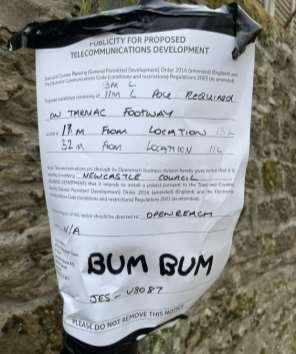
Court cases can decide what are ‘material considerations’, that is, factors which can be taken into account when determining a planning application. There are some fairly established principles, such as that someone seeking to build something cannot give a ‘bung’ to the council, or to the local community, in order to seek to buy planning permission. Otherwise,thecategoriesofwhatadecision-makercanconsiderarevery broad.
Planning policies are of crucial importance in determining planning applications. Legislationsaysthatplanningdecisionsshouldbetakenin accordance with the development plan, unless material considerations indicate otherwise. There is a mismatch between the importance of policy,andhowmuch(orhowlittle)scholarsarewritingaboutit. Much ofmyresearchrelatestopolicyandthelaw. Forinstance,theHighCourt has made it clear that it is not the role of the courts to fill gaps in policy; the correct interpretation of planning policy is a matter of law. A local council does not have the final say as to the correct interpretation of its own development plan; neither can the Secretary of State speak conclusively as to the meaning of his own policy as published in the National Planning Policy Framework. In an article in the Journal of EnvironmentalLaw1,Isoughttoprovidearobustscholarlydefenceofthe idea that it is right that the courts should be able to lay down the law regarding the interpretation of planning policy. This helps the stakeholders (including members of the public) to work out how an applicationmaybe decided,thereforeassistingthem inknowinghowto formulate their representations. Policies should guide the various stakeholders in an area: they are more able to do this if the courts clarify what the true interpretation of a policy is. This role for the courts has built up a bank of precedent regarding the interpretation of policy, especiallynationalpolicywhichapplies inallareasofEngland.
National planning policy has been in the news in recent months, with criticisms being made of binding, top-down housing targets. Whatever the merits of these descriptions (the targets were not actually absolutely binding), they do show the political concerns regarding housebuilding rates, particularly in the south-east of England. Views regarding the Green Belt are particularly charged. At one time, the website of the Campaign for the Protection of Rural England (a leading charity concerned with countryside protection) contained the quotation, ‘Green Belt makes me and my family who we are’. Suffice it to say, I would not say the same of my family. It is important to remember what the Green Belt is. It is not a designation which exists to protect special aspects of the environment. It is not a designation which exists to preserve particularly beautiful areas of English countryside. Such
1 ‘TheInterpretationofPlanningPolicy:TheRoleoftheCourt’,Vol34,Issue 3,Nov2022,pp419-40
designationsdoexist,butthisisnottheroleoftheGreenBelt. TheGreen Belt is a spatial designation, and its primary purpose is to prevent urban sprawl:tostopcitiesfromendlesslyexpanding,andcoalescencebetween settlements. Labour has recently suggested that protection of the Green Belt isnotsacrosanct. This will be profoundly unpopularwith aportion of the electorate, but would have the potential impact of unlocking land for much-needed housing. If there is substantial change to national policy on the Green Belt, there will likely be important cases seeking to elaborate on any changes to policy, and potentially also considering the relationship between the new national policy and the existing developmentplanpolicy.
The public are consulted not only in relation to individual planning decisions, but also on the policy under which those decisions willbe made. CentralGovernmenthasrecentlyconsultedonchangesto the NPPF. My research suggests that the NPPF, particularly the important ‘presumption in favour of sustainable development’, should be amended so as to give greater consideration to factors concerning greenhouse gasemissions.
The public has important rights to be involved in planning decisionmaking processes, and also in the policies which decision-makers consider when deciding whether planning permission will be decided. The law makes these rights enforceable. However, perhaps the most obvious way in which the law permits individuals to be involved in the planning system is through court challenges. Court challenges can be (and have been) brought to the NPPF, to local plans, to neighbourhood plans,tograntsofplanningpermissionbylocalplanningauthorities,and to decisions on appeal by Planning Inspectors. Court planning challenges (or threats to bring them) took up much of my professional life as a barrister. I now spend much of my time thinking about similar issues,butfroma differentperspective.
Procedure and funding are extremely important in court cases. Litigation in the High Court can be extremely expensive, frequently running to tens of thousands of pounds. One of the factors contributing to this is the indemnity principle, also known as ‘loser pays’. Briefly stated, if a claimant is successful in a court case, they can claim their
reasonable costs from the other side. Conversely, if the claim fails, then the defendant can recover its costs from the claimant. However, there is a concern that the risk of having to pay the other side’s legal costs, combined with the high cost of litigation in England, would make environmentallitigationprohibitivelyexpensiveforapotentialclaimant. The United Kingdom is a party to the Aarhus Convention on Access to Information, Public Participation in Decision-Making and Access to Justice in Environmental Matters. The duties arising from that internationalagreementhave ledto the introductionof aspecificsection of the Civil Procedure Rules, to provide protection against adverse costs orders in environmental claims. Although the meaning of ‘environmental claims’ is not defined in the Rules, it will include many planning cases. As a result of these Rules, the starting-point is that an individual who has brought an unsuccessful environmental claim will not have to pay the other side more than £5,000. This cap can be varied upwards (or downwards) by a decision of the court, but the principle of this protection provides some encouragement for those considering bringing planning court cases. The bad news is that, in order to be able to get such a cap, you need to provide a ‘bare all’ revelation of your financialassetstothecourt,and tothe other side!
Turningawayfromcourtprocedure,onwhatbasescanaplanning decision be challenged? The most important thing to be aware of is that the court will not overturn a planning decision just because the court would have reached a different decision to that made by the planning committee or Planning Inspector. Matters of ‘planning judgment’, in terms of the assessment of levels of benefit and harm, how they should be balanced, and the exercise of discretion, are left to officials by Parliament. The courts will not interfere unless there is a legal error. Legal errors include misinterpretation of planning law or planning policies, a failure to follow a fair process, failure in or making a decision which is so unreasonable that no reasonable decision-maker could have made it. Rates of success in planning court cases are hard to ascertain. Anecdotally, it seems that success rates are not stellar. Nevertheless, planning litigation can be significant even if it does not lead to a successful claim. The threat of judicial review can influence the way in whichadecisionismade. OnewouldhopethatacommitteeorInspector would agree with the principle of fair process, but in any event they should know that the court will step in if they act in an unfair way. The
possibilityofalegal challengemay leadtoadecision-maker considering previous case law on a topic, or obtaining legal advice as to how a court has, or may, interpret legislation or policy. The sense of this is encapsulated in the title of the Government’s guide to law for civil servants: ‘The Judge Over Your Shoulder’.

Even if the claim is successful, this does not necessarily mean that theeventualresultwillendupastheclaimantwouldwish. Imaginethat planning permission is granted for a large housing development. Someone who lives on neighbouring land, and likes the relative tranquillity of the area, seeks to challenge the claim in court. They have good grounds to do so (perhaps the council has misinterpreted relevant planningpolicy),andsothedecisionis‘quashed’– thecourtdecidesthat the grant of planning permission is of no legal effect and the council has to make the decision again. However, this second time, the council interprets the policy as the court has said they should, but the council neverthelessgrantsplanningpermission. Unlessthecouncilhasmadea legalerrorthissecondtime,thegrantofplanningpermissionmaystand.
In short, it may be possible to win the battle but lose the war. In upcoming empirical research, I aim to get a sense of how often this happens. This research project involves finding successful court cases, and then investigating what planning decision was made next, and seeingwhatlessonscanbelearnedforplanning litigation.
In the context of planning, law has a constraining function, an empowering function, an empowering function, and a constraining function. Planninglawrestrictslandowners:youcannotsimplydowhat youwantwithyourland. Ifyoubuildanenormoustowerinyourgarden without planning permission, your council may tell you to take it down, and subsequently issue an enforcement notice requiring you to remove it. Failure to comply may lead to you being fined. Planning law empowerspublic bodies:theability tograntplanning permissionand to take enforcement action against breaches of planning control is granted to local councils and the Secretary of State by planning legislation. The law empowers members of the public, who are involved in the process throughtheformulationofplansorbeingabletocommentonindividual processes. Planning law also constrains the decision-makers; it requires them to consider policies, to interpret the law correctly, and to comply with requirements of procedural fairness (including bearing in mind whatthe publichassaidinrelation tothe proposedplan orapplication). Whydoesplanninglaw,thissetofconstraintsandpowers,matter? Depending on where you live, planning issues may well affect you at some point in your life. At that stage, you may well wish to have your say in the process for a major change in your neighbourhood. It may provide comfort to you that, if you think something has gone badly wrong with the way in a decision has been made, you may be able to go tocourttoseeklegalscrutiny. But,outsideofourownpersonalinterests, it is important that our country, and our planning system, is under the rule of law. Those who make decisions which affect the public (local residents and those looking for a home) are accountable to law for the decisions which they make. There is a clear procedure and framework for answering controversial questions. These things are worthy of our interest.
AEJMills
Disclaimer:thecontentsofthisarticledonotconstitutelegaladvice,andarenot a substitute for legal advice. Contains public sector information licensed under the Open Government Licence v3.0.
(Hebrews11:1-3,8-12,20-28,39-12:2)
On Sunday 6 Nov 2022, the Very Revd Dr David Hoyle (Honorary Fellow and Dean of Westminster) delivered the University Sermon as Lady Margaret Preacher at the University Commemoration of Benefactors. The Editor is grateful to Dr Hoyle for permission to reprint the sermon here.
It is that moment at the beginning of a meeting when the blood creeps and all the wheels of being slow. You see the words ‘1 – Declarations of Interest’. It is the beginning of an agenda where, in the god-forsaken business ahead, no joy is to be found. At that moment, a Declaration of Interestisaterribletest. HowmanytimeshaveIbeenaskedif Ihavean interest to declare and said so very certainly ‘None’?
Today though, is different. Today, as Lady Margaret Preacher, I must declareaninterest. On29June1509,theLadyMargaretBeaufort,mother of King Henry VII, died in my house. She loved this place, Cambridge; we know that she came here frequently. Lady Margaret was one of the great benefactors of the University. She favoured this church and contributed to its rebuilding. There were gifts to Queens’, King’s, and Jesus and, of course, she is regarded as foundress in Christ’s and at St John’s. She endowed my preaching today. She also gave us, God bless her, the Lady Margaret Professor of Divinity, a legacy of learning that includes Fisher, Erasmus, Chaderton, Pearson, and Lightfoot. No wonderwehear her nametoday.
In Westminster though, we think of the Lady Margaret as ours. She is buried with us, among queens and kings, under a stunning bronze by Torrigiano, her old, wrinkled hands permanently poised in prayer. She lived with us in her last days, having seen the son for whom she fought so doggedly, rise and reign and die. By 1509, her grandson Henry VIII was on the throne. She had seen enough. She really did die in Cheyney Gates,partoftheAbbot’sLodgingnowtheDeanery. Itwillnotsurprise
youtolearn thatall yoursuspicionsof Londonliving aretrue. They say that itwas feastingonacygnet thatcarriedheroff.
BackinWestminstertomorrow,Ishalllookupfrommystallinthechoir and see her again, supervising the daily prayer that mattered so much, with an appraising eye, from a stained glass high in the triforium by NinianComper. Ideclareaninterest. Imust. Thearrangementsthatthe Lady Margaret made for the payment of her preacher before the UniversityofCambridgewasthatthebillshouldbesettledbytheAbbot of Westminster whose duties pass to the Dean of Westminster. Back in theAbbey,I promisethat Iwillsettleona suitablesum.

WeassembleforCommemoration. LadyMargaretwouldbepleased,she would have us remember. If we left Great St Mary’s now and made the short walk to Christ’s we would find her emblems of the mythical yale
and the portcullis (and we know them both in Westminster) over the Master’s Lodge. There too is her shield and her motto – Souvent me souvient. We still debate precisely what it means: ‘I often remember’ or ‘think of me often’. The confusion is perhaps deliberate, because remembranceisacomplicatedbusiness. Itisindeedadoubledutytoday; we are here to remember, because you should do that often, but also to make sure that our remembering is precise and personal. Back in Christ’s, and moving to the College Chapel, we catch a glimpse of the Lady Margaret’s sophisticated understanding of how you remember. There are windows in the Chapel which she almost certainly helped to design. There is a picture of her and she is keeping particular company. Beside her you will find her son Henry VII with Henry VI and Edward the Confessor. It is iconography that celebrates a royal dignity. Lady Margaret was not shy of status. This is also pious imagery. Edward the Confessor,ofcourse,liesbackinWestminster. Kingandsaint,adefining image for the sovereign and an emblem for subjects. It is monarchy as a heaven-sent vocation. Edward’s shrine makes the Abbey a reliquary, built to publish and proclaim an idea of an ordered holy nation. Choosing to be buried in the Abbey, Lady Margaret and her son placed themselves withinthatnarrative. AndHenryVIwasacandidateforthe samedignity. Asthefifteenthcenturygavewaytothesixteenth,theplan wasthat theLady Chapel in Westminster would accommodateasecond shrine. HenryVIwouldbemadeasaintandsanctifyanewdynastyand refresholdcertainties.
Let’s make no mistake. Holiness and memory matter. I am preaching today, and St John’s and Christ’s Colleges were both built, because John Fisher, Chancellor of the University and confessor to Lady Margaret, believed in a disciplined learning and because she wanted our prayers, souvent me souvient: ‘I often remember’ – ‘think of me often’. Fisher and Lady Margaret believed that this University is a community with a memory. She wanted that from her colleges and from us. She wanted our prayers; she wanted us to keep her in mind. As she faced her death andcommittedherbodytotheAbbey,sheknewexactlywhattoaskfor: two monks of Westminster committed to praying for her daily and the AbbotstandingannuallyintheChapterHousetodeclaimtheagreement shehadmade withus, in ‘every year which the world shallendure’.
Memory, names and meaning. That is why we have gathered today. It is why we hear a list of names. Commemoration is people, it is not an idea. Donors give for a reason, their reasons are deeply felt, rooted in emotion and experience. They give gifts that are specific and have character. Gathering for Commemoration is not an invitation to be vaguely grateful and to smile for pictures that will demonstrate that we can be trusted with gifts. We are here to acknowledge that we have not forgotten the relationships and the awkward push and pull of human ambition and determination that shapes us still. Commemoration is the family photograph album, sharp memories, smiles, tears, the shock of recognition. Memory,namesandmeaning.

Andit iswhywe heardtheLetter to theHebrews:
By faith Abraham obeyed when he was called… By faith Isaac invoked blessings for the future on Jacob and Esau. By faith Jacob, when dying, blessed each of the sons of Joseph.
We call it the Letter to the Hebrews, but in fact, it is a sermon. This is writing that tries to grab you by the gown and make you listen. It is written for people who are perhaps a little too enthusiastic about Commemoration, people who think the best days are behind them. Hebrews was written when it was hard to fan faith into flame, to keep hopealive. BeforeyoumakeamentalnotetoreturntoHebrewsthenext time it all gets a bit much, I must tell you that there is a catch. Hebrews istough. Thissermonstartswithatechnicaldiscussionaboutwhatkind of a thing an angel might be. Then it tells us about being a high priest accordingtotheorderofMelchizedek. Beforeyoucandrawbreath,you are reading about sprinkling the blood of calves and goats. All that beforeyouarewarnedabouta place that is a blazing fire, and darkness, and gloom, and a tempest.
If Hebrews does back you into a corner of the Combination Room, you maysoon be wonderinghow togetaway.
The truth is that all this high octane theology is a bit simpler than it sounds. And the really striking thing is that once you have understood it, Hebrews keeps saying the same thing, over and over again. The openingsentence isa drumroll,really clear,reallystrong
Long ago God spoke to our ancestors in many and various ways by the prophets, but in these last days he has spoken to us by a Son.
We are talking history and memory here – ‘long ago’ and ‘ancestors’ –and we are talking faith. Lady Margaret would be pleased. Faith, says Hebrews,dependsonmemoryand it is littered withnames. Wearealso askedtograspone bigidea. Ourhistory isextraordinary,says Hebrews, becausewehavean extraordinary God. Historianscan lookbackand be
amazed at what God has extraordinarily done. But that is just history. What you really need to notice is that, now, God has done something moreextraordinarystill. Hedid it inthe man,JesusChrist:
in these last days he has spoken to us by a Son.
History, memory, names: and it all has a meaning. Then Hebrews just finds different ways of saying the same thing again and again. Are you impressedbyangels? Lotsofpeoplelikeangels. Fine,saysHebrews,but do you know that Jesus Christ is far above any angel? Perhaps you like priestsandministers. WhenwearewearywemightlongforaDeanora Vicar. You might, says Hebrews, but Jesus Christ has done what they never could. Doyou thinkyouneedsomeritual, theoldmagicthatgoes on at the altar – incense, bells, the blood of goats even? Well, sure, but JesusChristis themeaning.
ThenHebrewsgetsseriouswiththenames. Abraham,Isaac,Jacob,inthe reading that we heard. This is what faith looks like. It is not a concept, notaproject,notanambition. Faithissomethingyoulive,andtoseethat faith,orunderstandit,youhavetogiveitaname. Abraham,Isaac,Henry VI, Edward the Confessor, Lady Margaret. It looks like this, it looks like them. They are the lesson. We heard a tiny part of a long chapter of Hebrews that gave us many, many names and the absolute conviction thatfaith takes many forms,is livedin manyways:
…time would fail me to tell of Gideon, Barak, Samson, Jephthah, of DavidandSamuelandtheprophets whothroughfaithconquered kingdoms, administered justice, obtained promises, shut the mouths of lions.
Ithasbeenreallyextraordinary,andnoticejusthowextraordinary. Then comesthe inevitable punchtoa flabby theological gut:
Yet all these, though they were commended for their faith, did not receive what was promised.
All these names knew faith, they showed it to us. Yet, they did not have thepromise. Theymissedthemeaning. Because,theargumentgoes,they
livedinafaiththatneverknewthatthemeaninglookedlikeJesusChrist. Abraham, Isaac and Jacob lived a life of faith, committed themselves utterlytowhatHebrewscalls theassuranceofthingshopedfor,theconviction of things not seen. They left us startling examples of what that faith could beanddo. Yettheycouldneverreallynameitbecausetheyhadnotlearnt thelast lesson;they hadnot seenwhat Godprovided.
Memory, names, meaning. To know anything about ourselves we must look back, and our remembering must be specific, it must summon characterandexperience,anditmuststruggleforaname. Itisthescandal andthepowerofthatblackBelgianmarbleslabjustinsidethedoorofthe Abbey that it is a grave. It is not a cenotaph, it is a burial. For our conversation about war to have real meaning and bite and grip, we have to make our memory grapple with the people, the lives, the experience. Wehavetothinkofthenamesandthenfacefour-squaretheideathatwe might actually try to obliterate that kind of remembering altogether. Memory,namesand meaning.
At the other end of the Abbey, the Lady Margaret lies in a posture of prayer the object of a tourist’s gaze. Buried in a house of meaning, she wouldbedisturbedtodiscoverthatherbelovedAbbey,ofallplaces,was lessconstantinmemorythansheassumed. Thelongedforcanonisation ofHenryVInevercame. HenryVIIandhismotherlie,tothisday,beside a void that never did hold a new royal memory and another pattern of holiness. So, Margaret Beaufort now keeps company with Mary Queen of Scots and lies above Charles II, William and Mary, Anne. There is a dignity that she might approve, but the story is not the one she wanted. NoAbbotgoestotheChapterHouseeachyeartorecitetheagreementto pray. We have her name, but we do not offer the Commemoration she wouldwish.
Today, in Cambridge, we come closer perhaps to the trust she left with us. Some certainties shift but this University is still a community that names and remembers. Here, at our Commemoration we pause and think of her, ‘I often remember’, ‘think of me often’. We remember her as a woman of faith who founded colleges that were places of learning, but also houses of prayer. We summon the woman from the tombs and engageagainwith theawkwardedgesof memory and meaning.
That is more precious and more unusual than we imagine. Back in Westminster,conversationhaschanged. Incollegechapels,twoopposed linesof seating are supposedtogiveus theconcertof shared praise - the backandforthoflinesthatpassfromonetoanotherandreturnagain. In Parliament it is merely adversarial. Worse, much worse, the waves of rhetoric that break against the Abbey walls are devoid of memory. We must all be made anew. Meaning is not conferred by truth and experience;itisaconstruct. ThetruthiswhatIsayitisandifyoudonot believe me I will simply say it louder and more often. The language of governmentnowisnotdefinedbythememoryofwhowewereandwhat we did. No-one comes back to the Abbey to be reminded that once we thoughtofgovernmentasalearnedthingwitholdassumptionsofjustice and common cause. If I am asked anything, it is about visitor numbers, financeand my digitalstrategy.
BackinGreatStMary’s,whereIworshippedasagraduatestudent,back in the University that taught and trained me, I am glad to be in a place where memory, names and meaning matter. In the Abbey, I live among the worst temptations of the past. There, in the church where the Unknown Warrior was buried, the church where HM the Queen was crowned, and where we held her funeral, we can spend too long amid thetombs. Hebrews knowsthatChristiansarereallygoodatclingingto thepastandkeepforgettingthattheyareactuallydefinedbytheirfuture.
Hebrews has the words for hope. Hebrews has the names for hope. You see, the encouragement we need is not the words we keep hearing, nor fresh promises and the assurance that someone will deliver and then deliver again. Hebrews has it right. There is an assurance of things hoped for, the conviction of things not seen. It is a conviction shaped by memory andbynames. Itisaconvictiontestedbywisdomandlearning. Signsto the contrary abound. All around us it looks as though the present beats the past: war in Ukraine, rising poverty, glaring injustice, hatred and violenceonthethoroughfares,thepeddlingoflies,asmotheredhope,but we do not have to believe what they tell us. We do not have to live like that. A different future has started here, lives here. That future is sure andithasbegunandwehaveseenit. Wehavenotforgottenandwillnot forget. Weremember. Wecannameit.
DMHoyle
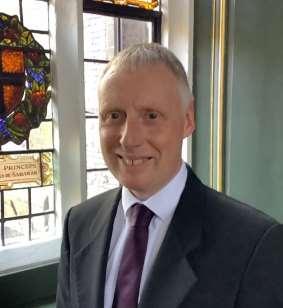
During my time at Magdalene there have been five different Masters, a great many changes to the staff and Fellowship and nearly seventy graduation and matriculation dinners. I arrived as a part-time waiter in 1988,straightoutofImpingtonVillage College. But it wasn’t an entirely new environment. My grandfather, Charles Ruddell had been Butler at St Catharine’s and my great grandfather served as University MaceBearer. Even so, I found all manner of unexpected things about the College – many of which now seem a world away from the varied and larger communitythatit istoday.
TheButterywasaveryenjoyableworkplace,fullofcharactersand rarely dull. But it was often hectic and we had to do all sorts of things which would now simply take too long or be too costly. A long-serving marriedcouple,FredandElsieStone,workedfortheButtery;Fredwasa waiter and Elsie had earlier managed the Buttery Shop which sold basic provisions to the students. Also at this time, Tom Philips worked on HighTableandBettyPhilipsdidthewashingup. JimEbbon,theCollege Gyp, who memorably smoked a pipe while cleaning the College silver, was joined by Leon Cole – ‘Leon’ to his colleagues in the Buttery and Kitchens but ‘Mr Cole’, as he insisted on being addressed by everyone elseincludingthe Master.
Six months after my arrival, I moved to be High Table Waiter where the seriousness of the job was offset by the continuing and often
light-hearted disorder backstage. The best way to describe the changes I’veseenovertheyearsistocontrastthosesometimeseccentricdayswith themuchmorestreamlinedandefficient working oftoday.
In1991IstartedworkingfulltimeasAssistantButlertoGaryLove but I also learned a great deal from Fernando Gainza, now retired to GranadabutwithwhomI’mstillintouch. Overseeingeventsanddining inCollege,insomanydifferentplacesandwithsomanydifferentpeople, canbehighlycomplexandwithoutproperorderthingscanalltooeasily fallapart. BythetimeIbecameHeadButlerandButteryManagerin2010 andthen Fellows’ Butler in2014, thesuccessionof notableoccasionsand the roll-call of remarkable guests had mounted up – from Princess Margaret(itwasdifficulttokeepherglasstoppedup)toNelsonMandela to,morerecently,theDalaiLama. ButitistheroutineofCollegelifewith its own challenges and complications that is in a way the most memorable. Conferences and private functions could be difficult sometimes,withguestsnotknowingtheirwayaround,butcertainevents inthe College calendarcanalsopresent challenges – from majordinners withtheiroverflows,tooutsidereceptionsandboatclubdinnersandthe like. It was sometimes necessary to call for assistance when things becametooboisterous.
Much more peaceful and enjoyable has been helping to look after the College silver and wine. Again, attending to both was once more effortthan it isnow. Inmy early years in College, allthe glassesand

the High Table silver were still cleaned and washed by hand. In fact, all the cutlery in use throughout Hall was once hand-washed after every meal. Polishingthesilverwastime-consumingbutworthit. TheCollege owns magnificent pieces and we chose special silver items to display at Reunion Dinners and on High Table. The collection includes silver ashtrays. Smoking was once allowed in the SCR where cigarettes and cigars werepassedround.
With so much going on, tricky moments are unavoidable. A dog owned by a former Master’s wife posed frequent problems. It particularlydisliked menandoftenranat meandnippedmyanklesjust as I carried glasses and other fragile things across the Master’s Garden In the summer, private parties on ‘the Beach’ were also often difficult because we had to chase away tourists and sometimes students from other colleges who moored their punts there and just joined in. Even looking after the wine could be eventful. A critical moment came when we had to rescue all the stock from the old port cellar under the Pepys Building. The cellar had become so damp that the wooden cases had rotted away. We had to transfer the bottles of port to new containers beforecarryingallofthemacrosstonewcellarselsewhereintheCollege. And I remember frequent squabbles over dinner tickets – a system long gone but where students bought books of tickets with different values which had to be torn out to the correct amount (or not) to pay for meals. Themulti-coloured ticketslookeda little likeraffle ticketsand therewas morethanasenseofalotteryforthestaffchargedwithgettingitallright. Today,ourcomputerisedsystemhastransformedbookingsandall the necessary accounting. Everything is much better organised, but the silver is not on display as it once was and I’m not sure that the students take as much interest in wine – even though it’s good that the drinking societies of old have largely gone. And it’s just as well that the system is betterorganisedbecausetheCollegeissomuchlargerthanitwas – many more graduates, more Fellows and many different venues to manage –the open areas of Cripps Court for example and other new public rooms forfunctions. Butthere’soneotherconstant–theCollegegraceinFormal Hall– andfornewmembersjoiningusandoldmembersreturningIshall stillbe on the left at the front, ‘Stand in Hallplease!’
AndrewRuddell
MARCUS WAITHE, The Work of Words: Literature, Craft, and the Labour of Mind in Britain, 1830–1940 (Edinburgh UniversityPress,2023, 479pp)

Are authors really ‘workers’? And if so, what type of ‘work’ is it that they do? Professor Waithe brilliantly grapples with questions posed since antiquity and takes up the complex challengeofunderstandingwhy nineteenth-century and modern writers in Britain expressed uncertainty about whether their literary effort ‘dwells in the mind, on the page, or elsewhere’.
This new, transformative book, astonishing in its breadth of learning and reference to novels, poems, letters, diaries and various artworks, recovers sustained attempts to ‘resolve and renovate the status of writing,adeterminationtomakewriterandwritingaccountable,toforge a physically legible “labour of mind”’. Marcus Waithe argues that the ‘correctivefocus’residesinlanguageas‘a mediumsusceptible toreform becausecoinedandreissuedbywritersthemselves’. Hedemonstratesin three contiguous sections how writers pursue this quest in different ways,findingsolutionsindifferent modes ofliteraryendeavour. Thisis ‘work’, indeed; sometimes a performance of handicraft or agricultural labour, sometimes a craft-based essay in composition, literary association, or as the author deftly describes it, ‘linguistic tooling and direct carving in prose’.
The first section of the book, ‘Anxious Vocations,’ considers the ‘author-craft’ofThomasCarlyleandthe‘brain-work’ofthepainterFord Madox Brown; the second section explores ‘Writers at Work’ by way of
case studies of Elizabeth Barrett Browning and of responses by William Gladstone, John Ruskin and William Morris; and in explaining literary engagementwithwork,thedignityofthe labour isrelatedtothedignity ofauthorshipas its professionalizationbecomesthe moreestablishedby copyright, agents, and acceptance of its manual and mental labour. Market valuation of artistic effort deepened alongside disdain for the contemplative and apparently labour-easy intellectual life, an appraisal ofthevalueoflabourthatmightbesummarisedasthe‘GospelofWork’. For many, this chimed with critiques of writers such as Adam Smith’s withering dismissal of an ‘unprosperous race of men commonly called men of letters’: educated ‘at the publick expense’ and whose increasing oversupplyresulted intheir owndecreasingincome.

Work (begun in 1852), Ford Madox Brown's most celebrated painting and one used by many publishers on the covers of reprints of nineteenth-century social novels
The book’s third section addresses ‘Craft Consciousness’ by examining Gerard Manley Hopkins’s figure of the forge and Eric Gill’s incarnational ‘letter-craft’ and how these brought an often foundational
Protestant attachment to work to more Catholic theologies of human composition. Such blending celebrated the spiritual in the physical, and thefinalchapterdemonstrateshowvisualartistswhomadewritingmore legiblereunitedthetranscendentwiththeardouroflabouranddexterity of craft in what was effectively a fresh and perhaps unexpected iteration ofthe‘GospelofWork’. Thispenetratinganalysisofauthoriallabourand writers’ own occupational anxieties gives extraordinary depth to the striking assertion of Isaac D’Israeli (drawing upon Jean de La Bruyère in theseventeenthcentury)withwhichthestudyopens,that‘thererequires a better name to be bestowed on the leisure… of the literary character’, so ‘that to meditate, to compose, to read and to be tranquil, should be called working.’ Ratherthanexaminingphysicalexertionasametaphor for work (and also for constructions of masculinity) we are invited to understand the many ways in traditions of craftsmanship were interpreted as skilled labour and working conditions often given preindustrial definition of both routine process and incremental skill. The many valences of that authorial turn towards craft are shown to be at timesvocational,generational,class-based andpolitically motivated.
As an intellectual history of literary labour, the book addresses connections between ancient and modern valuations of work, the reverential, fortuitous and accidental in creative endeavour, boundaries between the manual and the mechanical, and what the author describes as ‘a rich vein of speculation that situates occupational self-description amidaesthetic,theological,political,andphilosophicalissuesthatextend well beyond the criterion of “hard work”’. The journey takes in matters of conscience, guilt, pride, confidence and much more besides. And despiteallthatwelearnabouttheaccommodationofmindandmatterin thepursuitofauthoriallabours,analmostthrow-awayverdictresonates wonderfully: ‘Several decades into the digital age, writing feels more than ever remote from physical labour, notwithstanding the repetitive strainofkeyboardandmouse. Generated virtually,forthe mostpart,as “word processing”, the materiality of text rarely figures as a compositional reality’
JRRaven
SARA CAPUTO, Foreign Jack Tars: The British Navy and Transnational Seafarers during the Revolutionary and Napoleonic Wars (Cambridge UniversityPress,2022,320pp)
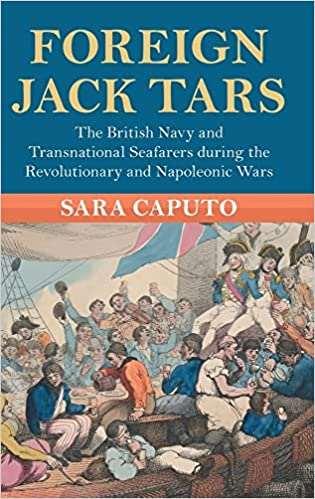
Forcenturies,thetermJackTarhas been commonly and mostly affectionately used in England to refer to seafarers of the merchant marine and of the Royal Navy. The nickname was especially prevalent in songs and broadsides of the eighteenth and nineteenth centuries, and the menthemselves adopted the description with a certain pride. ‘Jack’ appears simply to have stood for a common man, while the suffix ‘Tar’appearstohavebeenderived from‘tarpaulin’and istraceableto at least the 1600s. A sailor's waterproof hat was also called a ‘tarpaulin’. More generally, tarpaulin was and is a canvas coated with tar to make waterproof clothes, and sailors were often represented in popular literature and images as bearing a rolling gait. These seafarers were easily identified by their garments and especially by their large and tarry waterproof trousers. One other feature of the nameseemsobvious – thatitimpliesEnglishnativity – butperhapsthose Jacks were often more in service to the state than born within it. What indeed were ‘foreign Jack Tars’ and what does study of themtellus?
Dr Caputo‘s examination of naval service in Britain in the eighteenth and early-nineteenth centuries is fascinating in itself and in termsofitssocialhistoryasubjectlargelyneglecteduntiltheappearance ofhertimelybook. Thisdebutmonograph,however,ismuchmorethan simply a history of the Hanoverian Royal Navy and the sailors who manned it. By analysing naval service from the perspective of its onboard polyglot variety, a strikingly transnational history is presented. It is a transnational history of a national institution. As such the study
shines important new light on both the nature of the modern state and themeaningofbeing ‘foreign’. Atonceastudyofthemaritimeworldof the Armed Forces, this history understands the Royal Navy as more strictly regulated and anchored in the state than the merchant marine. The difference with service in the army, however, is also telling. In past naval recruitment, seafaring skill is shown to be more important than military skill, and the Navy required recruits to have specialised skills. As a result, crews were drawn from all parts of the world and the composition of a crew determined more by skilling needs than by considerations of establishing or maintaining separate ‘foreign’ groups orcompanies.
With the greatest focus on the years of the French wars, Sara Caputo weaves a narrative based on meticulous archival trawling and analysis. Indeed, the range of sources is remarkable and offers a compelling investigation of multiple types of the ‘foreign’: foreign identified by birthplace abroad, by legal definition of the alien, by linguistic difference, by religious alignment, by cultural construction, by physicaldifference,andfinally,bythesimplefactofimmigrationandthe pursuitofrefuge. Howtheforeignercontributedtothedevelopmentand character of the late-Hanoverian British Navy is thus revealed as significantly multifaceted.
The study points to the central importance of a multiplicity of traits,thehistoricalnotionofthe‘foreigner’approachedindifferentways with multiple understandings of what being foreign meant. A national institution is revealed to be created and sustained by the transnational. It is a paradigm, or perhaps a paradox, that might be transferred with lesser or greater import to other recruited elements within the modern stateincluding(togivesomediverseexamples)universitiesandcolleges, national leaguesportsteams,andtheNHS.
The comparison, however, is with the nationally transnational characterthatwastheRoyalNavyinpasttimesratherthannow. Tojoin uptodayyoumustbeaged16to39andanationaloftheUnitedKingdom or Ireland living here or abroad or a Commonwealth citizen (over 16 if resident in the UK but over 18 if applying from within their own country). Jack Tars are not as foreign as they were, and what is thought ofasforeignhasbothchangedandremainedhighlycomplex.
JRRaven
HANNAH CRITCHLOW, Joined-Up Thinking: The Science of Collective Intelligence and its Power to Change Our Lives (Hodder & Stoughton, 2022, 368pp)

Manyof us willrecallDr Critchlow’s charismaticstartatMagdalenein2017 being crowned two years later by her first full-length book, The Science of Fate. That took an exuberant and accessible look at the neurobiological web in the brain that makes us, from the start, who we are. It also demonstrated that complex neurosciencecanbewrittenaboutnot just energetically but plainly. No specialist could possibly be left less than impressed, but a theologian, lawyer or geologist could be swept along,andilluminated,bythefuntoo. She has done it again with Joined-UpThinking.Thetopicthistime is that elusive concept, intelligence. How, in the twenty-first century, do we characterise and follow the direction of human intelligence, the identifiable capacity in people everywhere to solve problems and improve their earthly lot? Do we get cleverer andcleverer?
On the very first page Hannah Critchlow proposes that optimal intelligence,inanygivenperson,mightinfacthavecomeandgone. She asks – youcanvisualiseawrysmile –whetheritcan‘reallybethatwe’re getting stupider’. Her book is an elegant wrestle with this global snafu, a wise and articulate account of how combined thinking could, with advanced technology being what it is and likely to evolve ever further, secure a safer future than the one that so threatens and unsettles us in 2023.
Putindoesn’tgetamention. MarieCurie,CharlesDarwin,George Eliot, along with Greta Thunberg, the late Jonathan Sacks and Bruce Springsteen,do. HannahCritchlowisthoroughlyattunedtotheamazing things, and shared pleasures, great individuals have brought to
humanity, but her main point, constructed out of ten narratively crisp chapters, is that the more often heads are knocked together, the richer andriperoutcomes forourcollectiveaspirations, or indeed ills,willbe.
The central trope is of course the brain. Decoding it, across both her pioneering books, is a bit like a historian looking at 400 years of writing, commerce and image-making in numerous city-states to arrive at a resounding, multifarious definition of the Italian Renaissance. Our writer is theultimateBrainTutor.
‘It’s been calculated that a whopping 11 million bytes of data are senttoyourbrain everysinglesecond,’shestates. Theorganisdepictedas not just the most dynamic thing on earth; the lay-reader is also given many new tools to map it. Most will, for instance, know the hippocampus (learning, memory) and perhaps the words ‘prefrontal cortex’ (behind the forehead). The amygdala maybe not so familiar: a ‘small almond-shaped structure in the middle of your brain’ that sparks fearandanxiety. Justasamazingisthe‘insularcortex’…and,well,what about the overwhelming ‘dorsal anterior cingulate cortex’ (both for emotions,empathy anddecision-making)?
But let us be clear. Hannah Critchlow is less interested in individualtendencies,thesingulartalentofascientistoraninventor,say, thaninmultiple:abringing-together,acongregationofsolution-makers. One of the most trenchant chapters is the last, ‘Melding Minds: Us and AI’ (as in artificial intelligence). It is extremely timely, given how much – andhowcontroversially – AIcurrently troublesthenews.
Aware ofthechallenges,HannahCritchlowisdeclarative:
‘I’m thinking about ramping up our collective intelligence by literally bringing mankind’s minds together, fusing our cognitive capacity in order to create a super-brain cloud aided by artificial intelligence. This would involve wiring up human brains to create a living hive mind. It might sound like the stuff of science-fiction but it is within plausible reach.’
Thisisfightingtalkandreflectsentirelythebook’svisionarypropulsion.
Joined-Up Thinking is in the end many things: a guide to the brain andtomanymysteriessolvedbyneuroscientiststheworldoverthrough the decades. To that extent, it is a capacious tribute to fellow travellers,
with thewriterdeftlyweavingtogether – joining-up indeed – theresults ofextraordinaryresearchthatgiveher textsuchlustreandauthority. Itisalsoahandbook,withmostchaptersendingonasketchforan exercise, either solo or in groups. Even Magdalene gets a look-in, with fiveFellowsengagedinafascinating‘escape-room’ adventure:nonames of course but many will recognise them! Above all, the book is a call for improved – ifcerebral – co-operationeverywhere. Joined-upThinking has founditsundaunted campaignerandchampion.
JamesWoodall
(RoyalLiteraryFund Fellow,2017–20)
